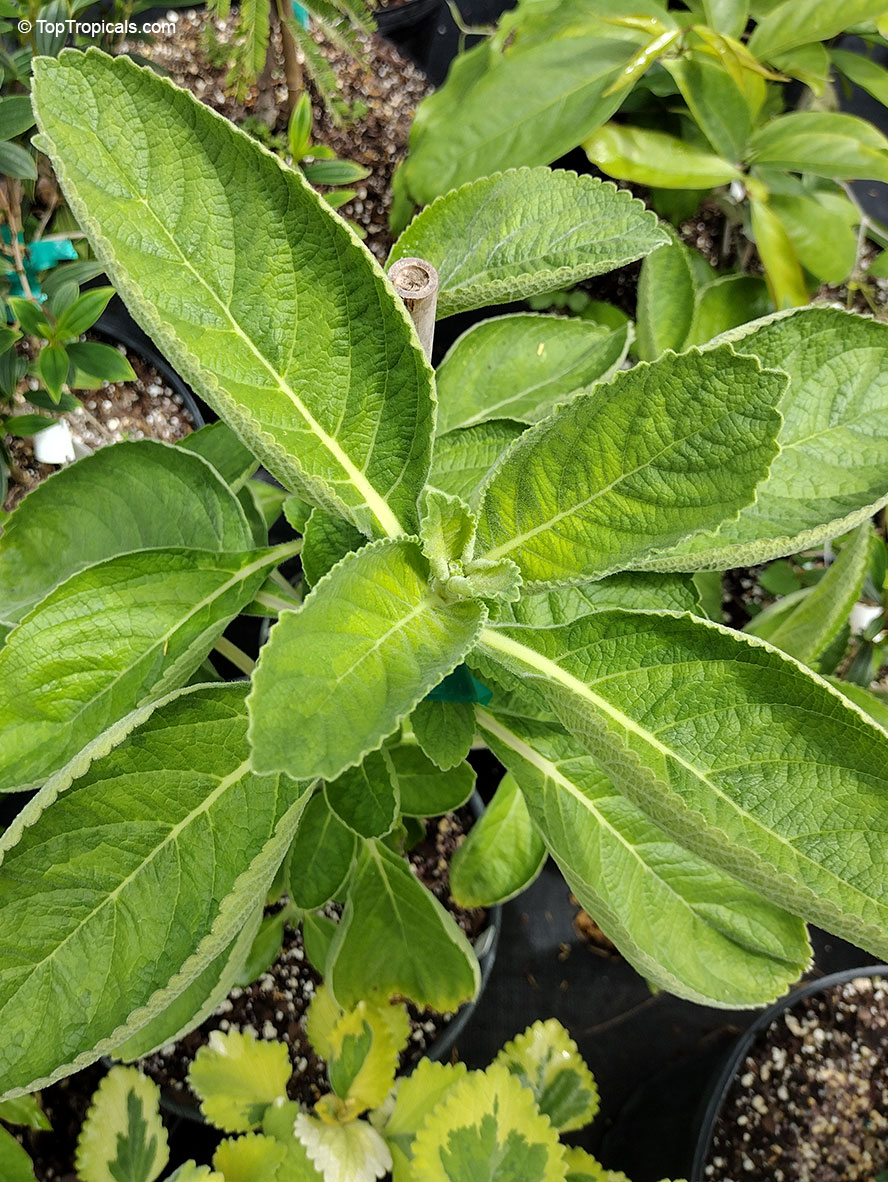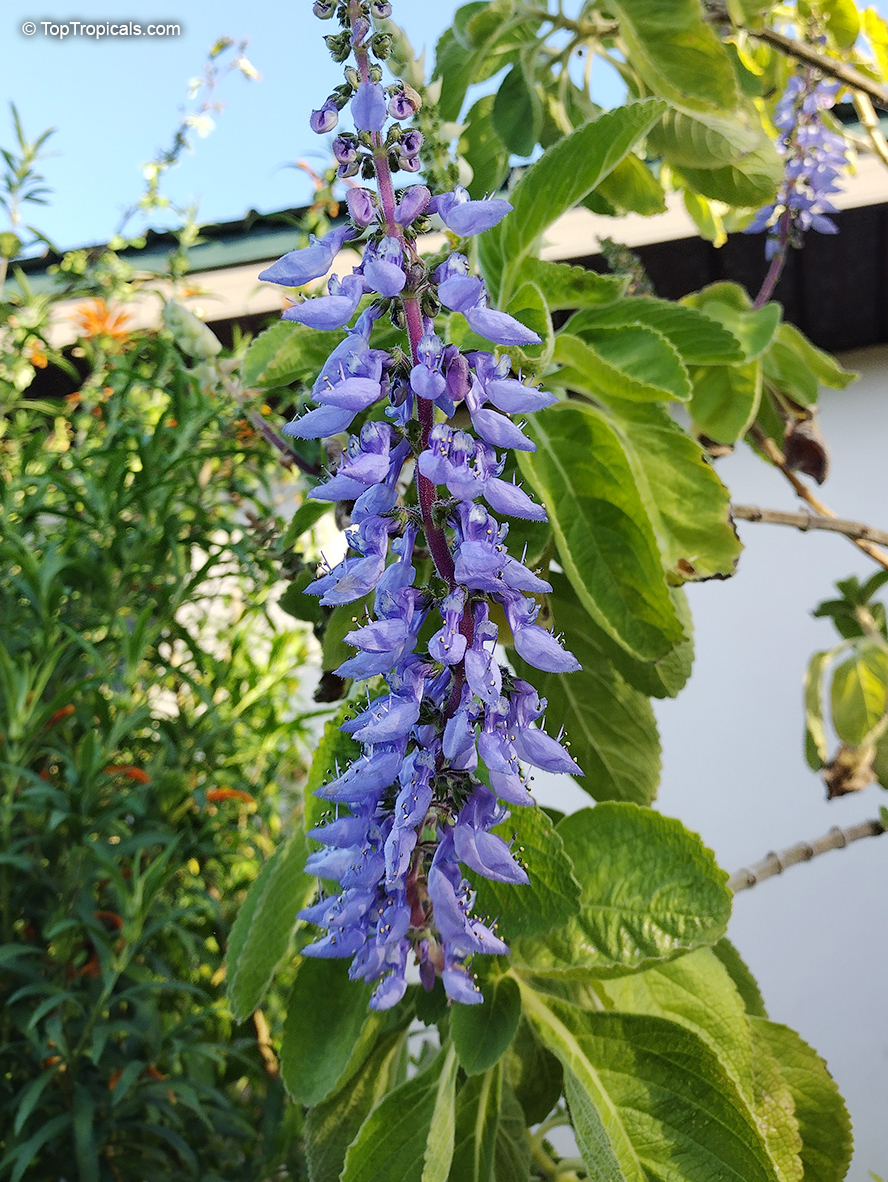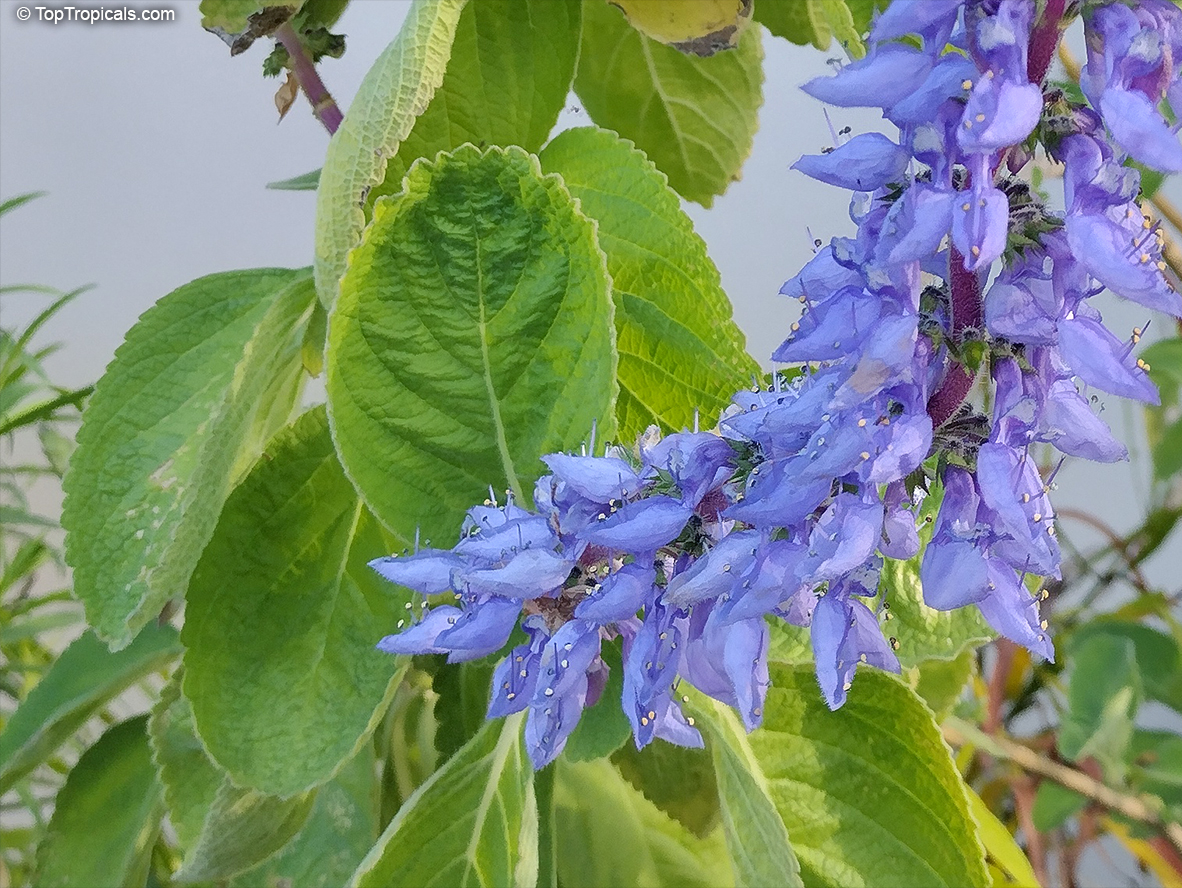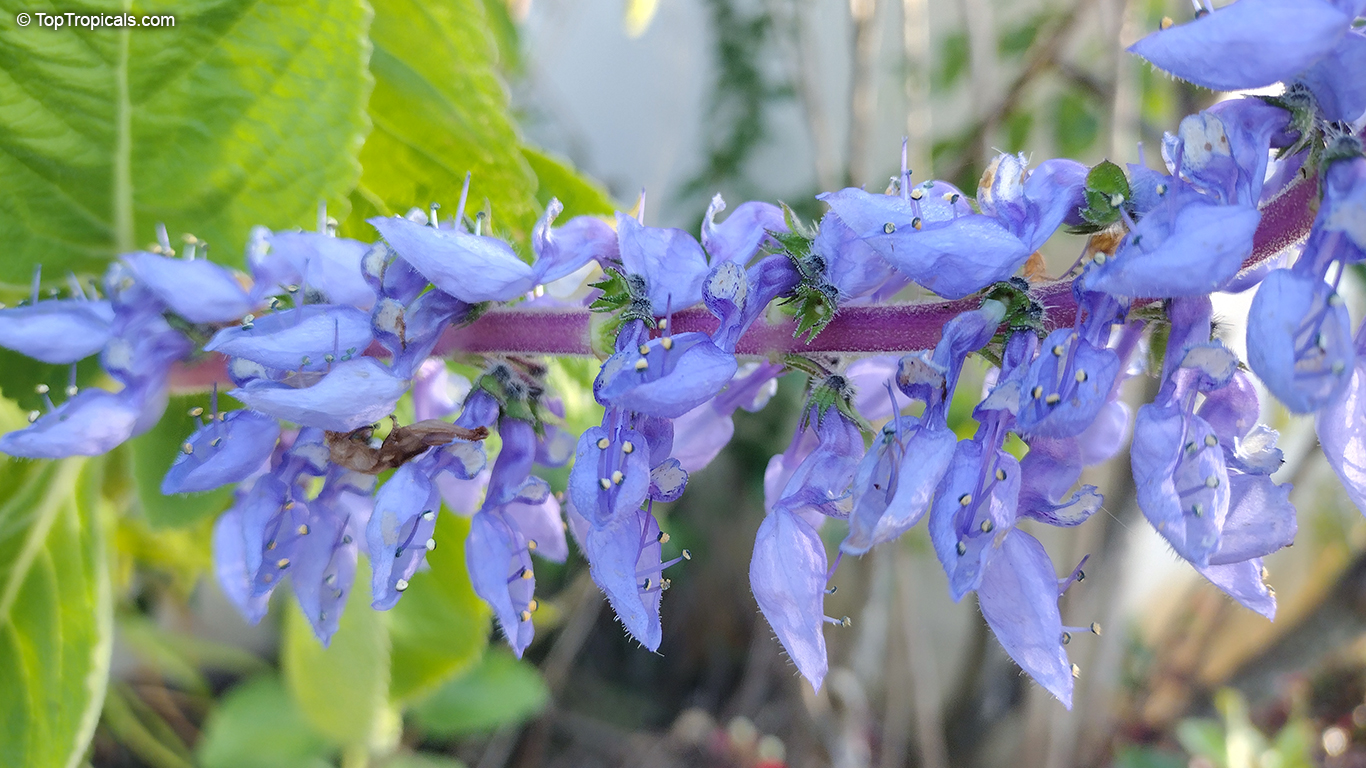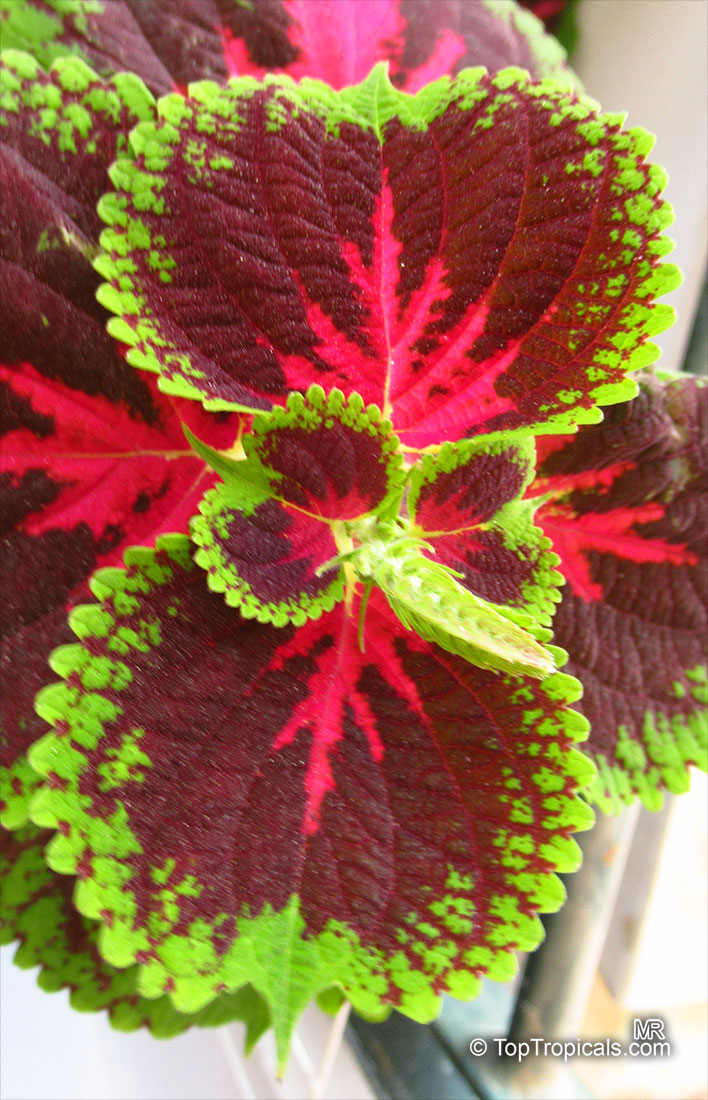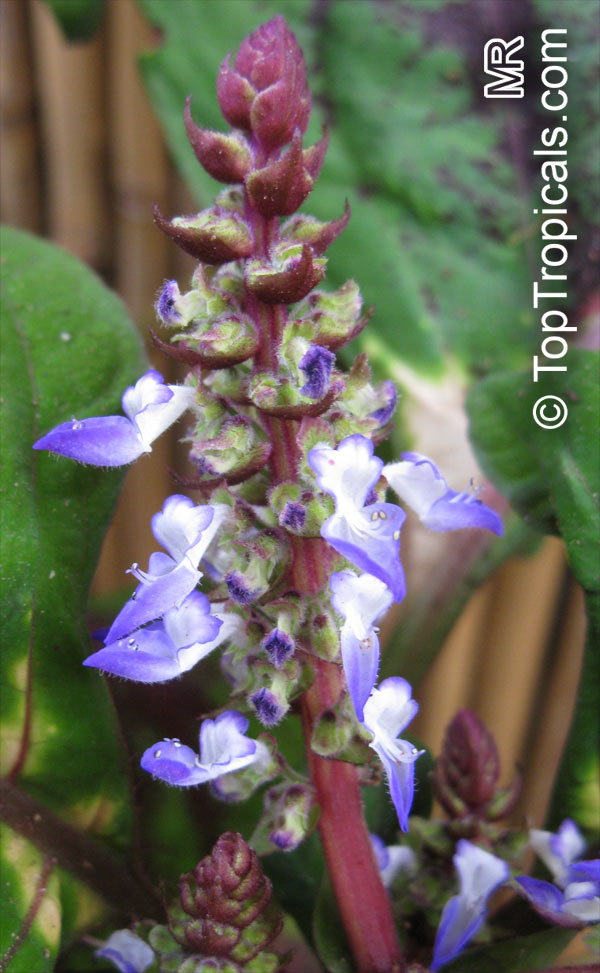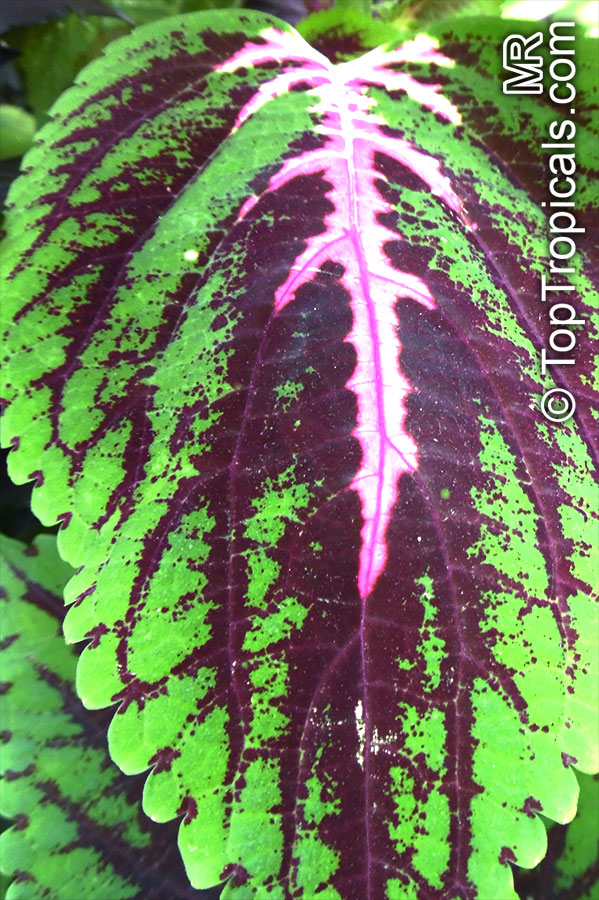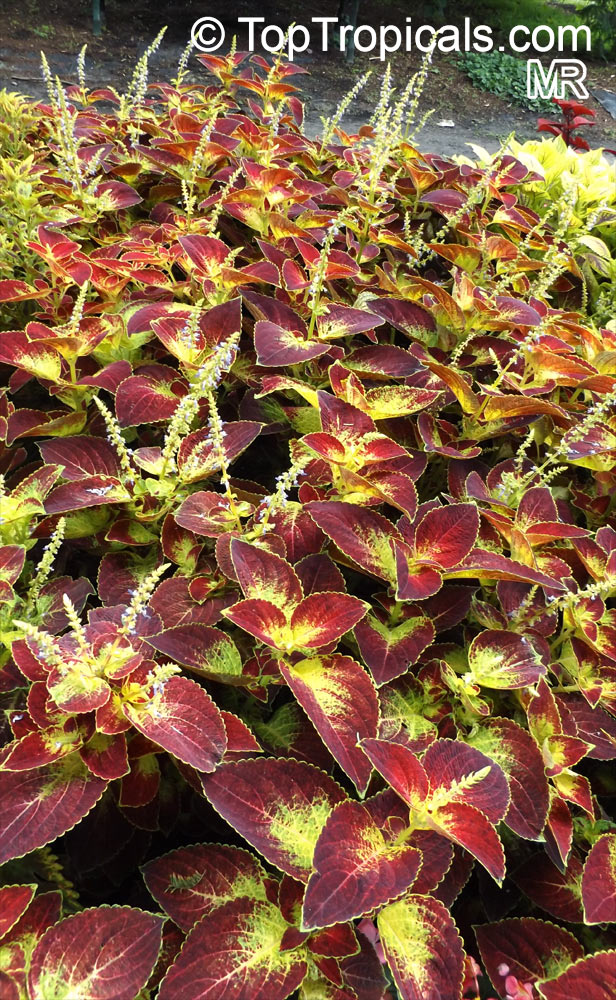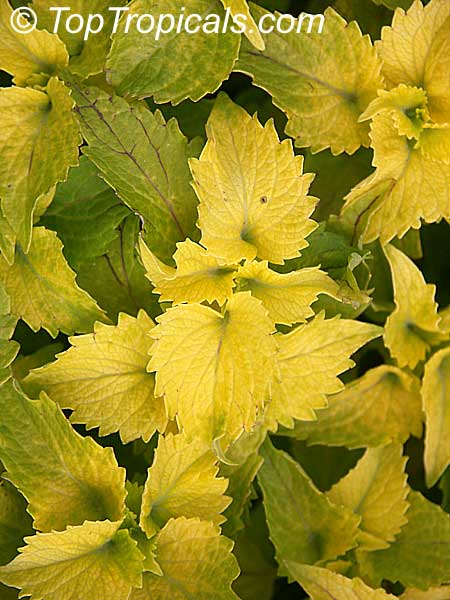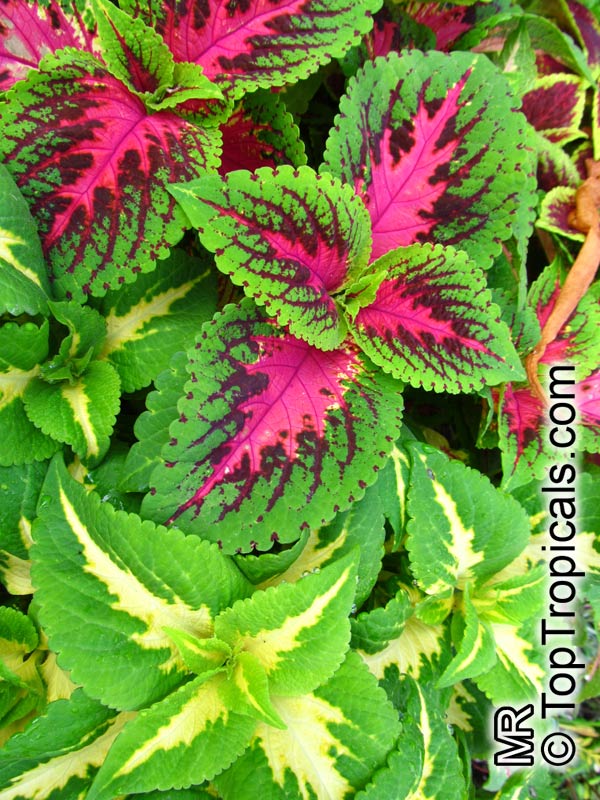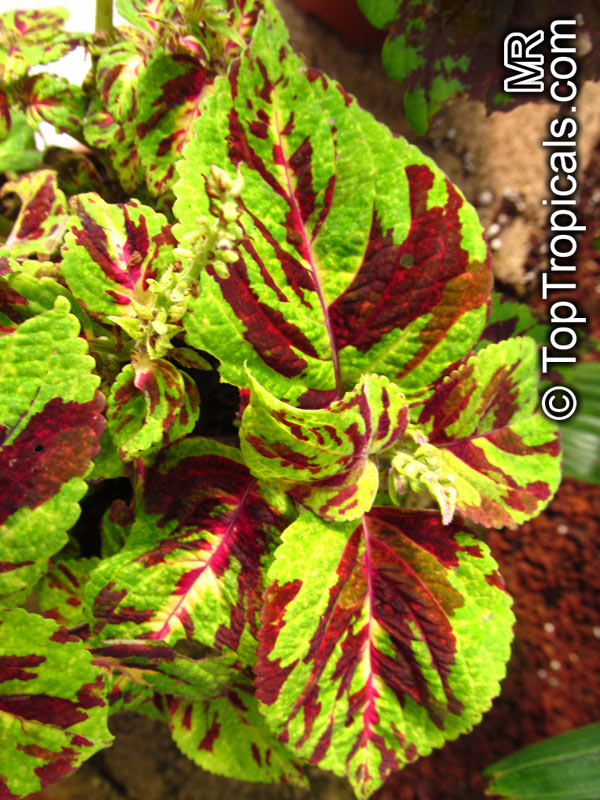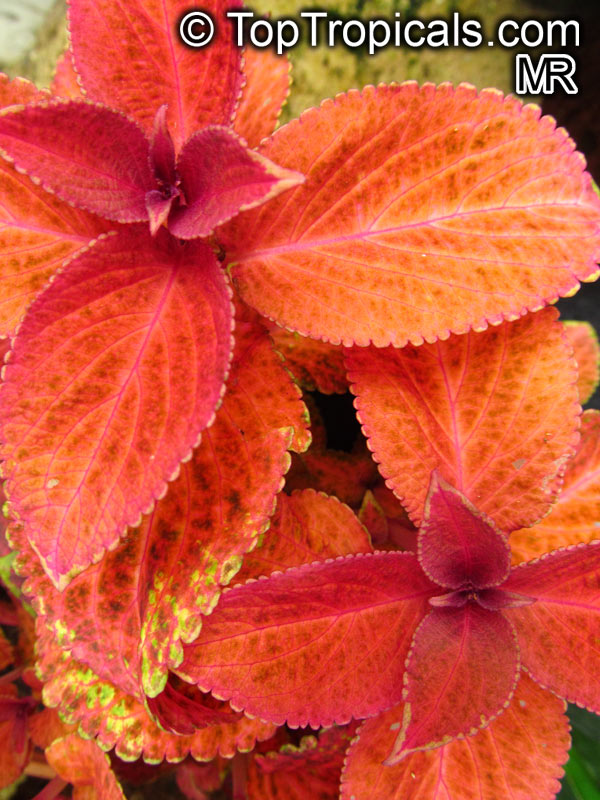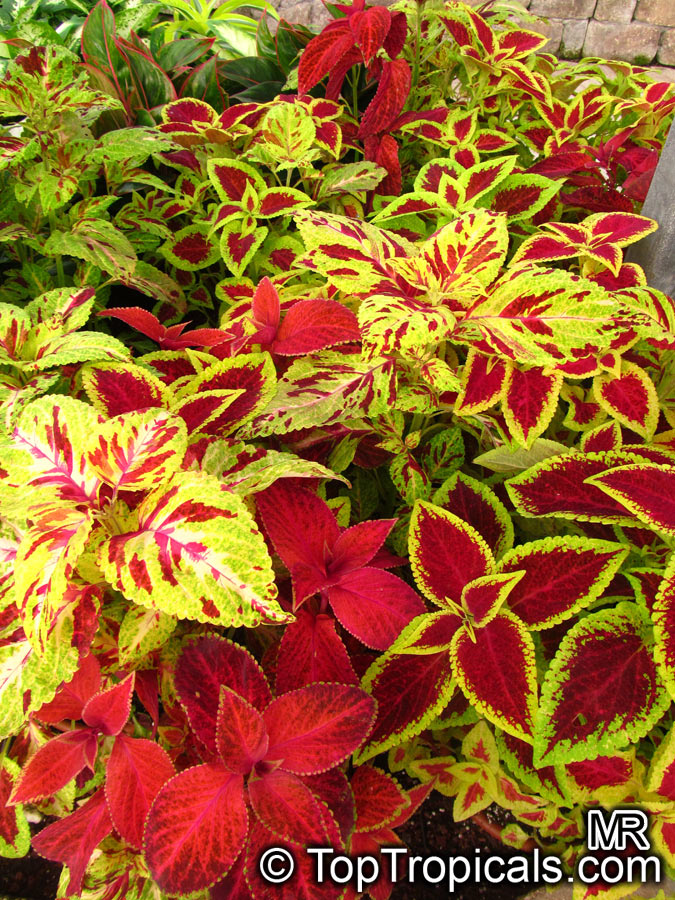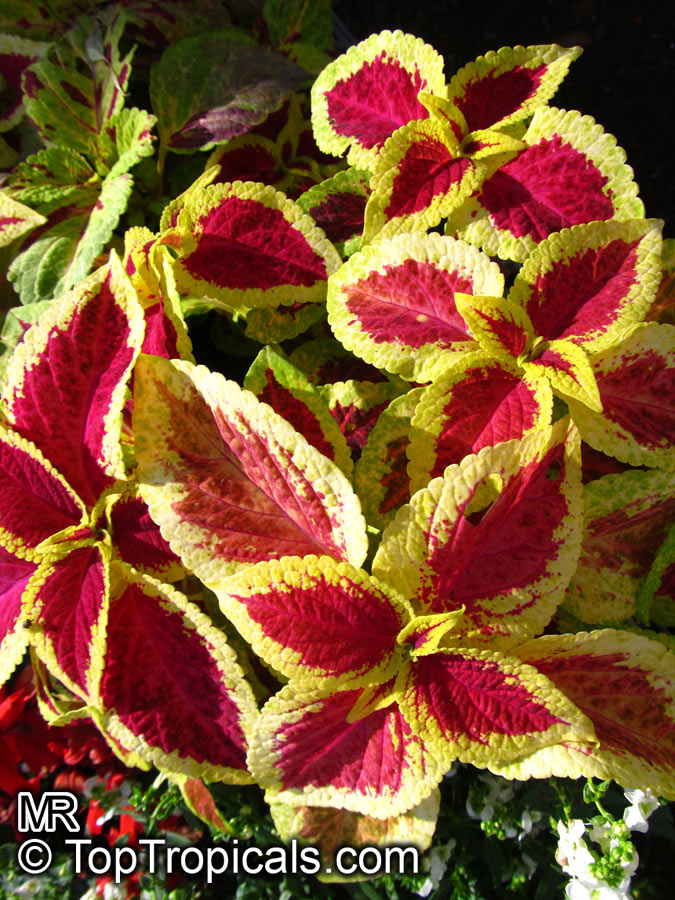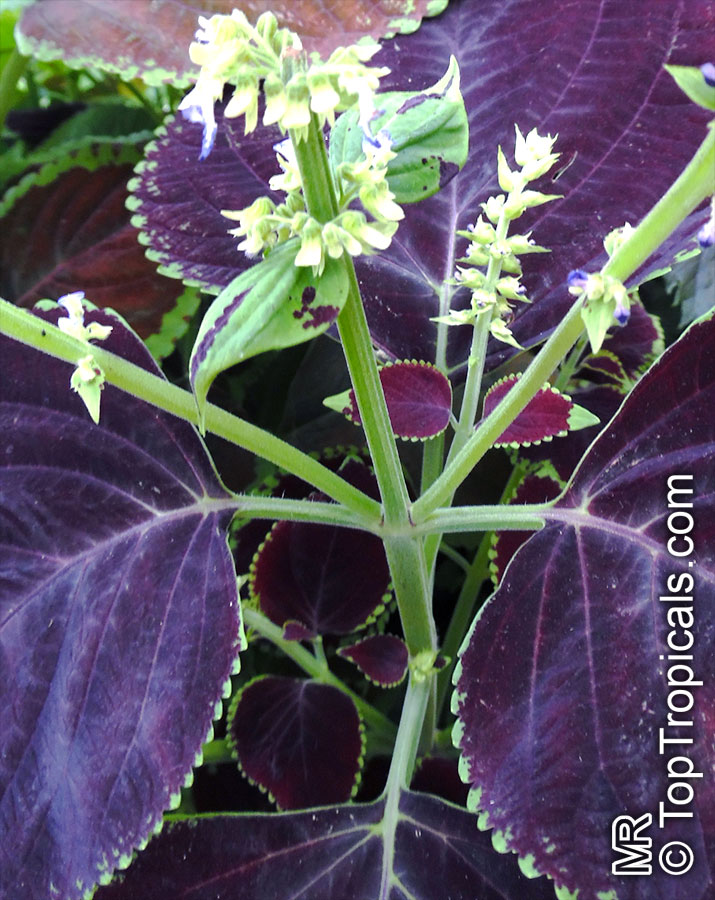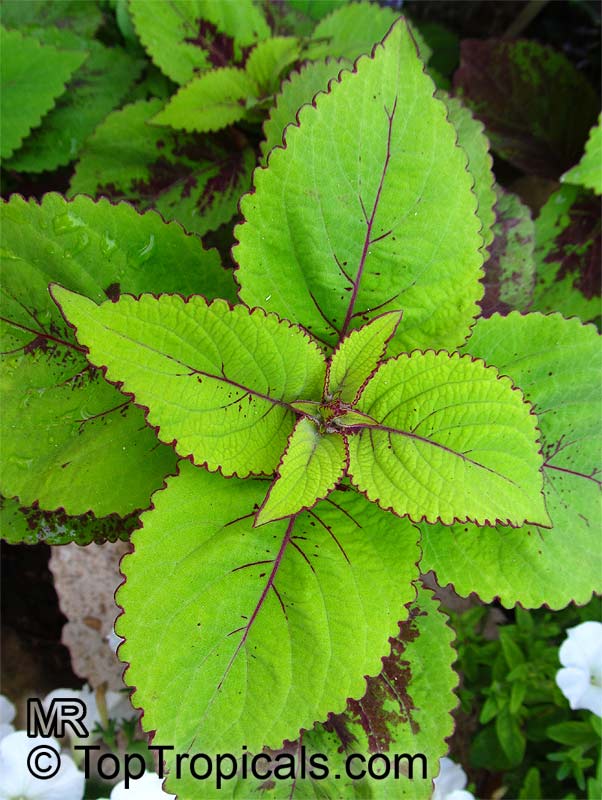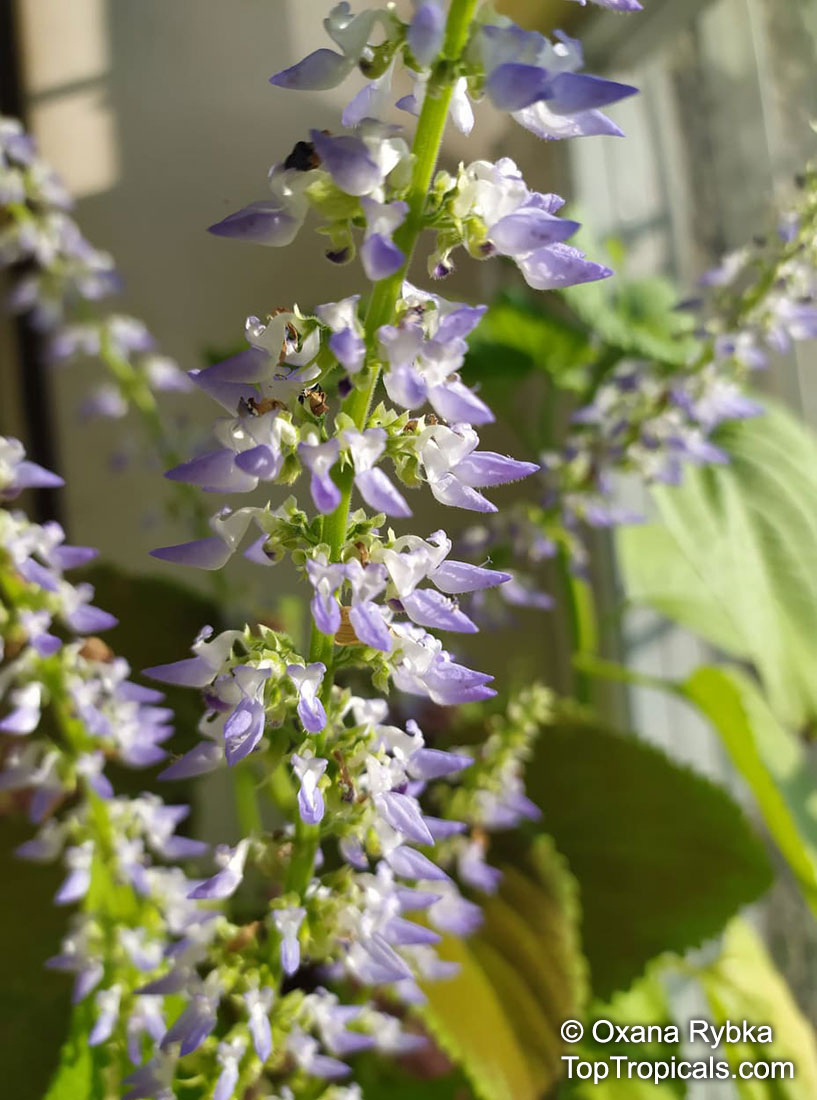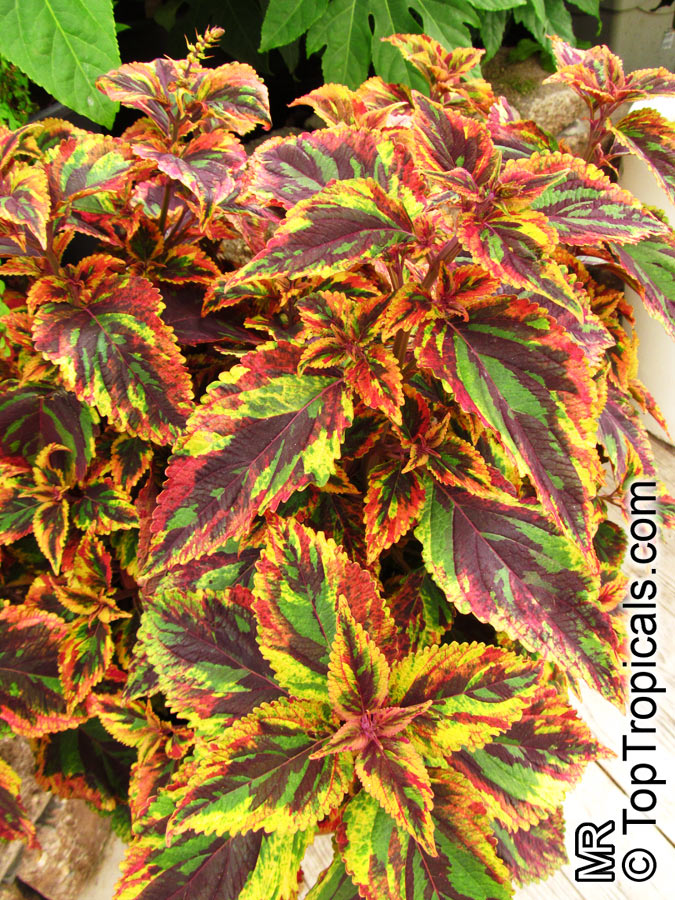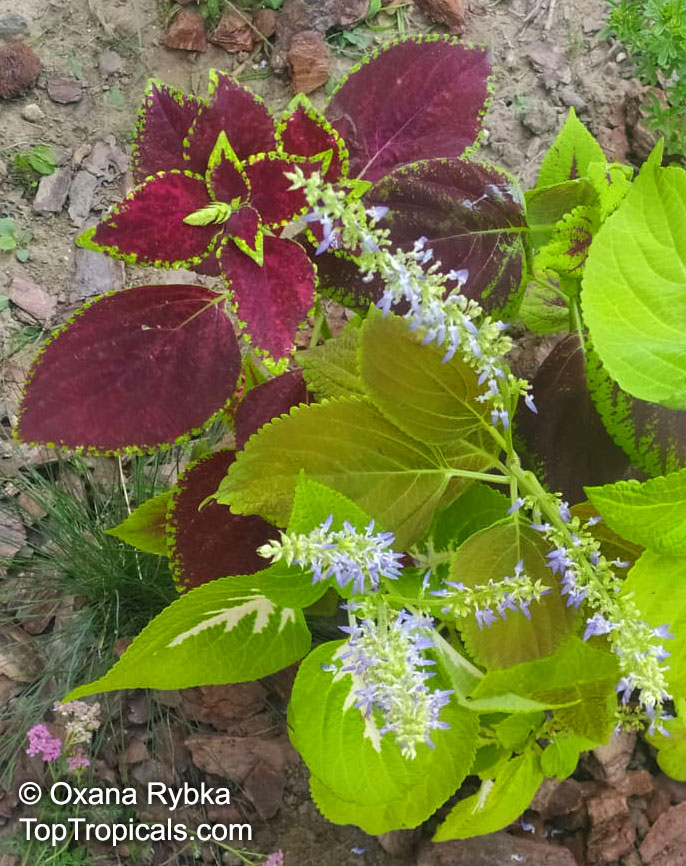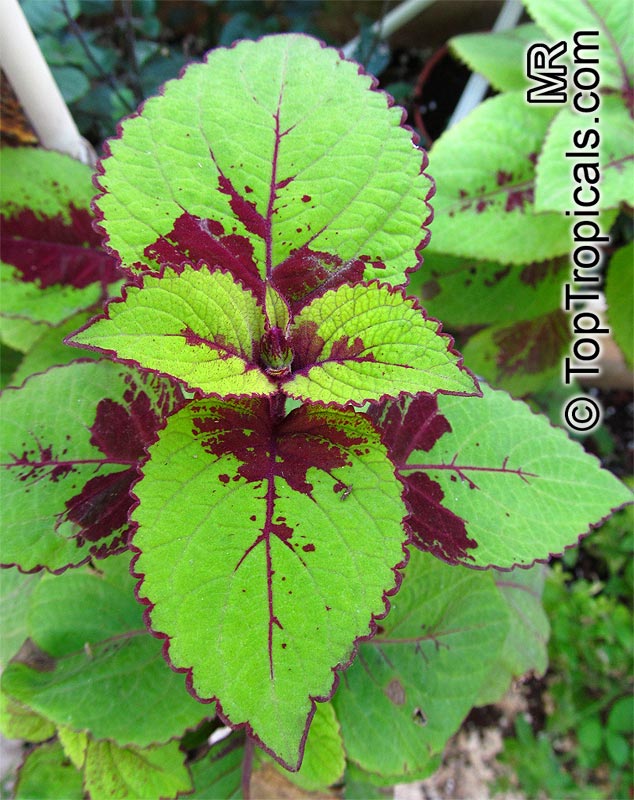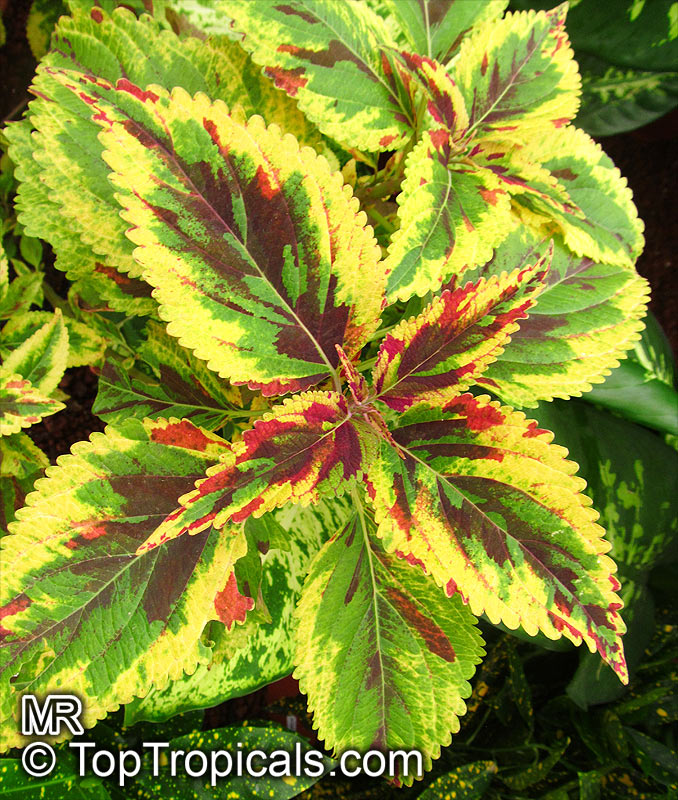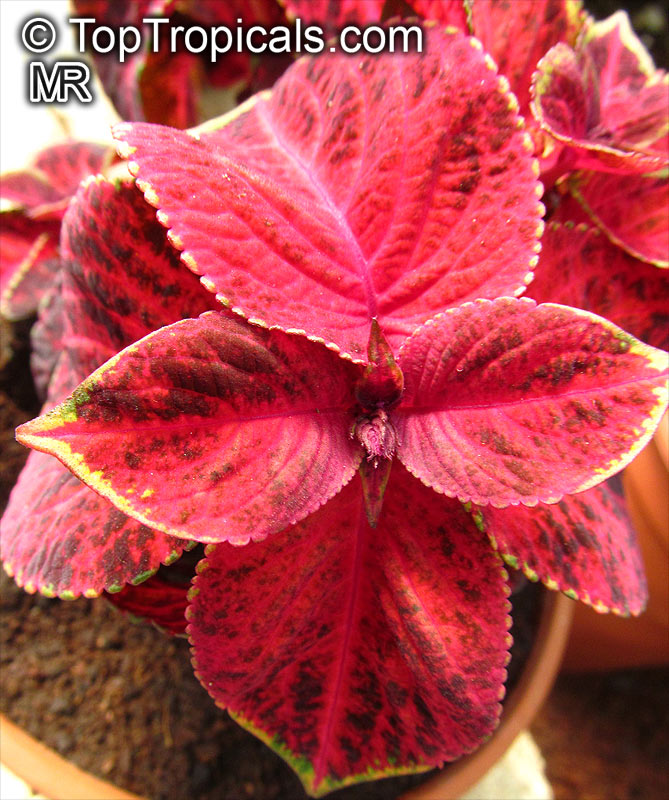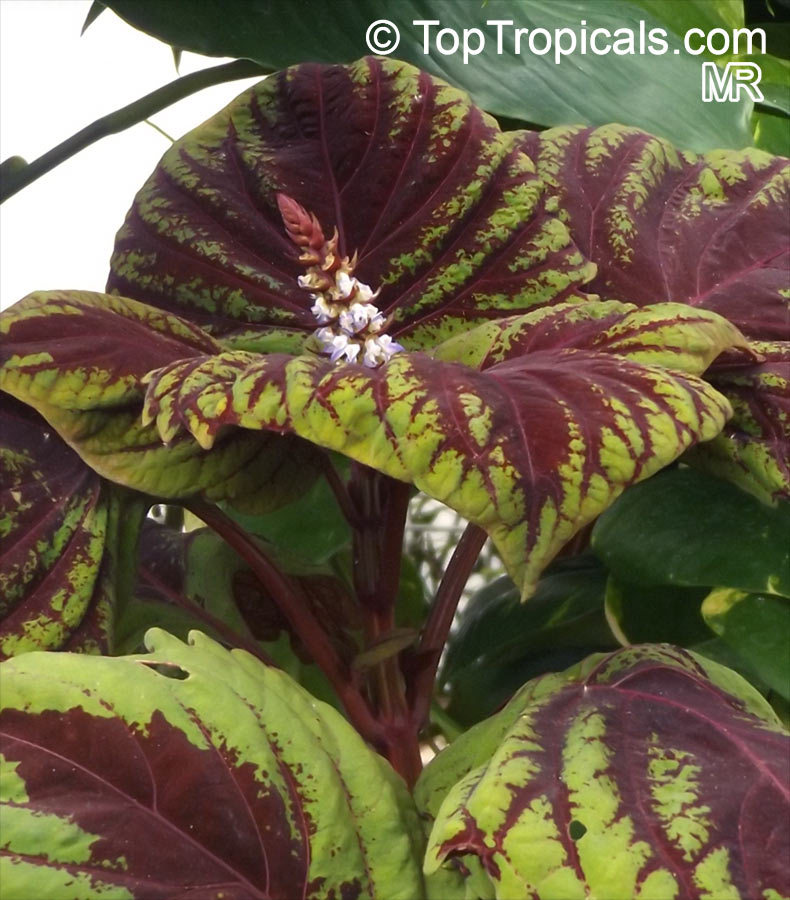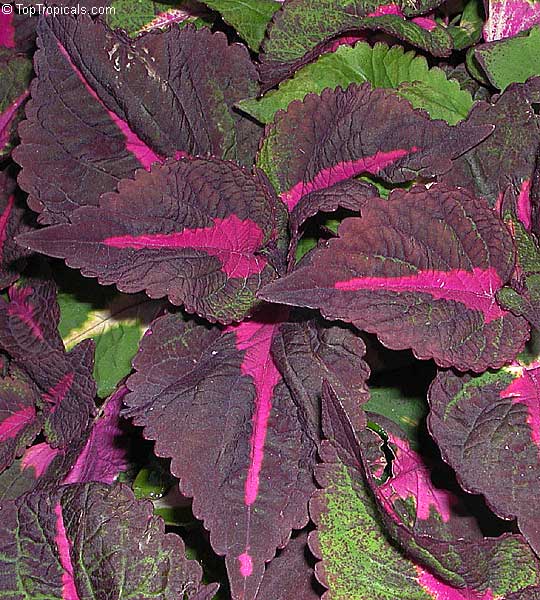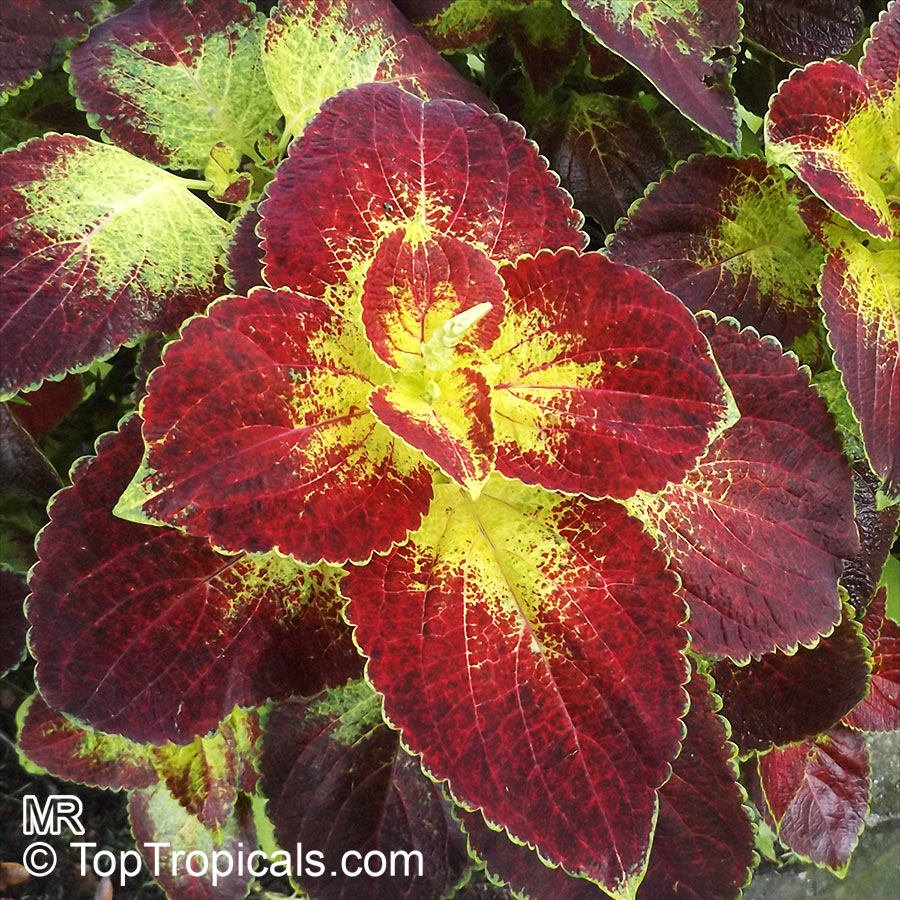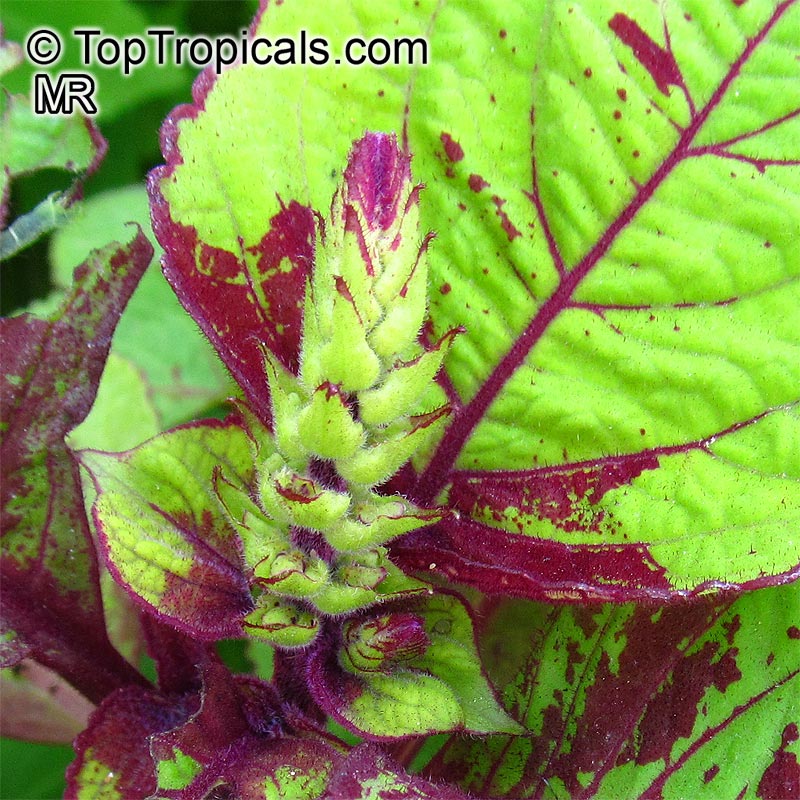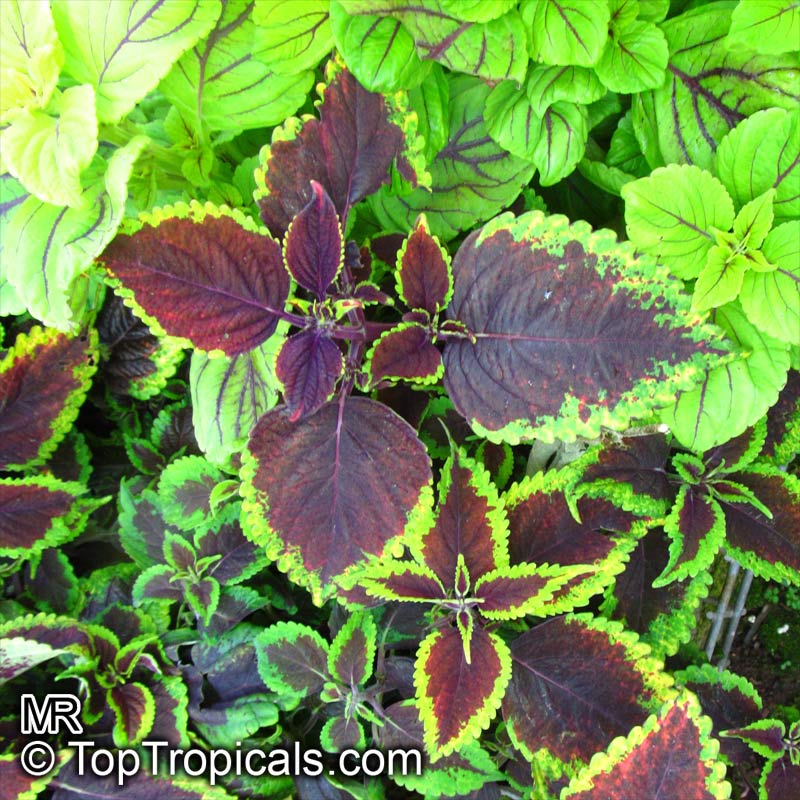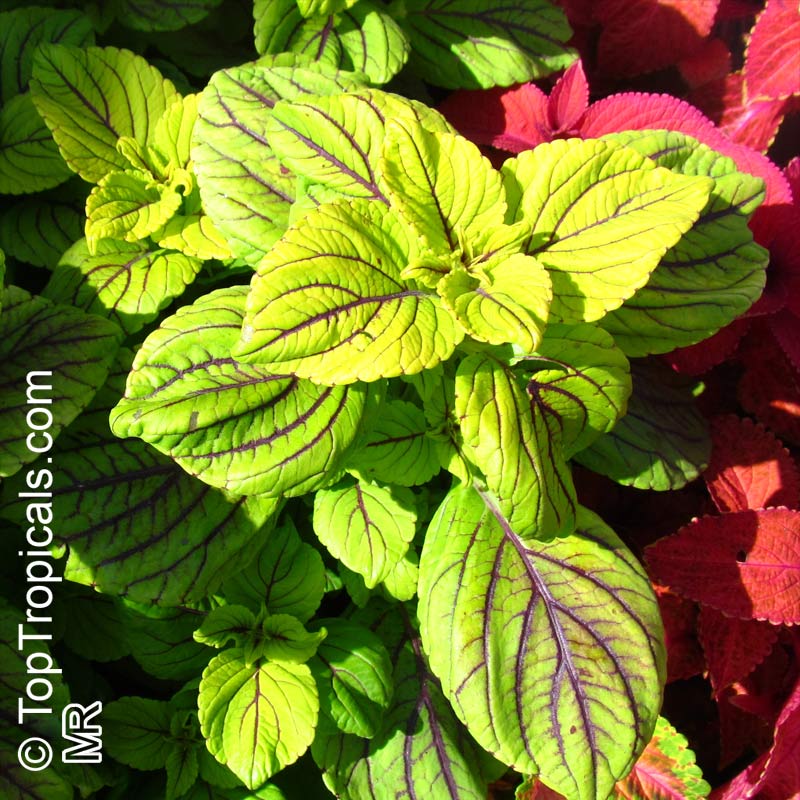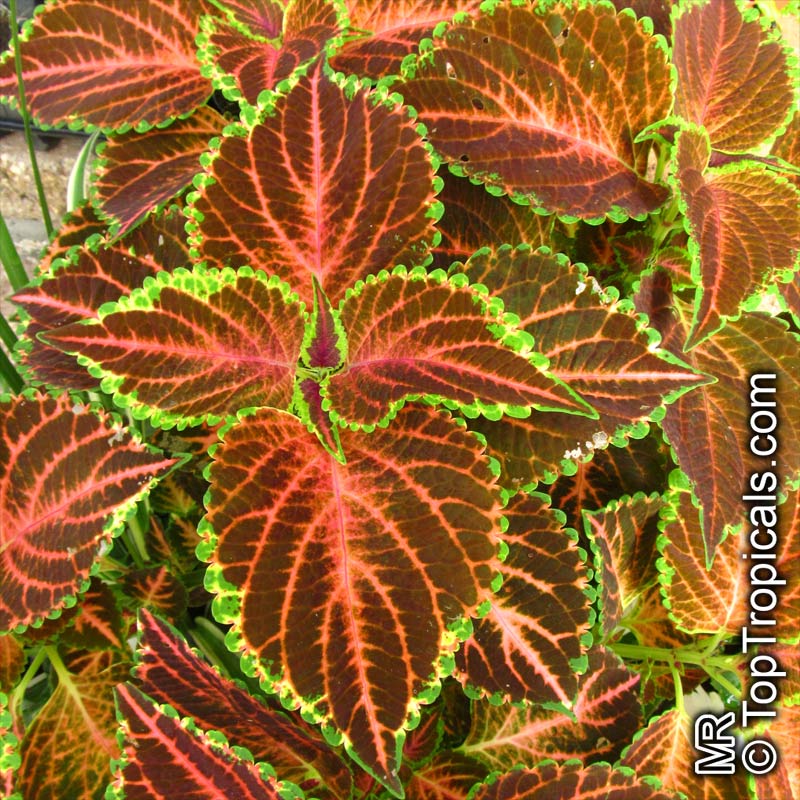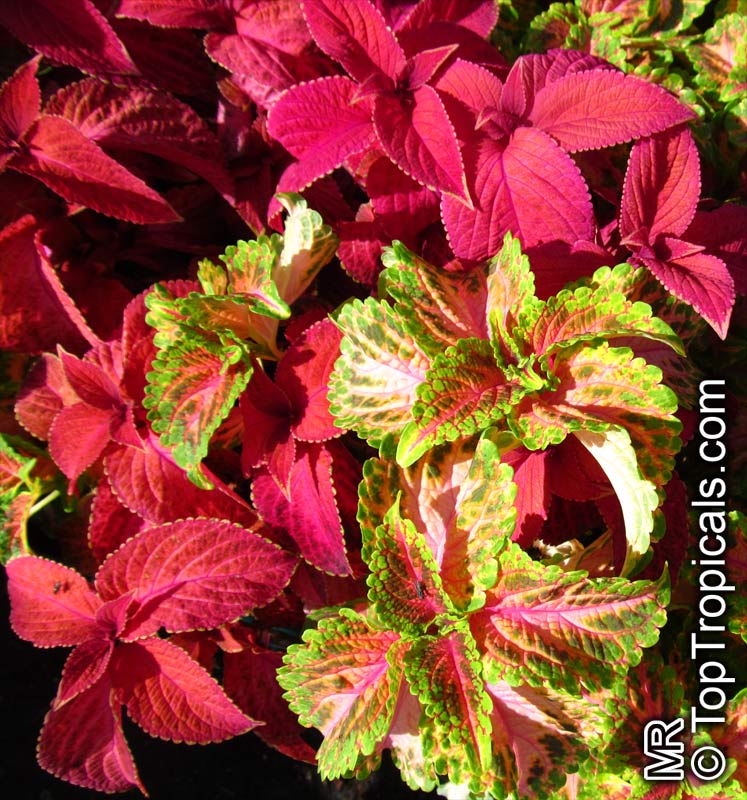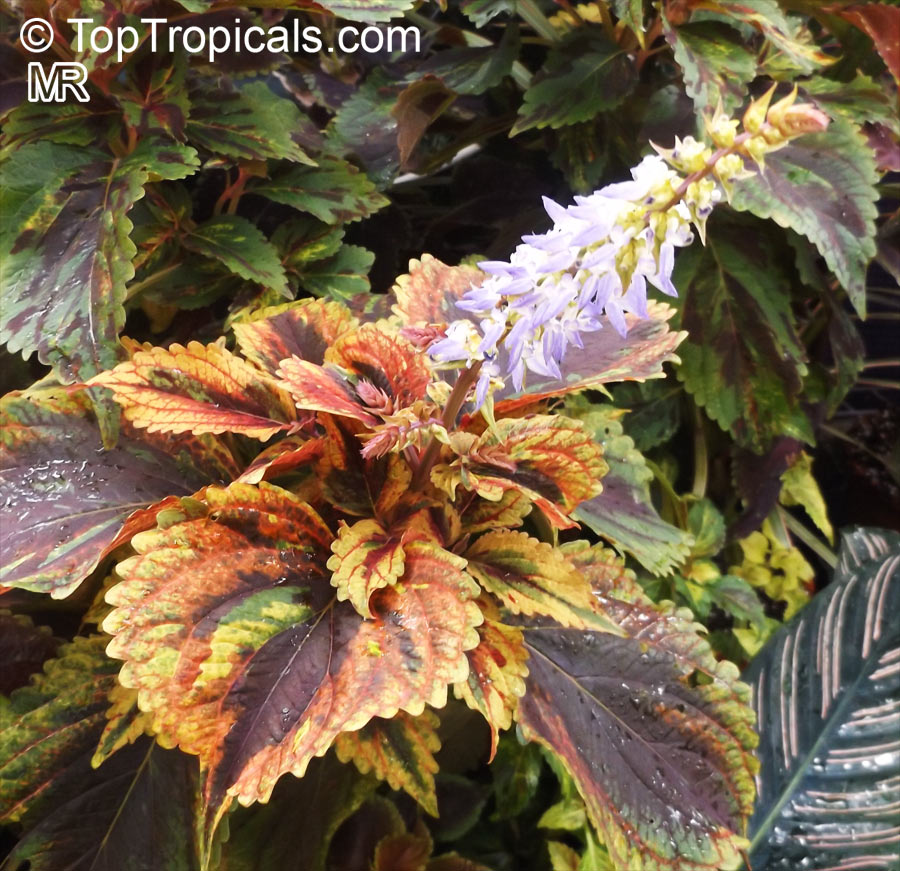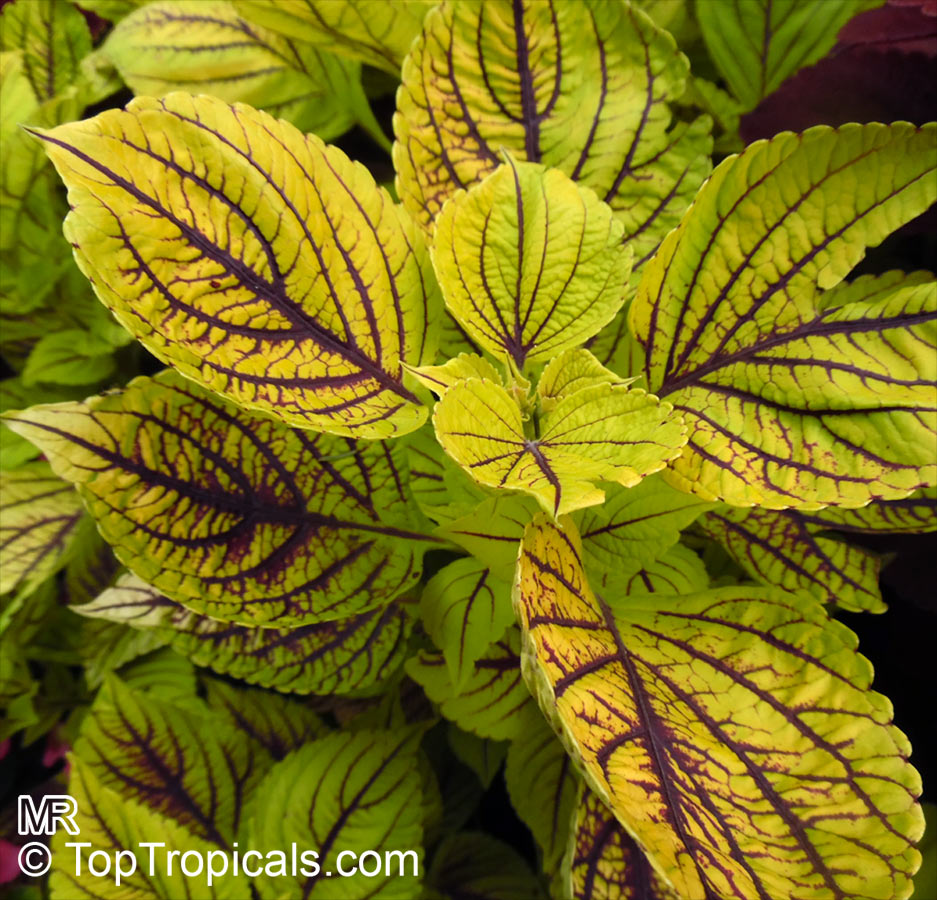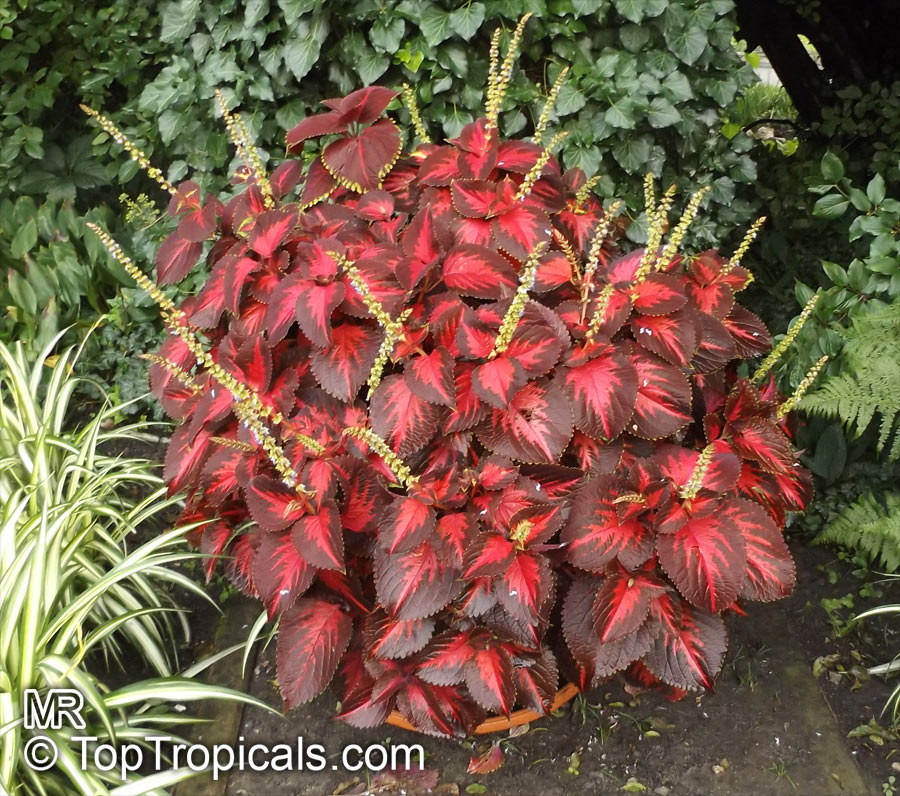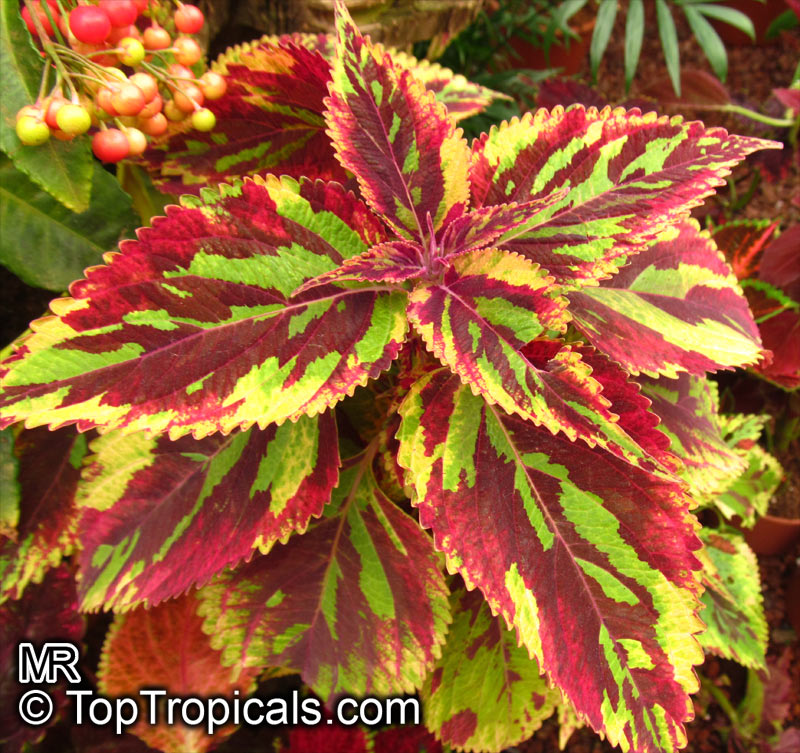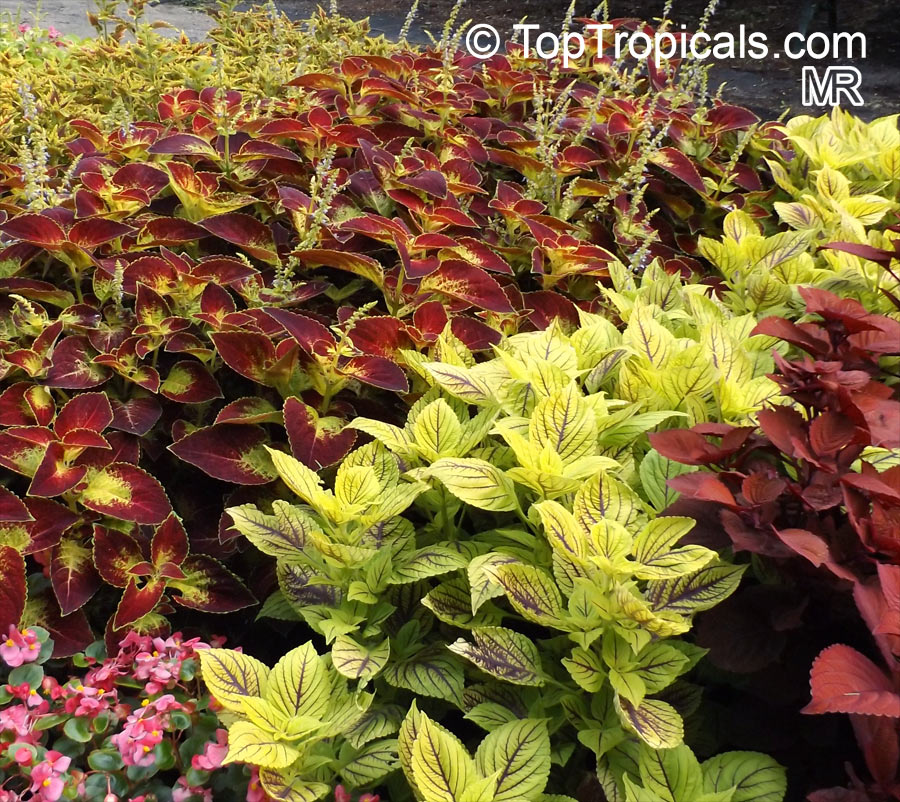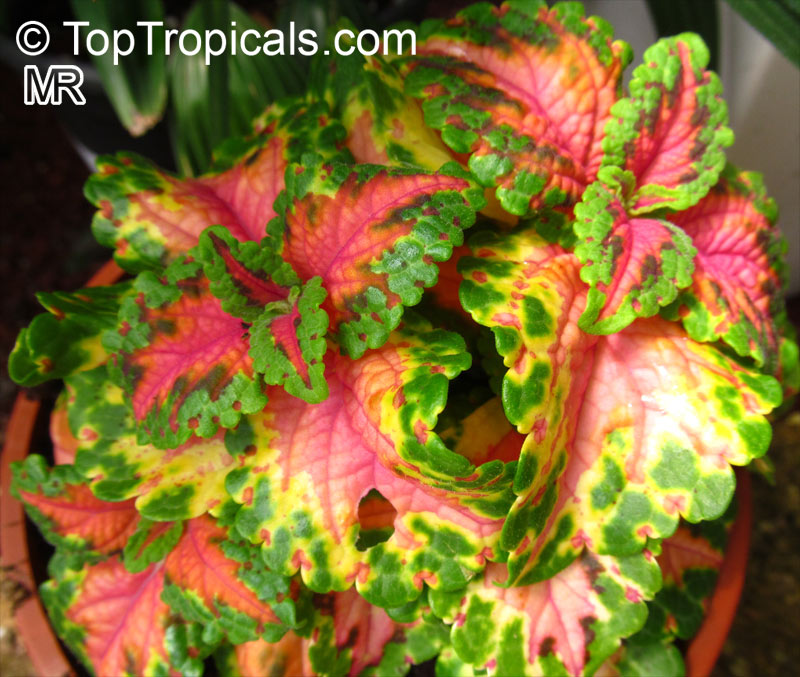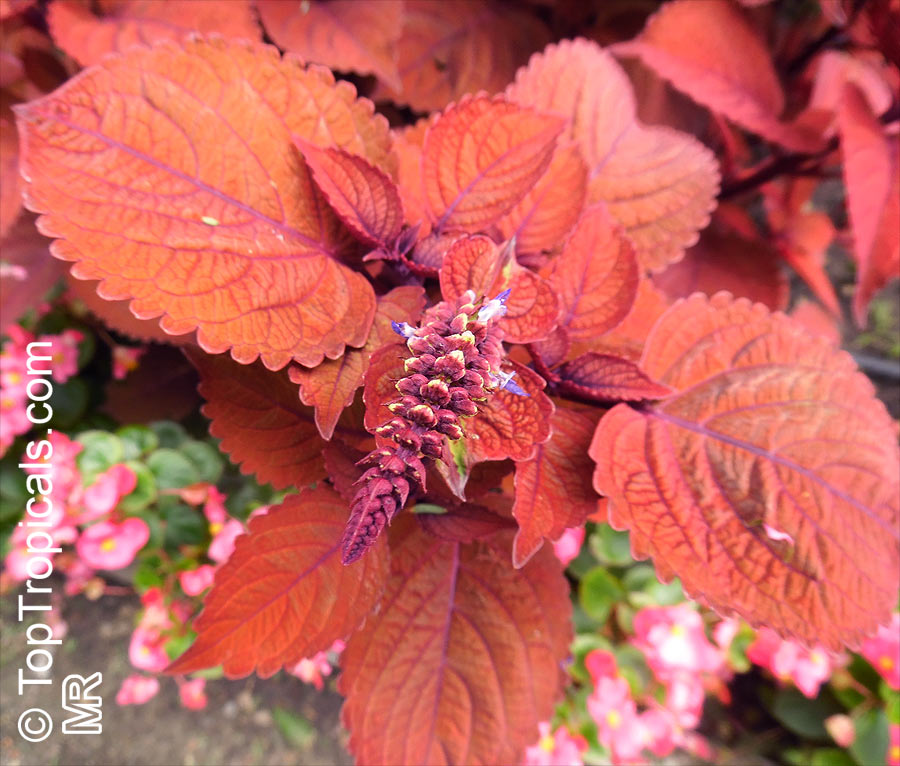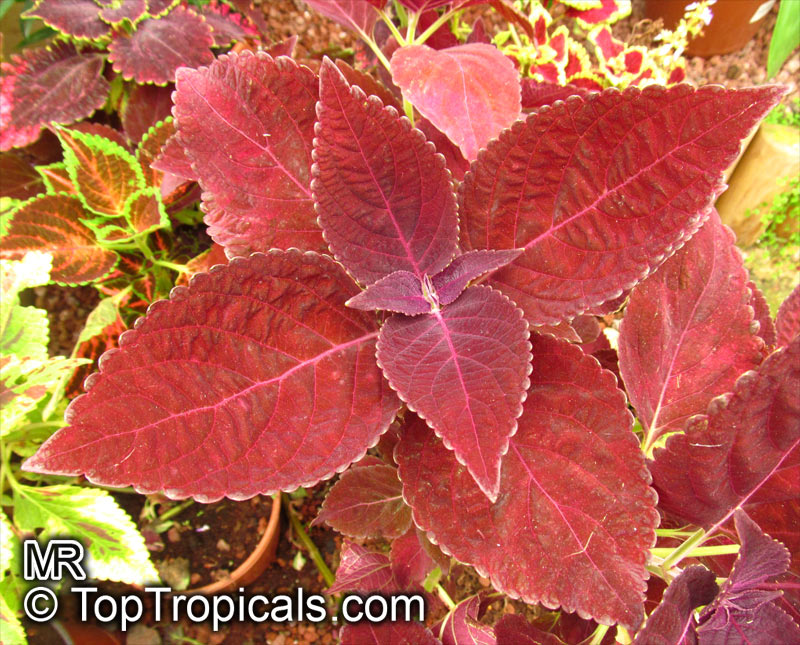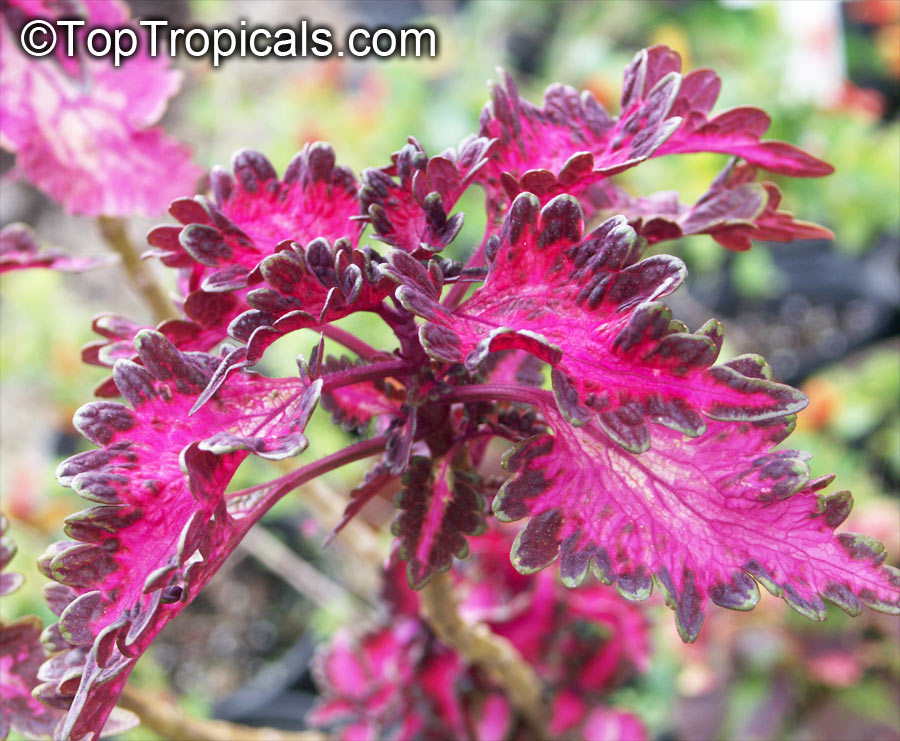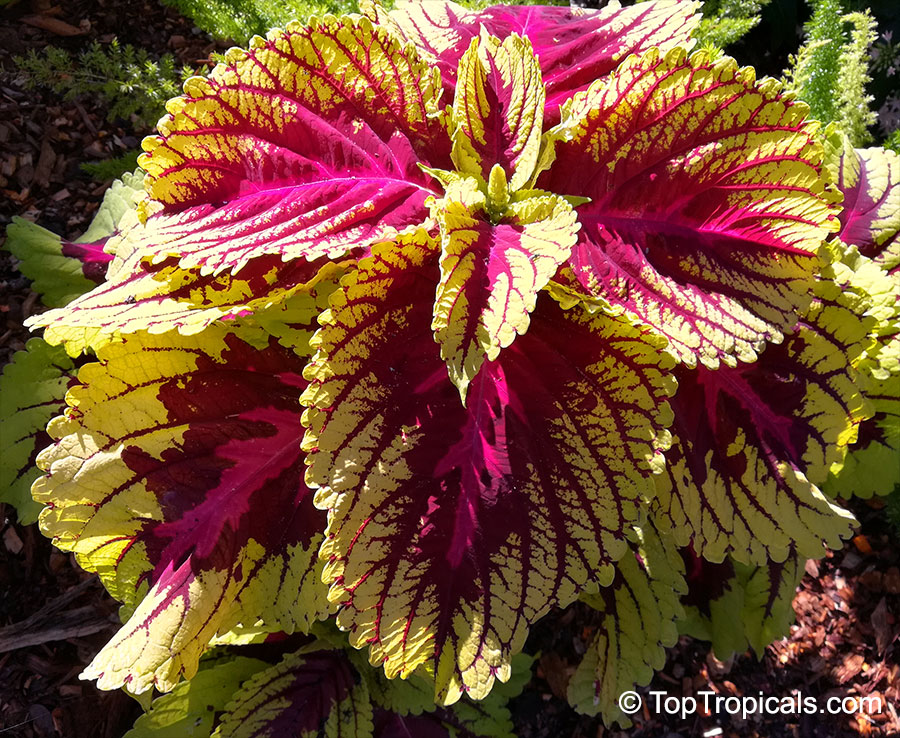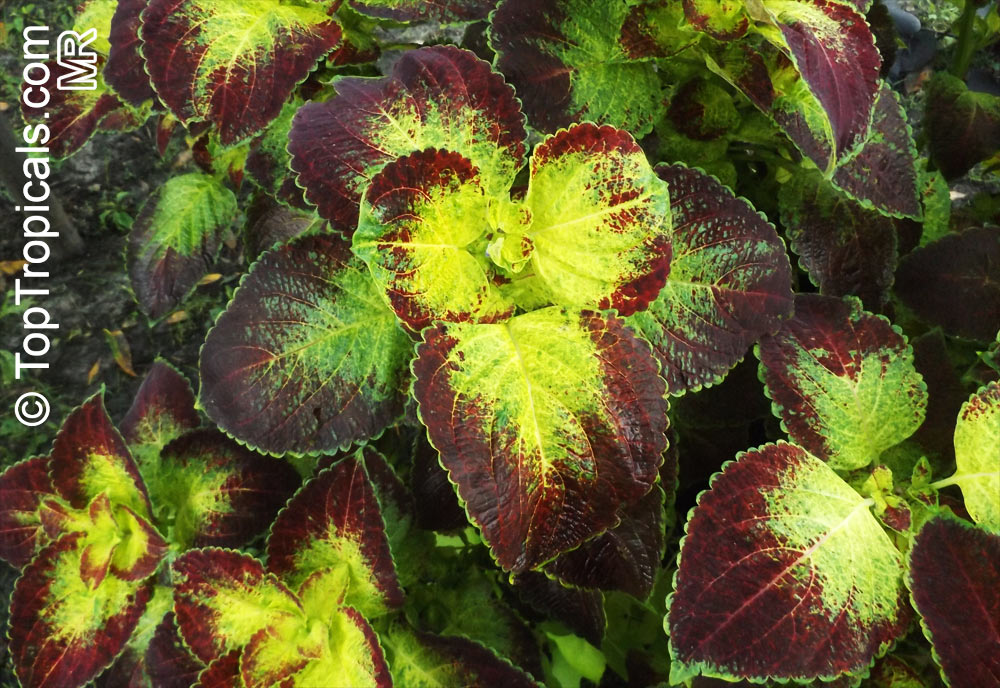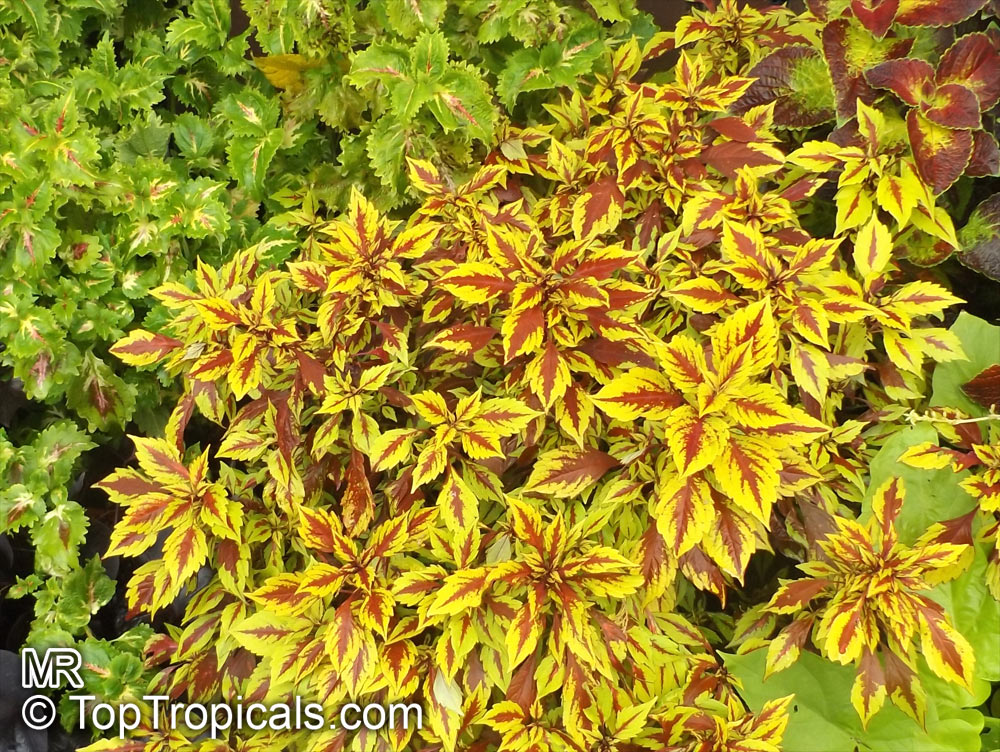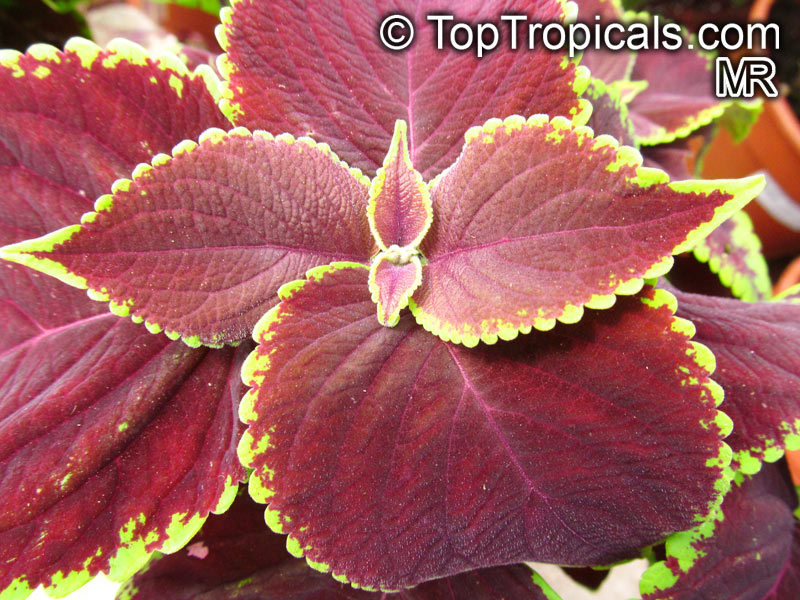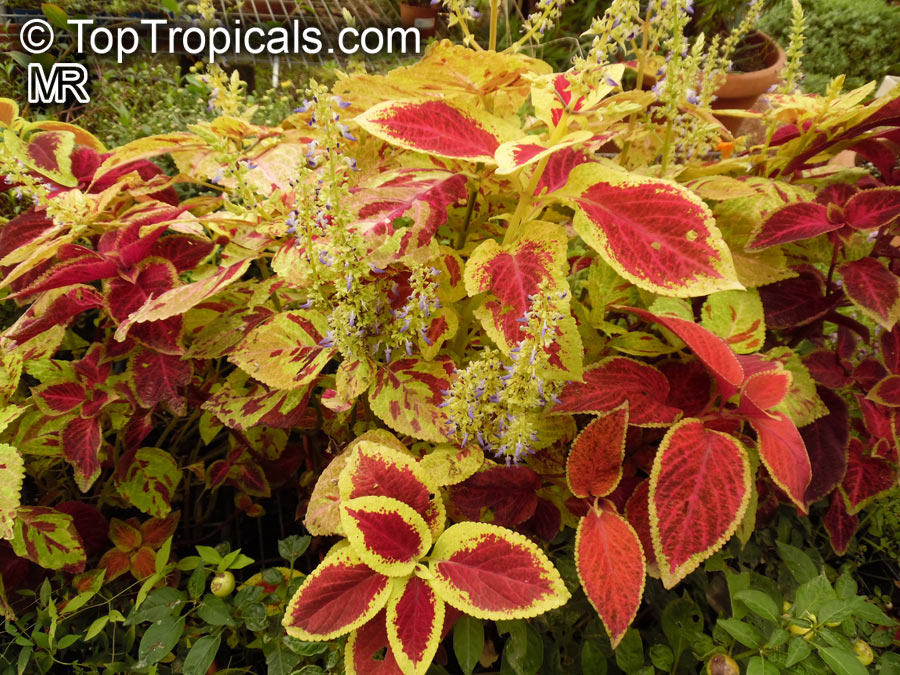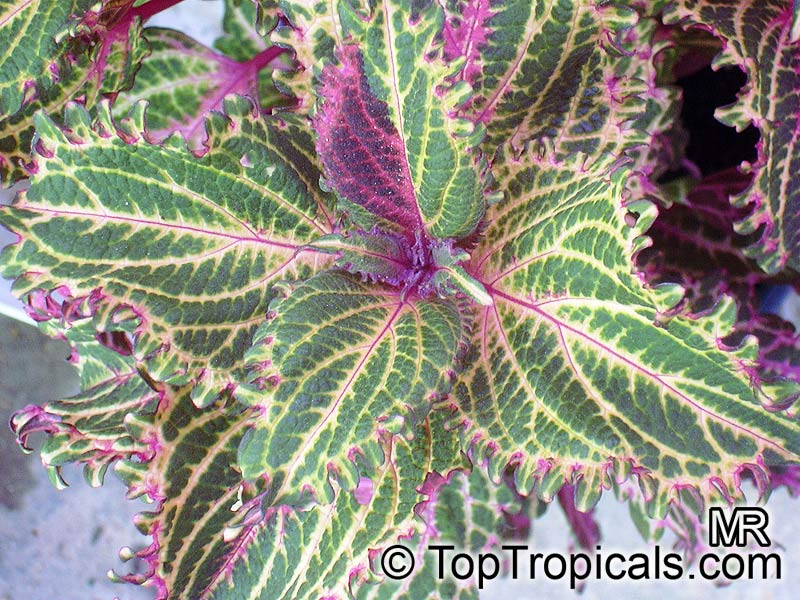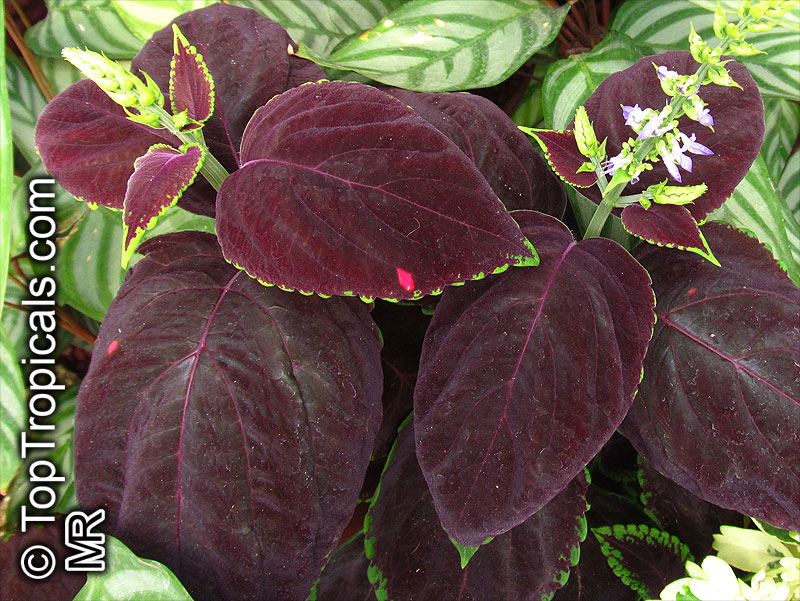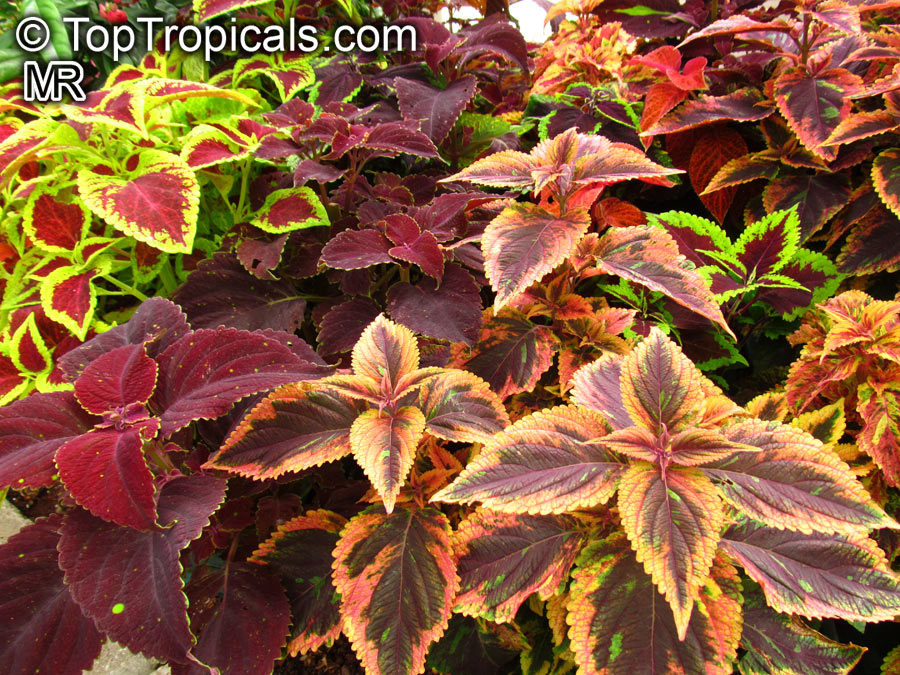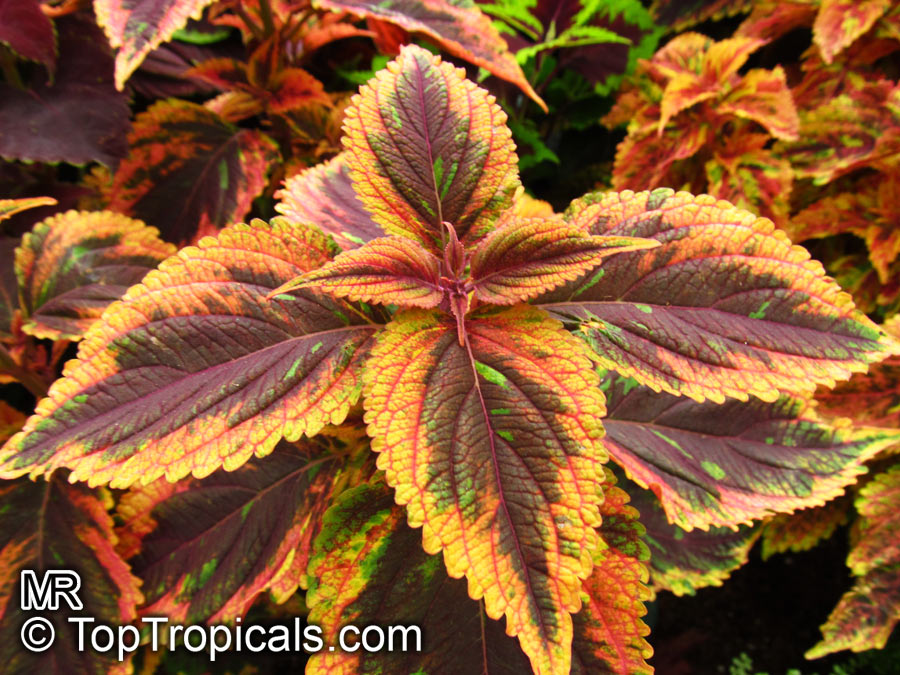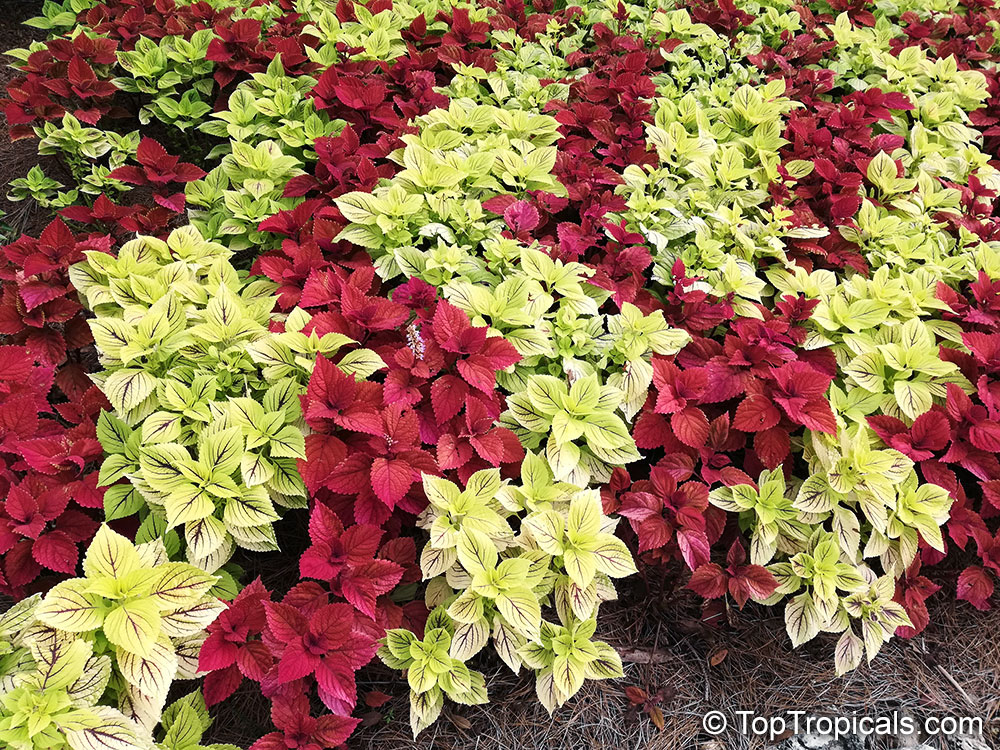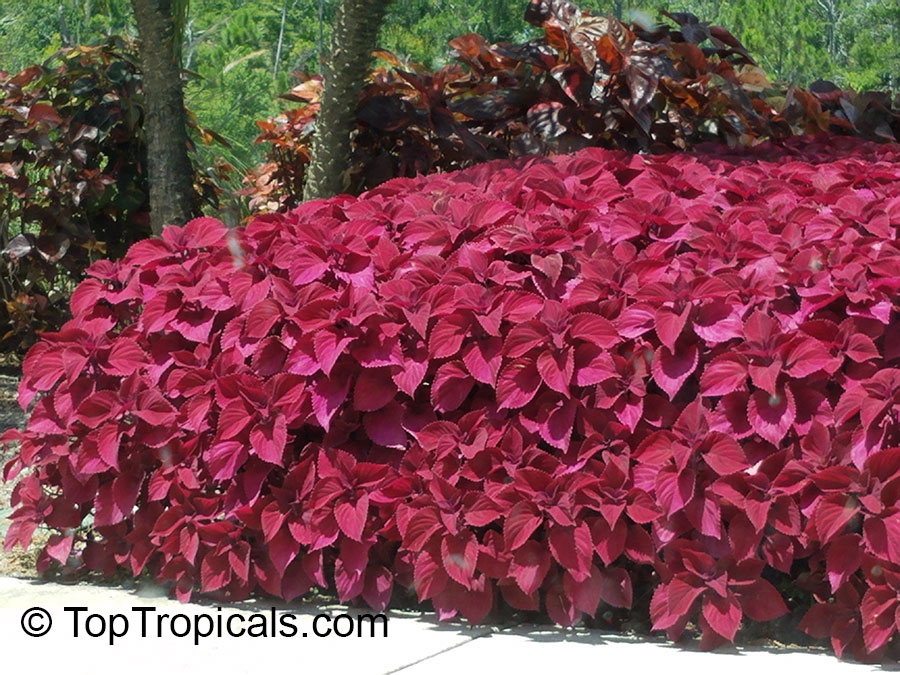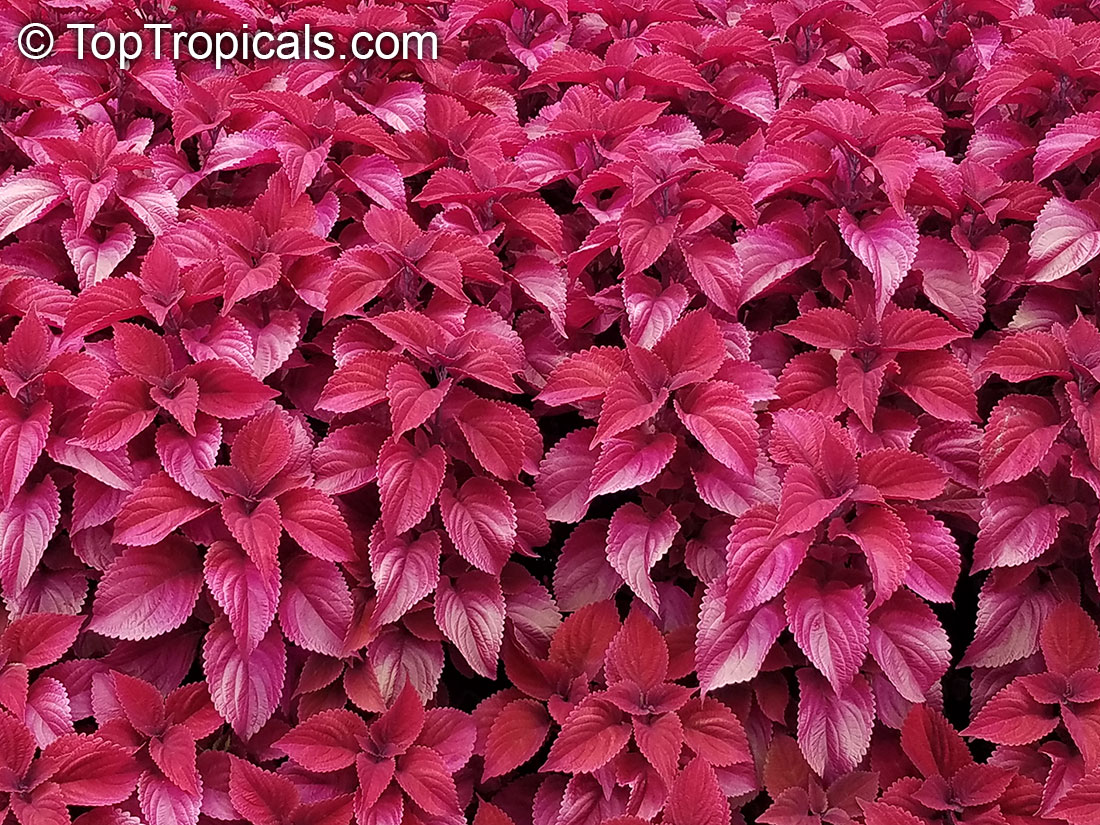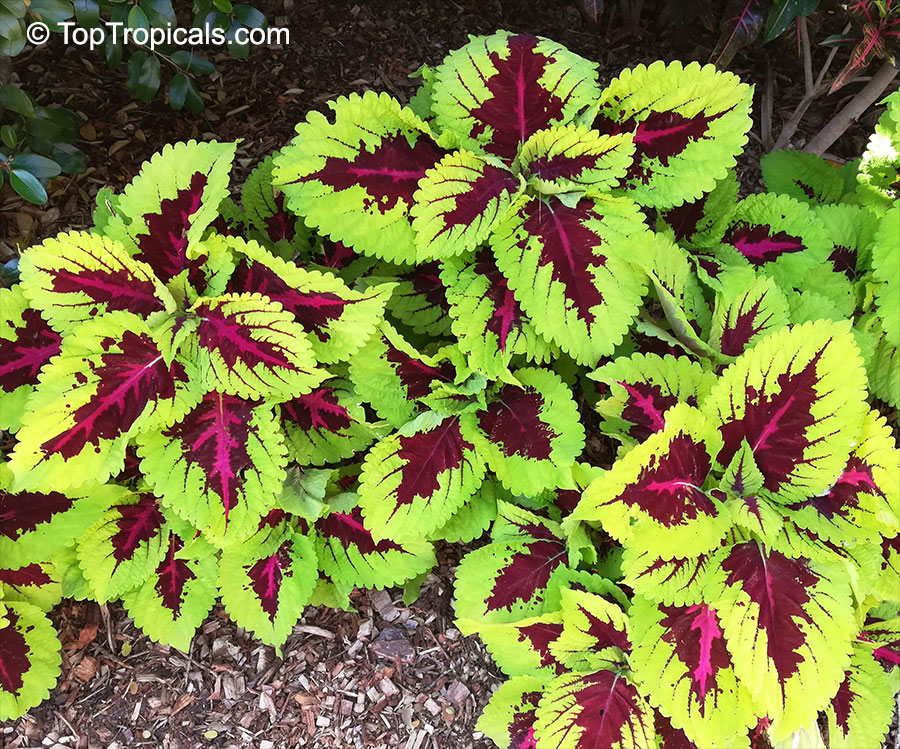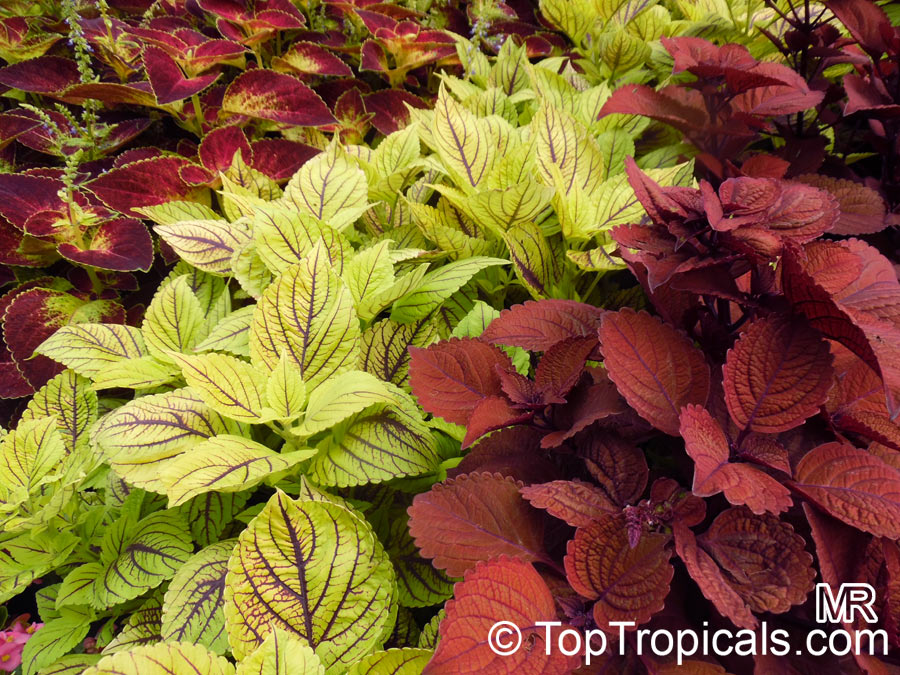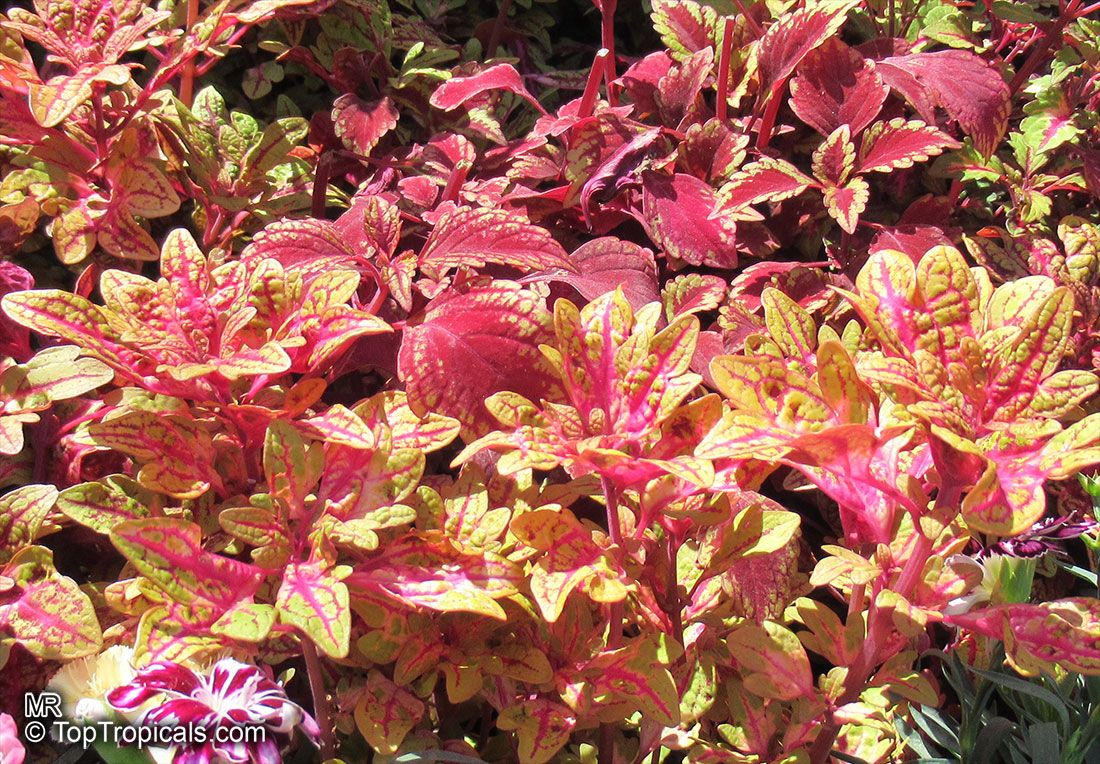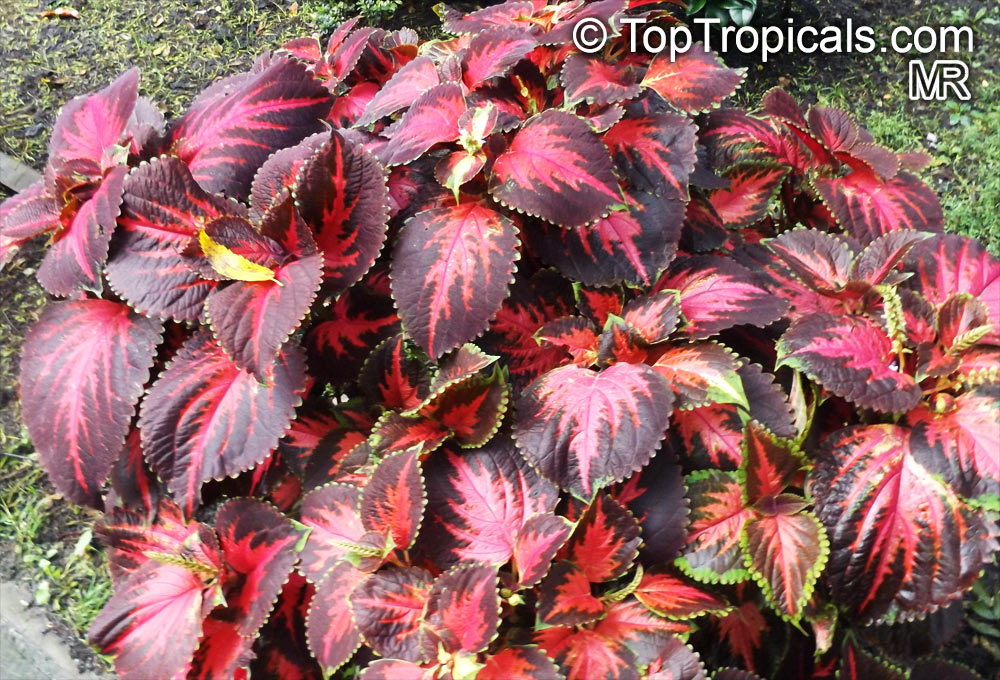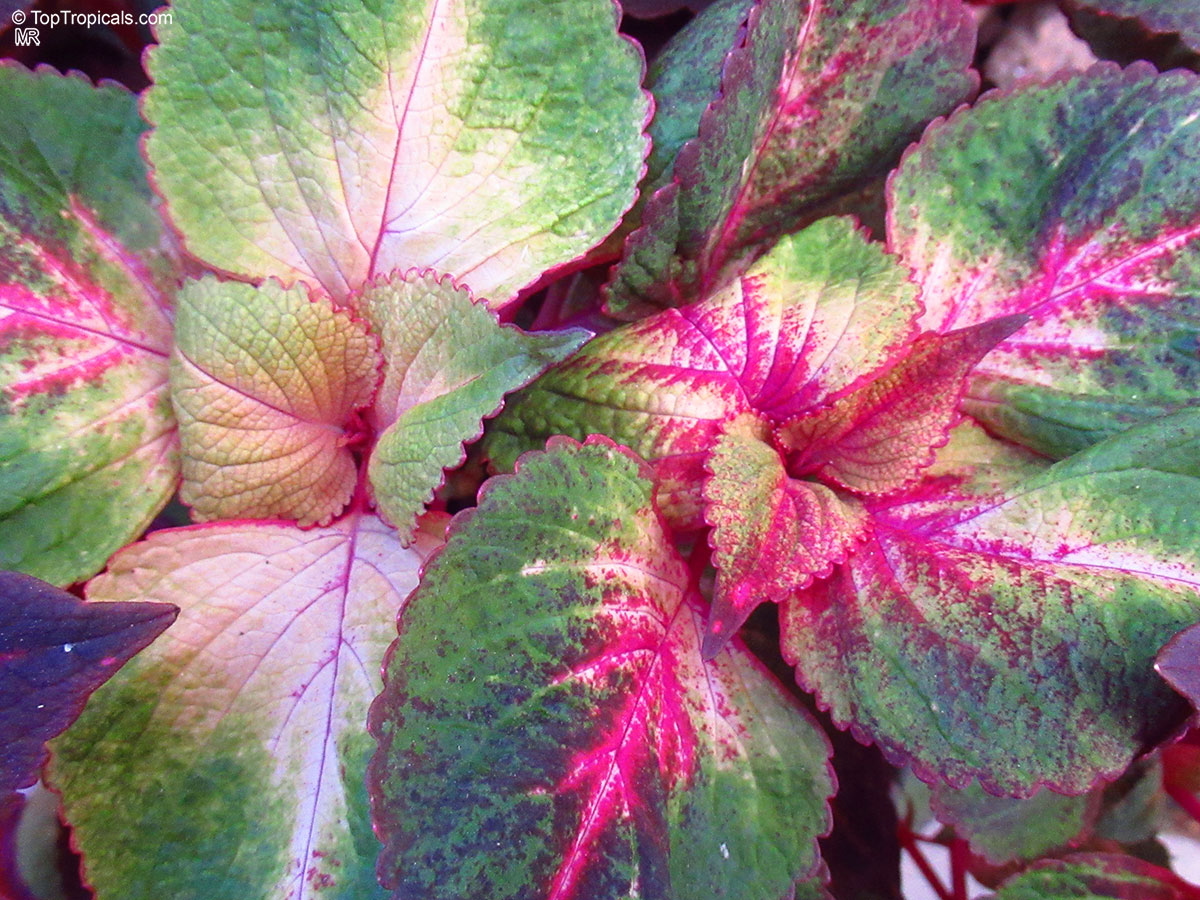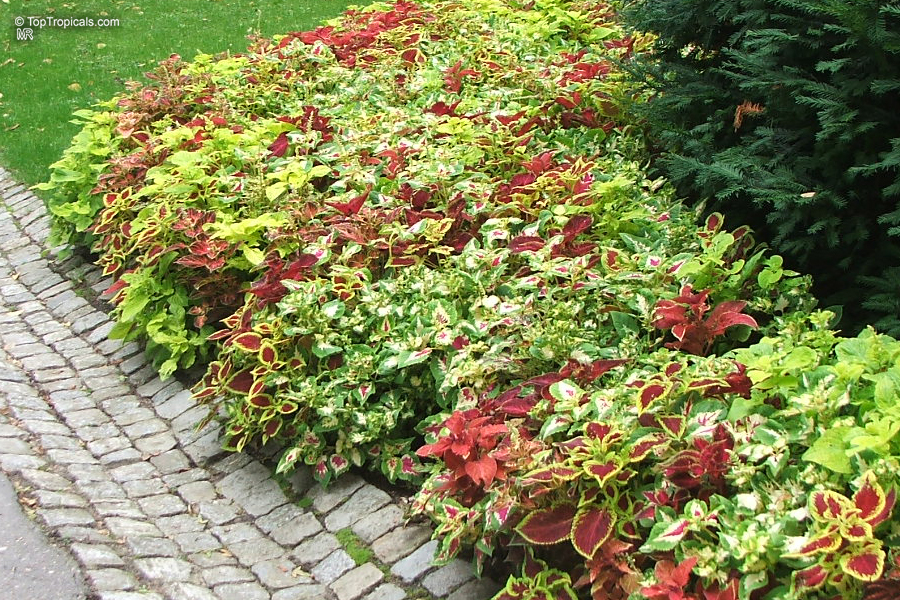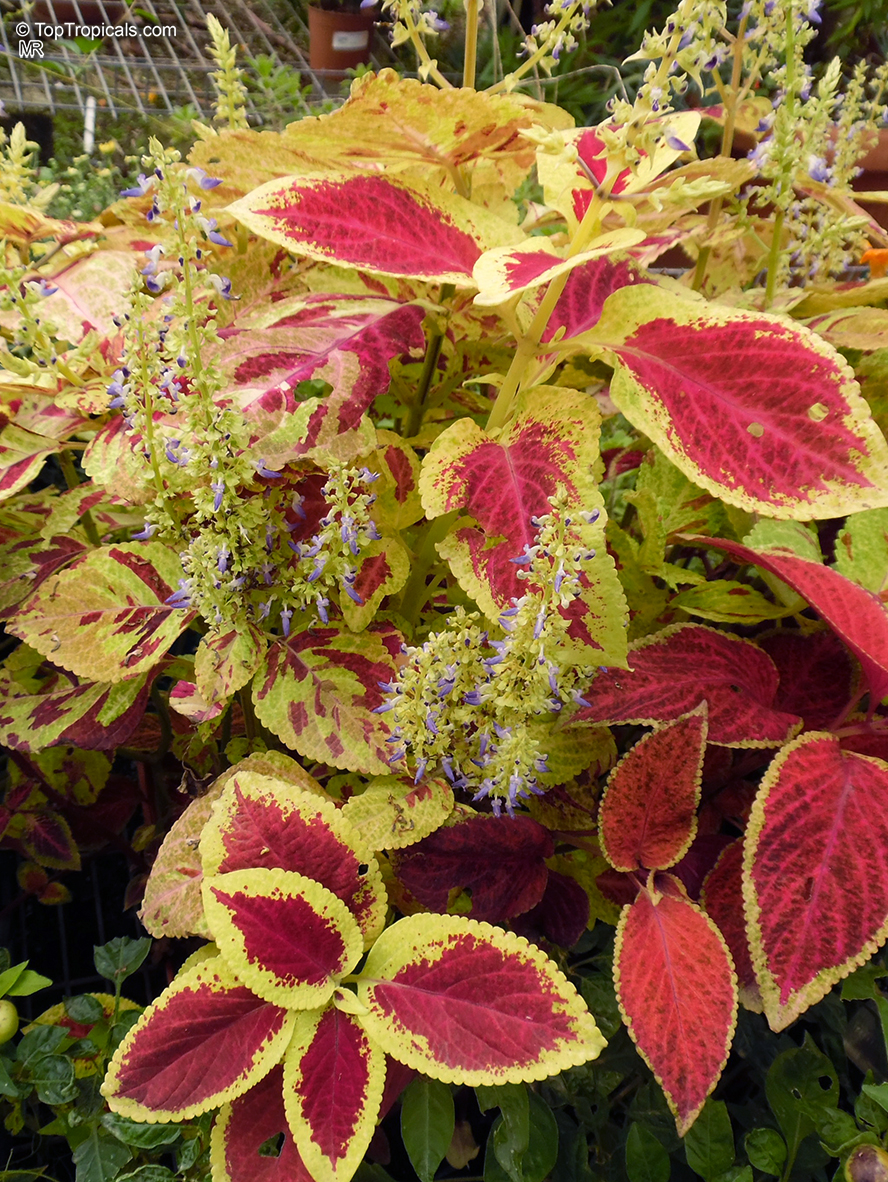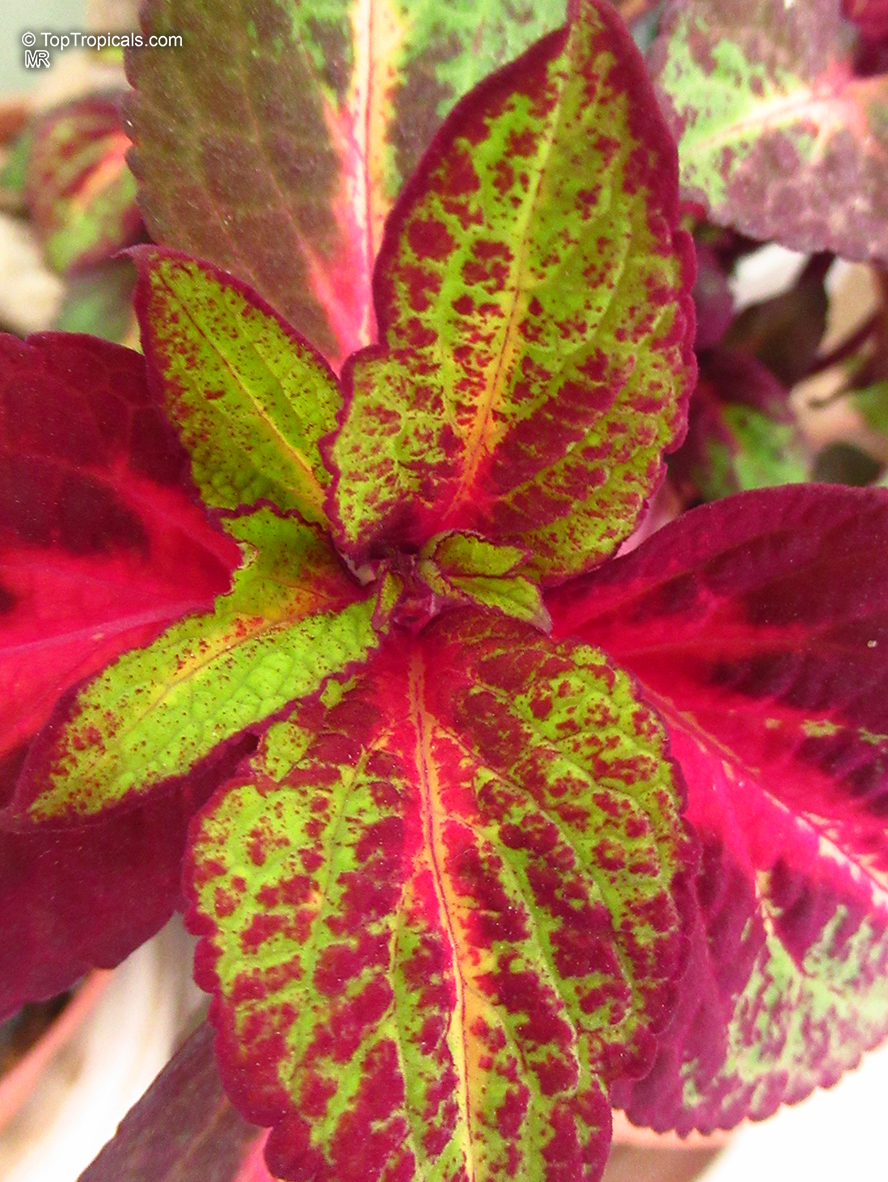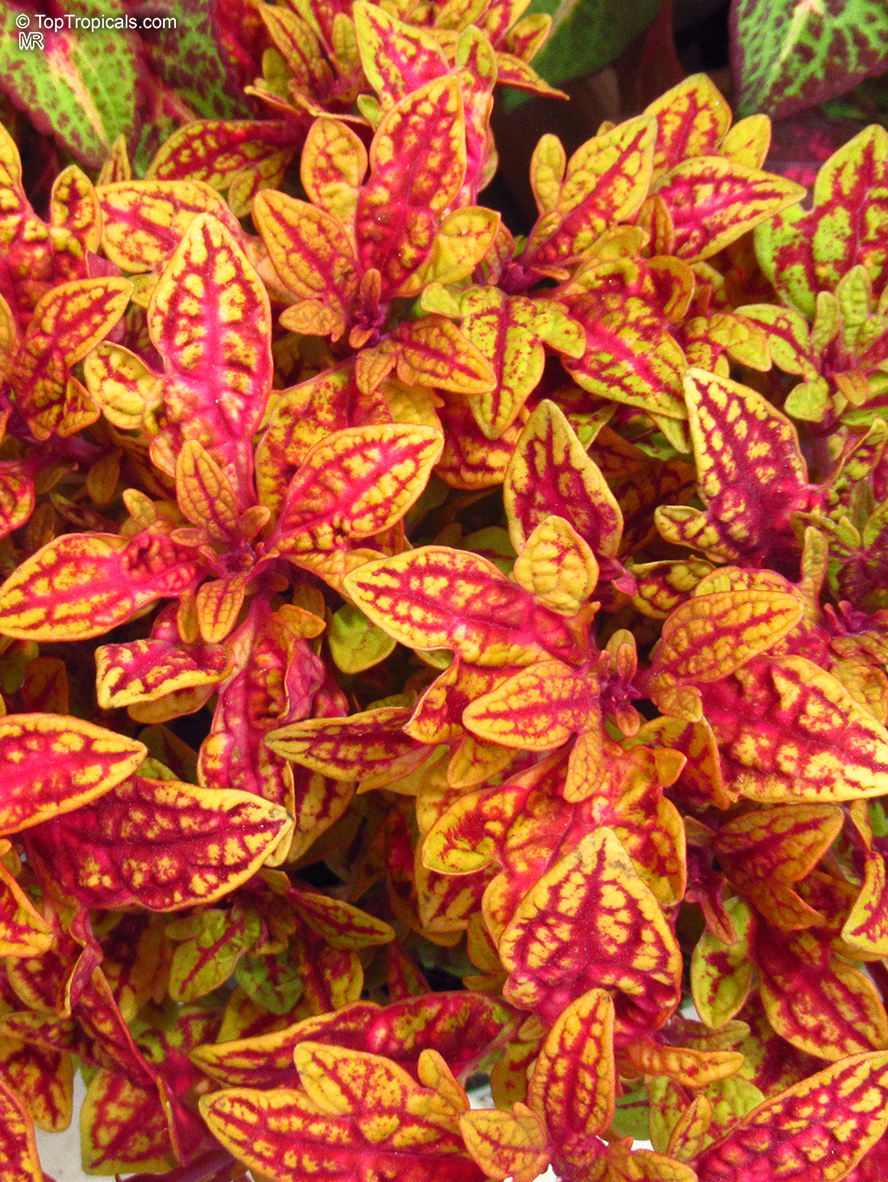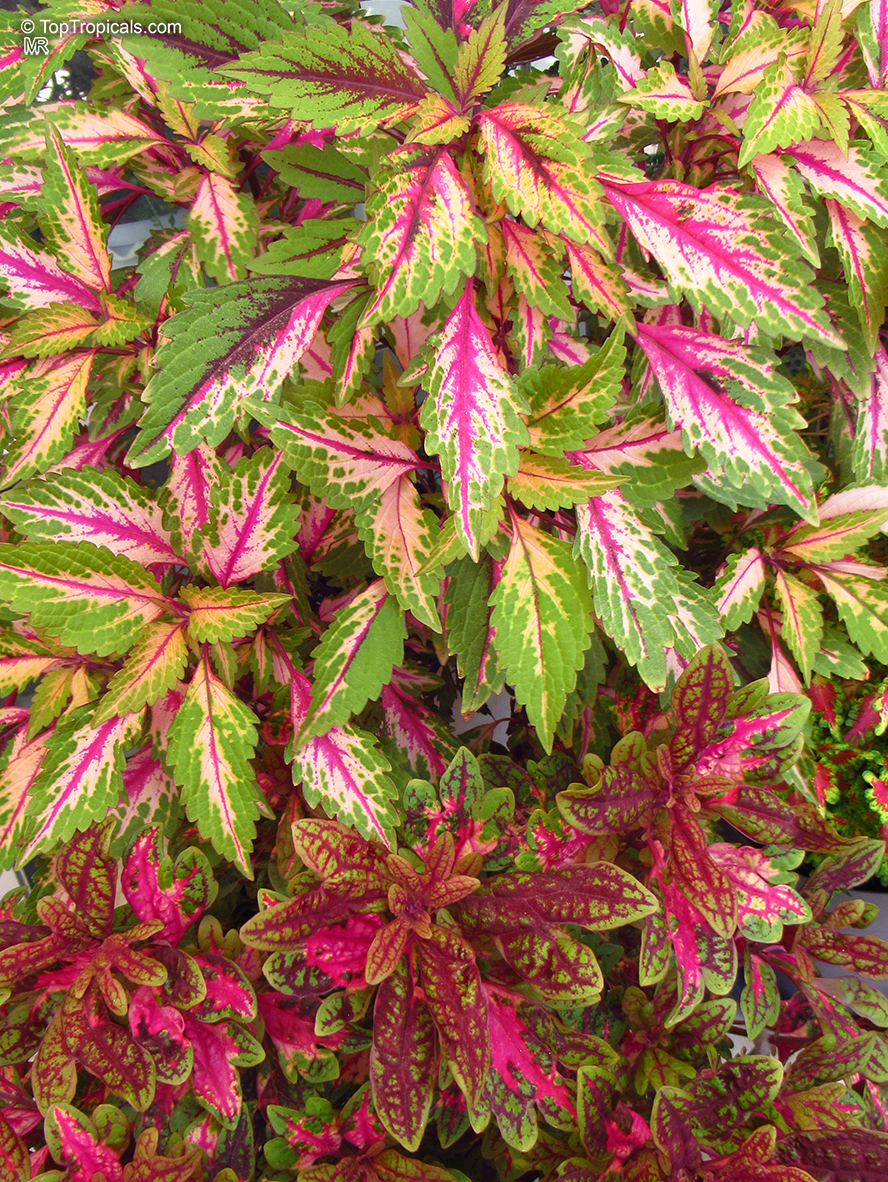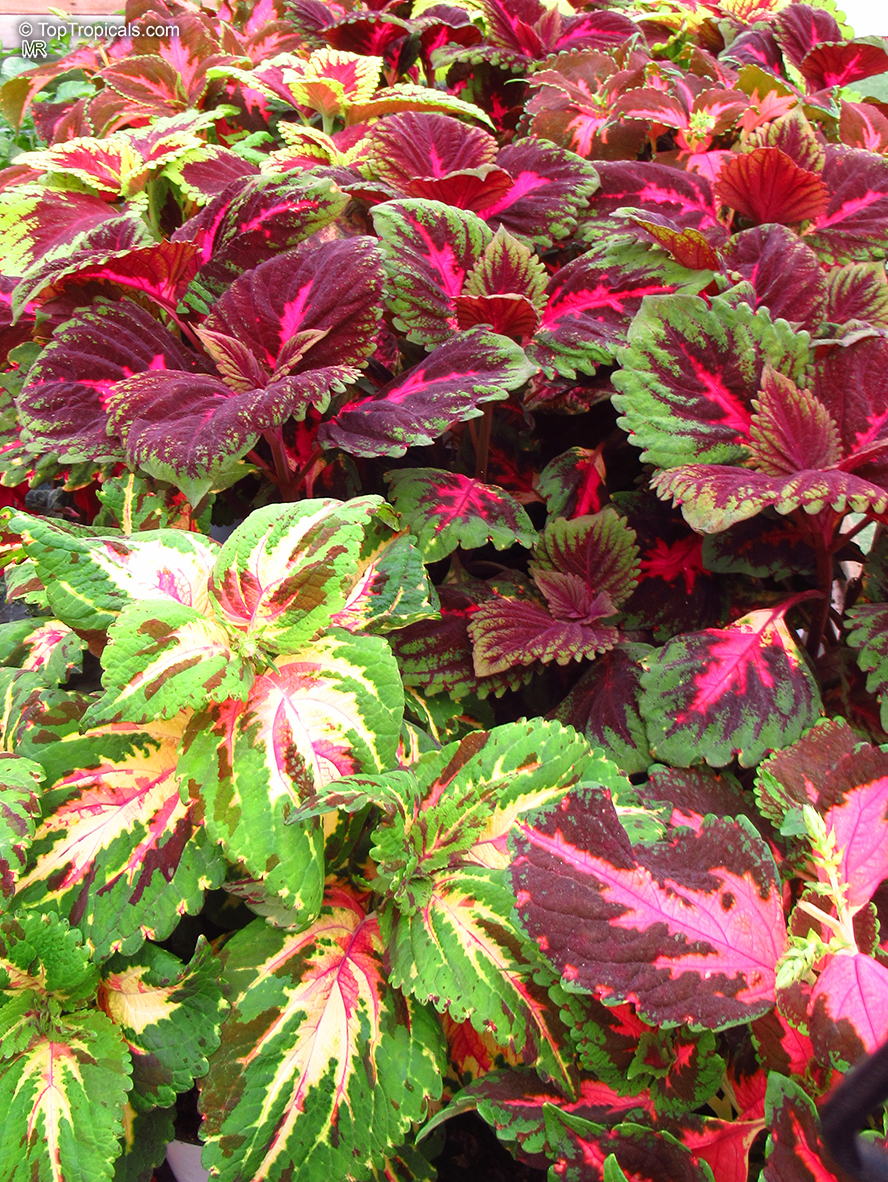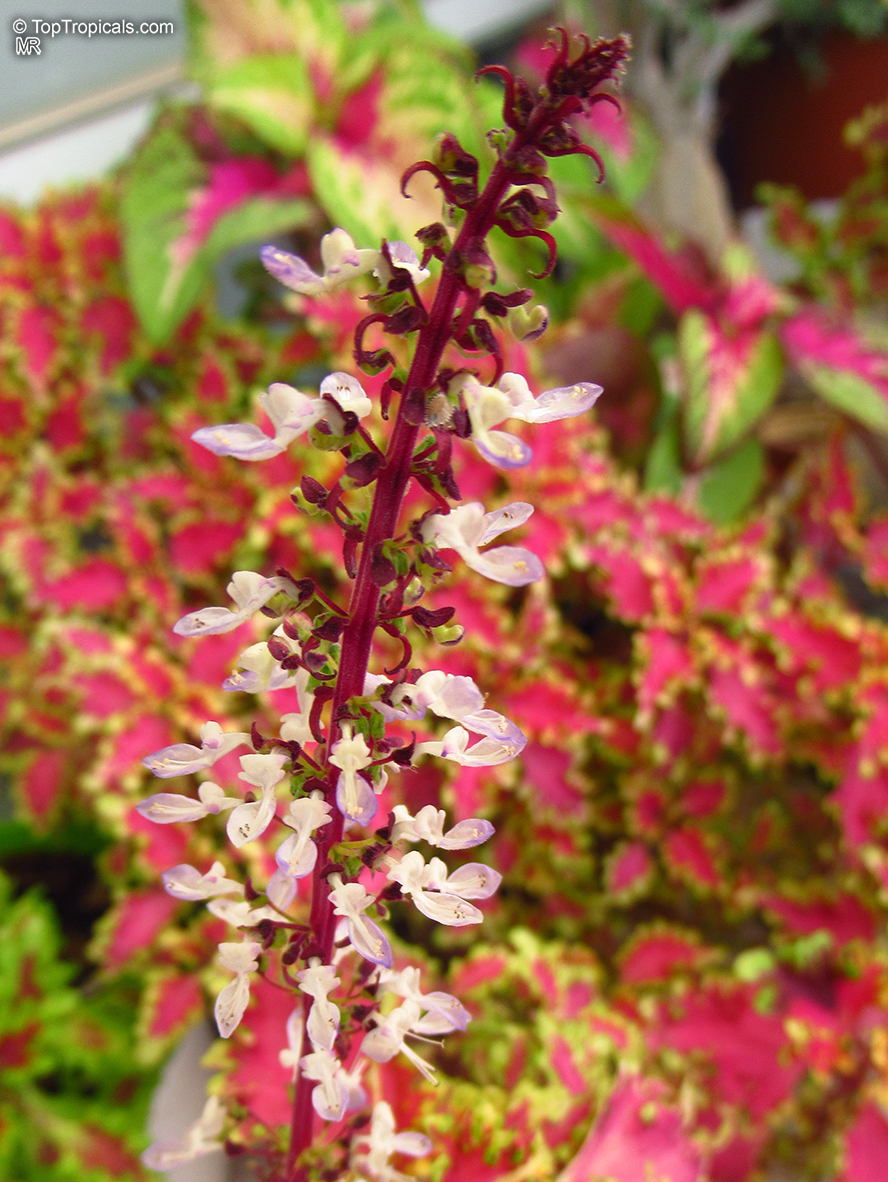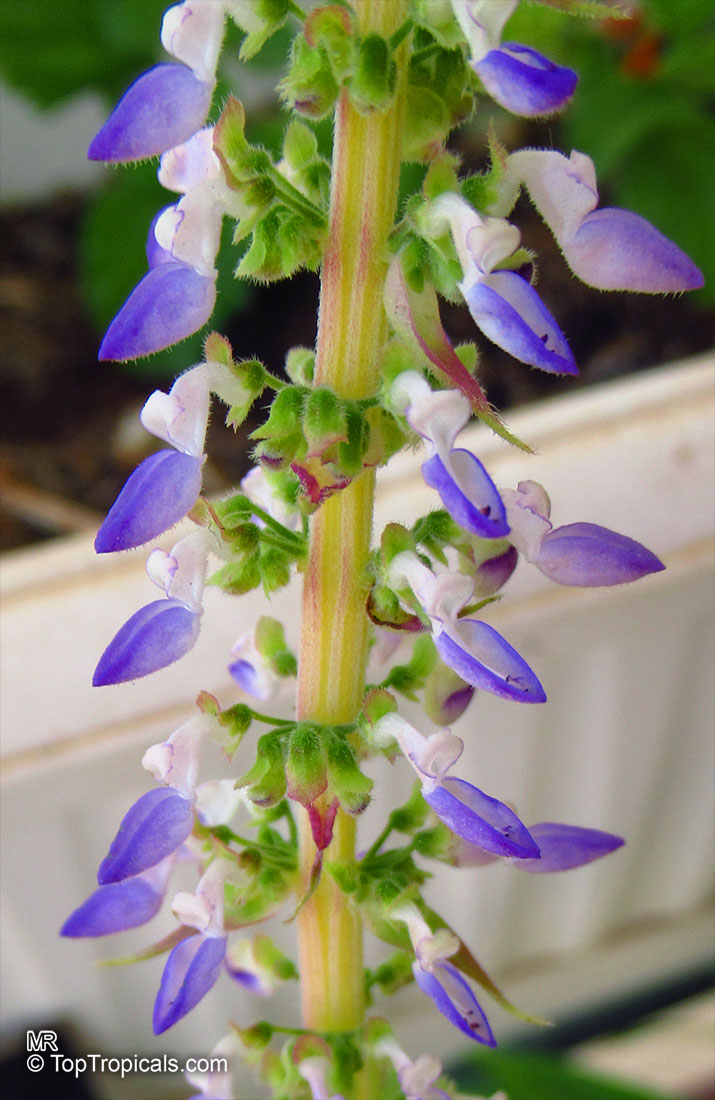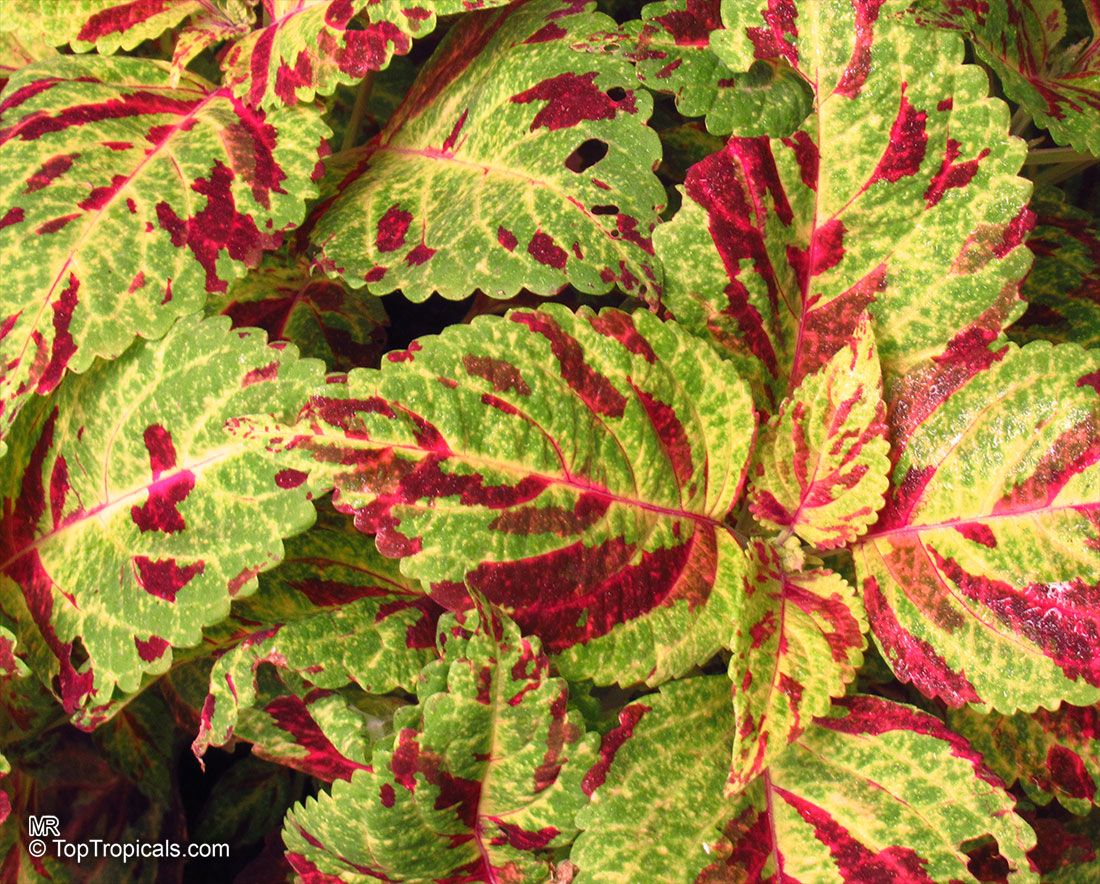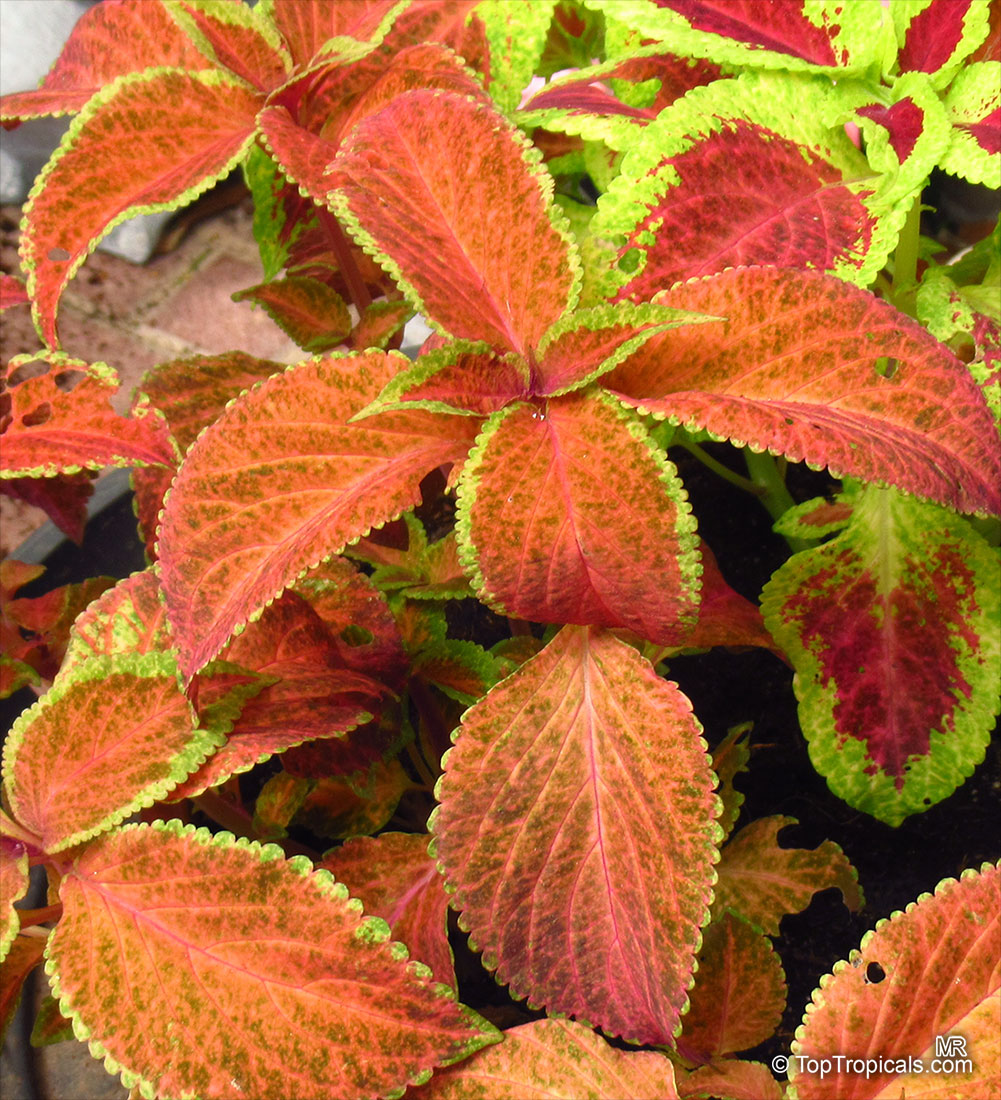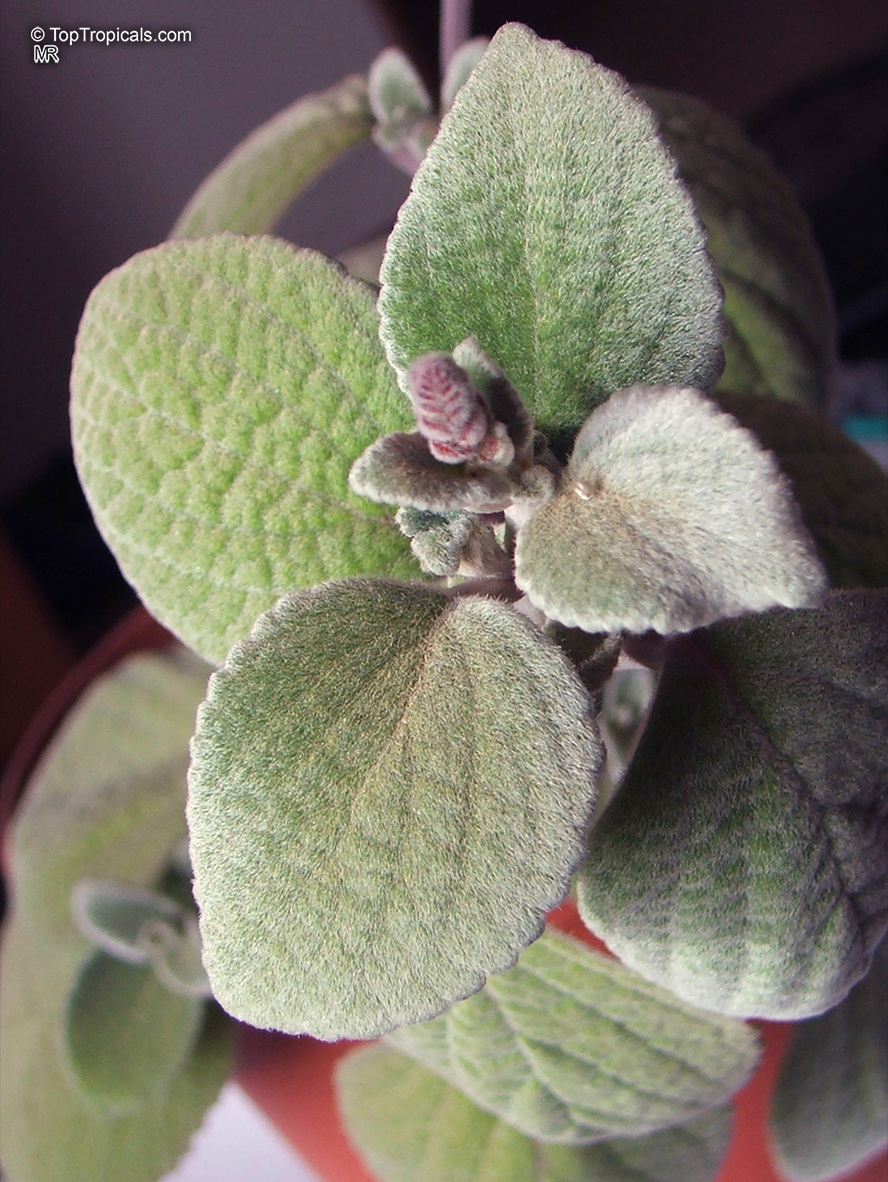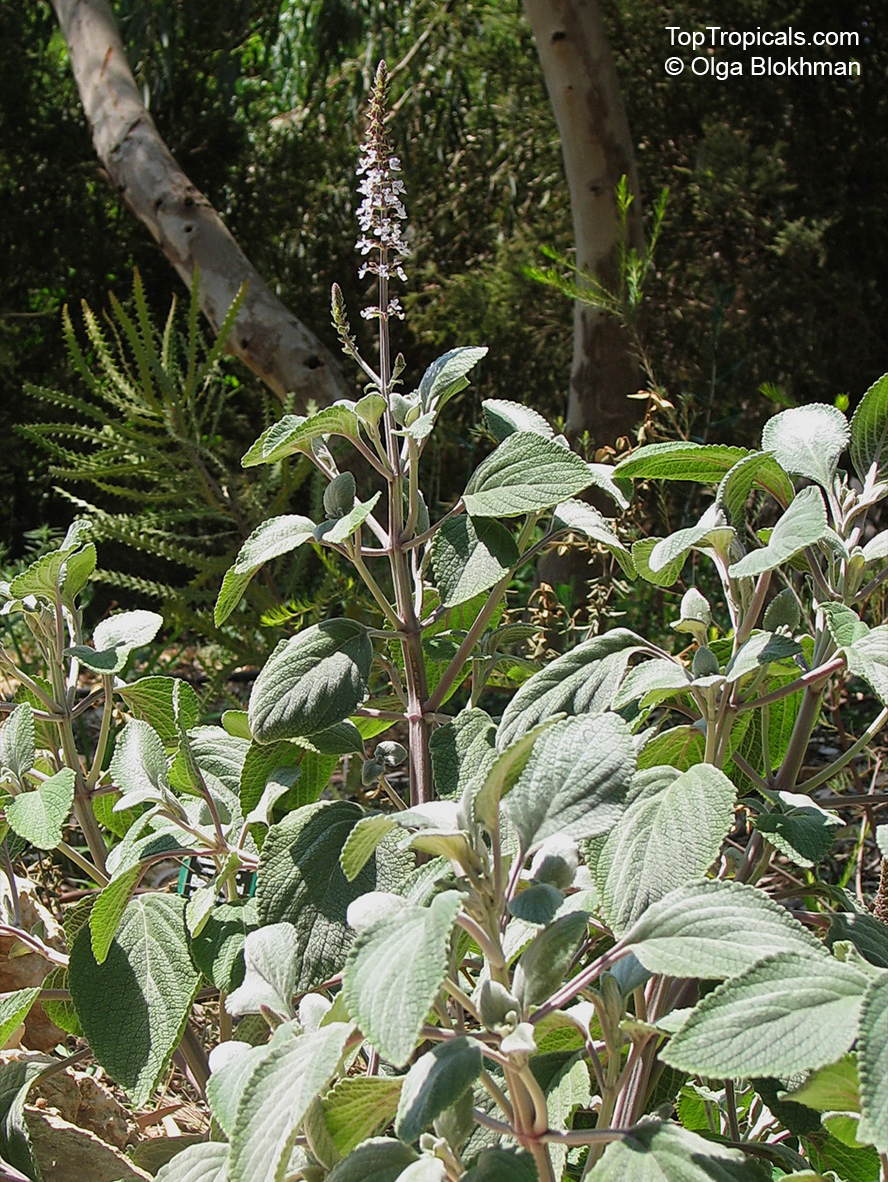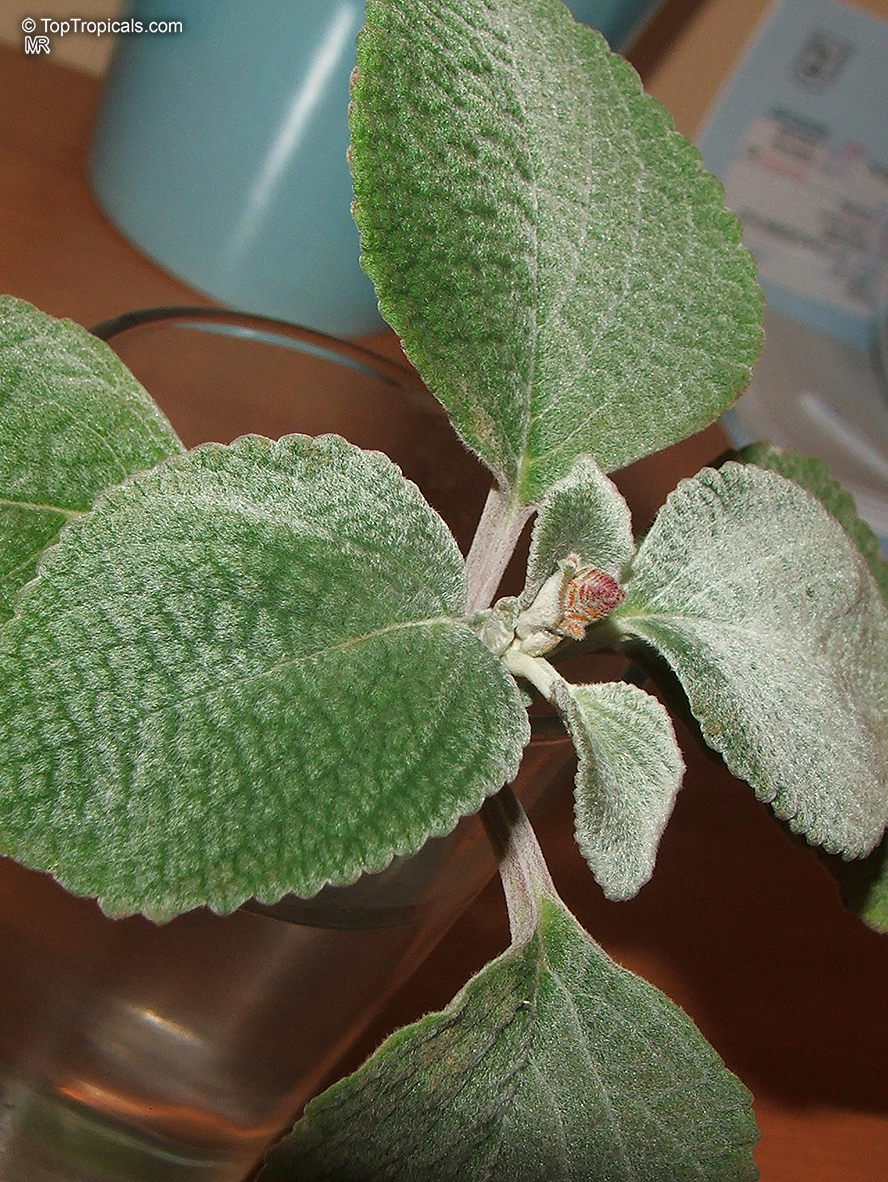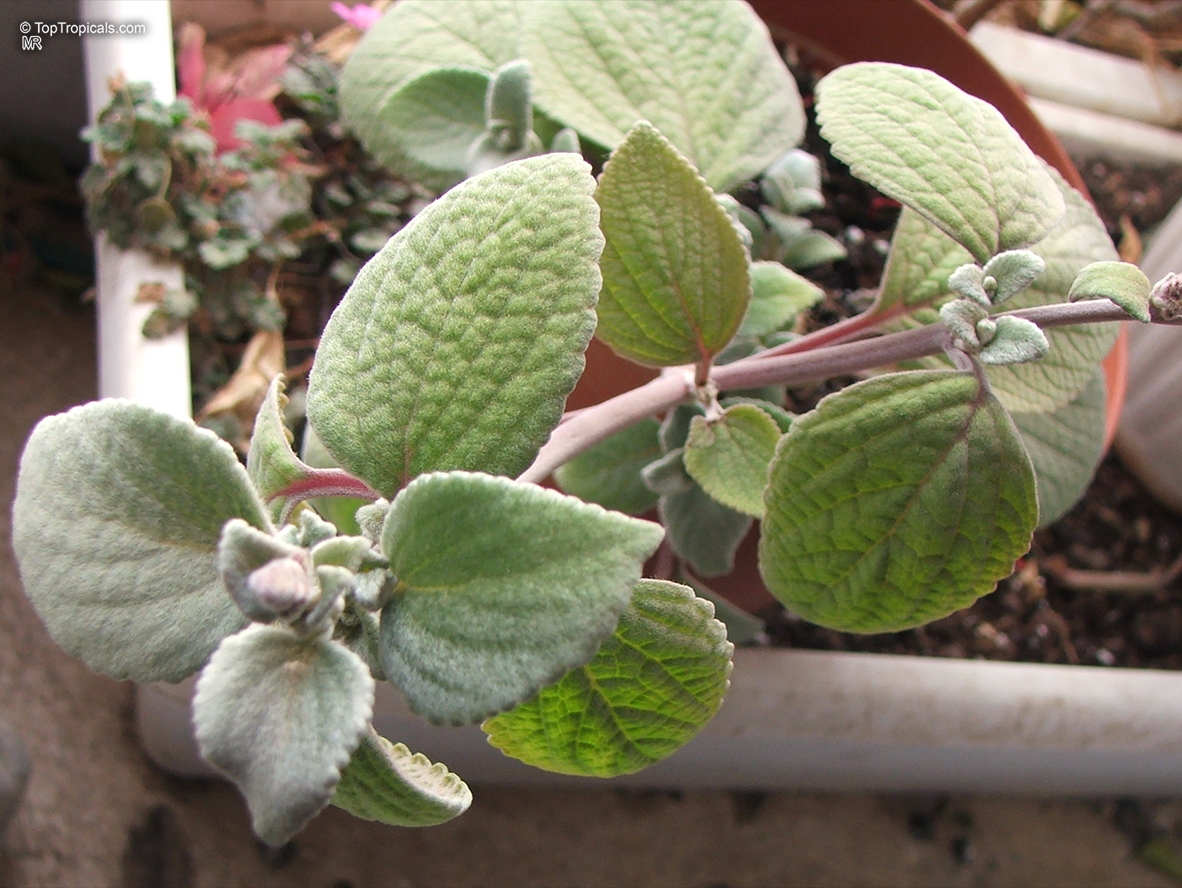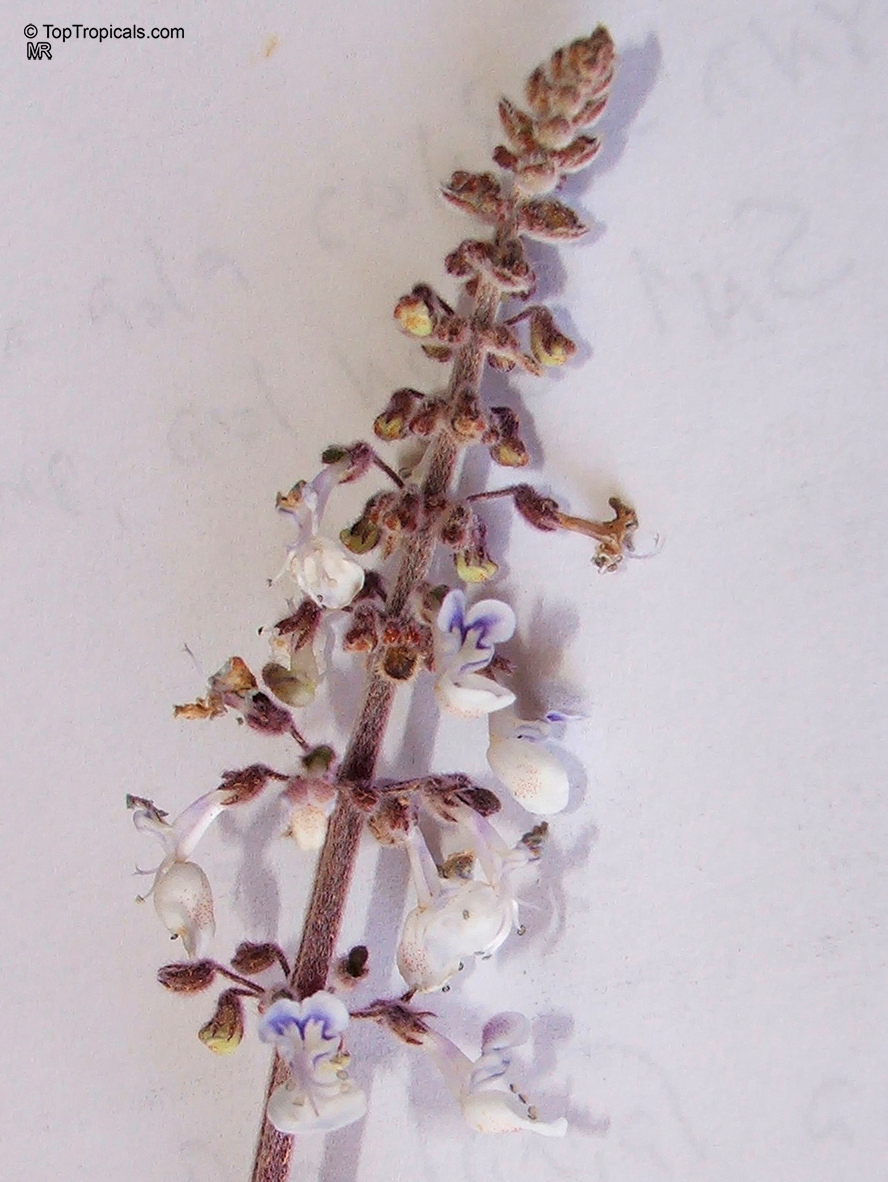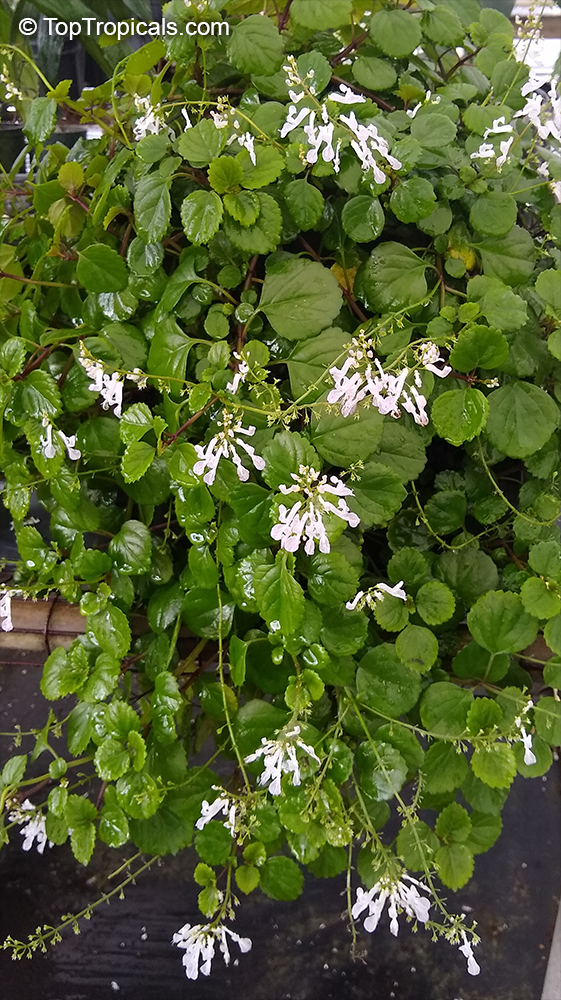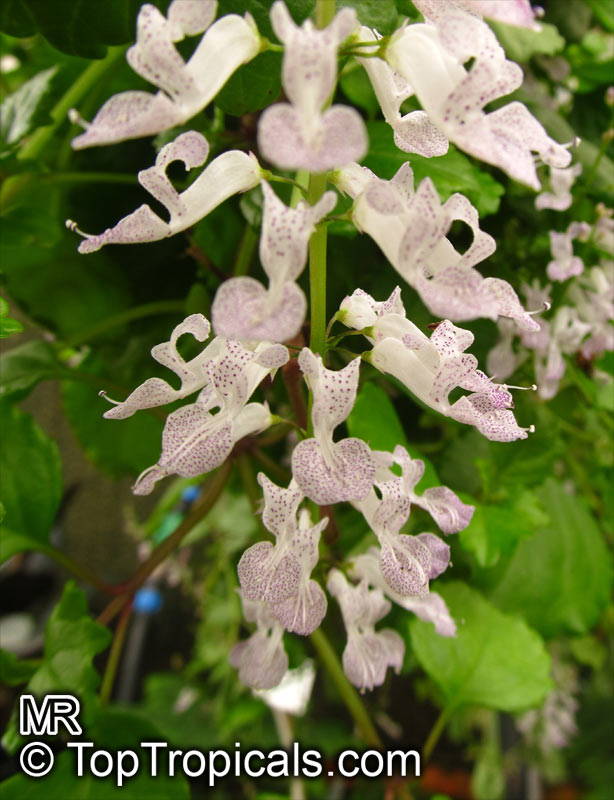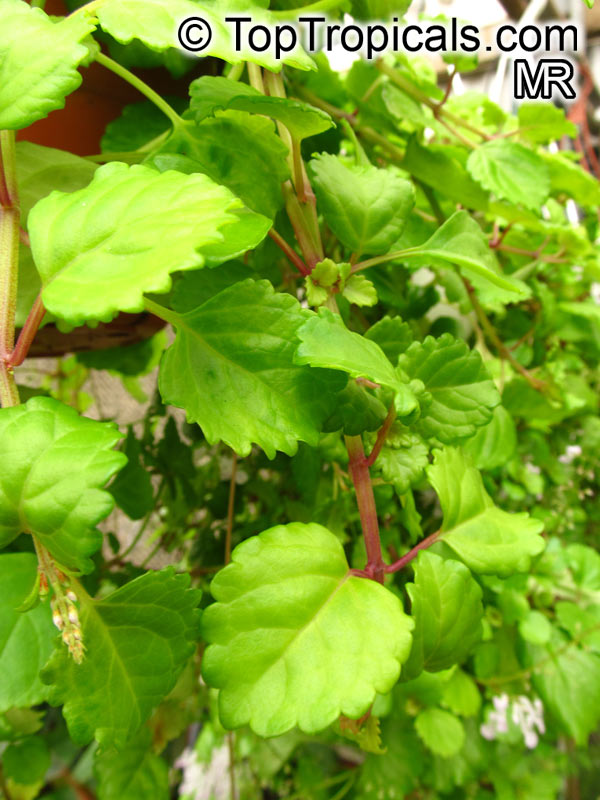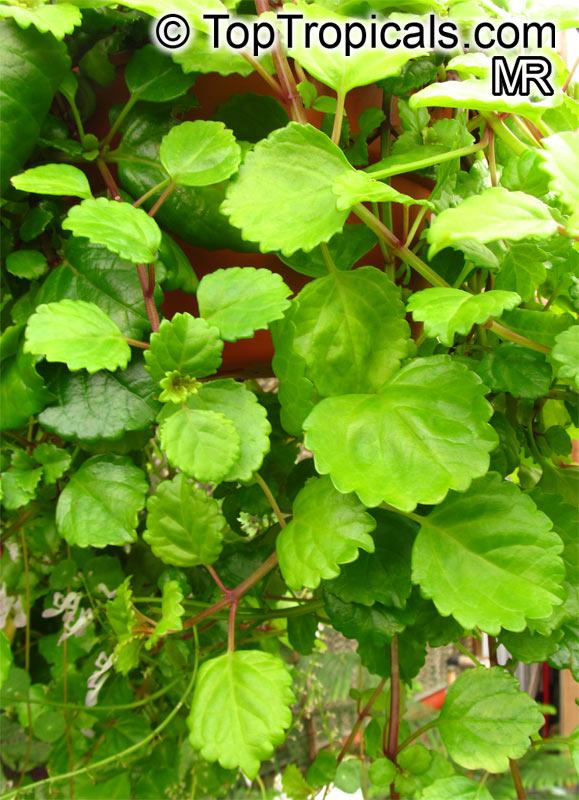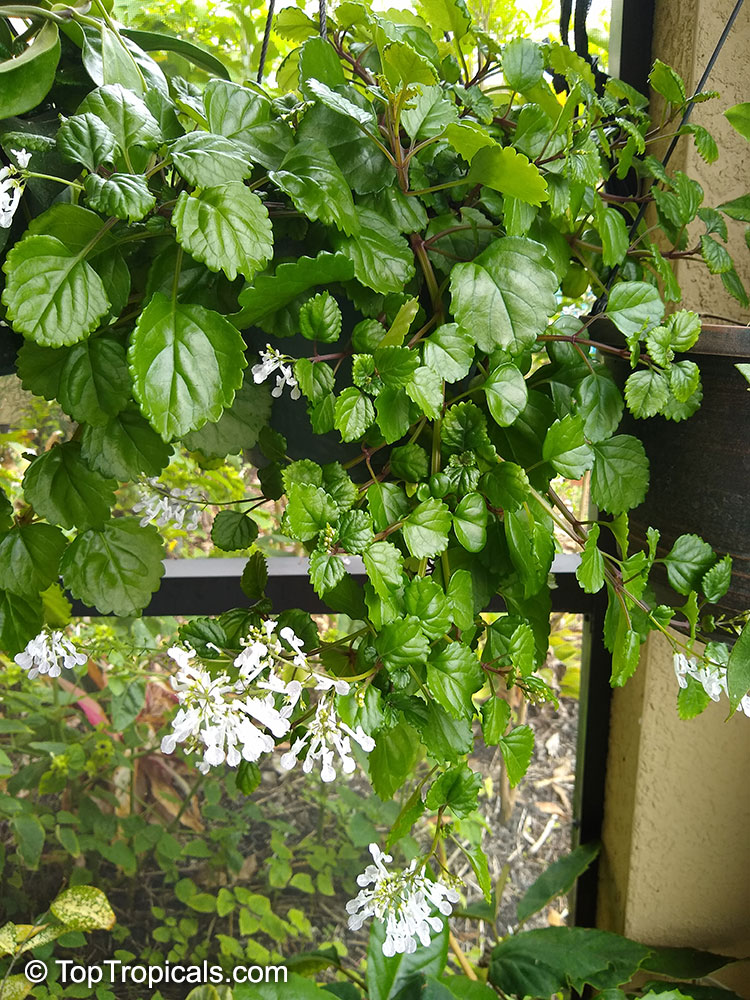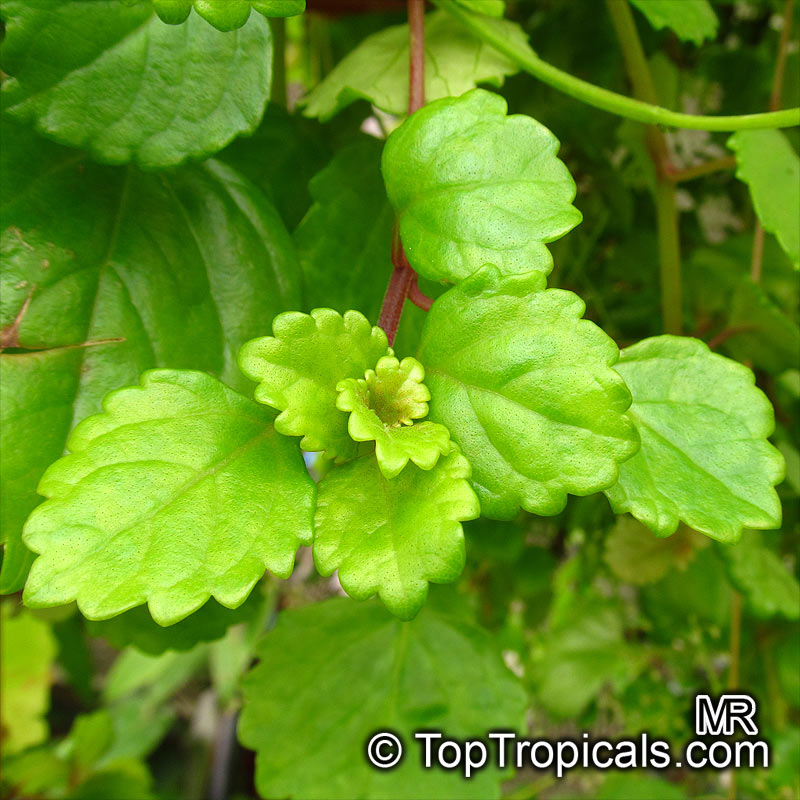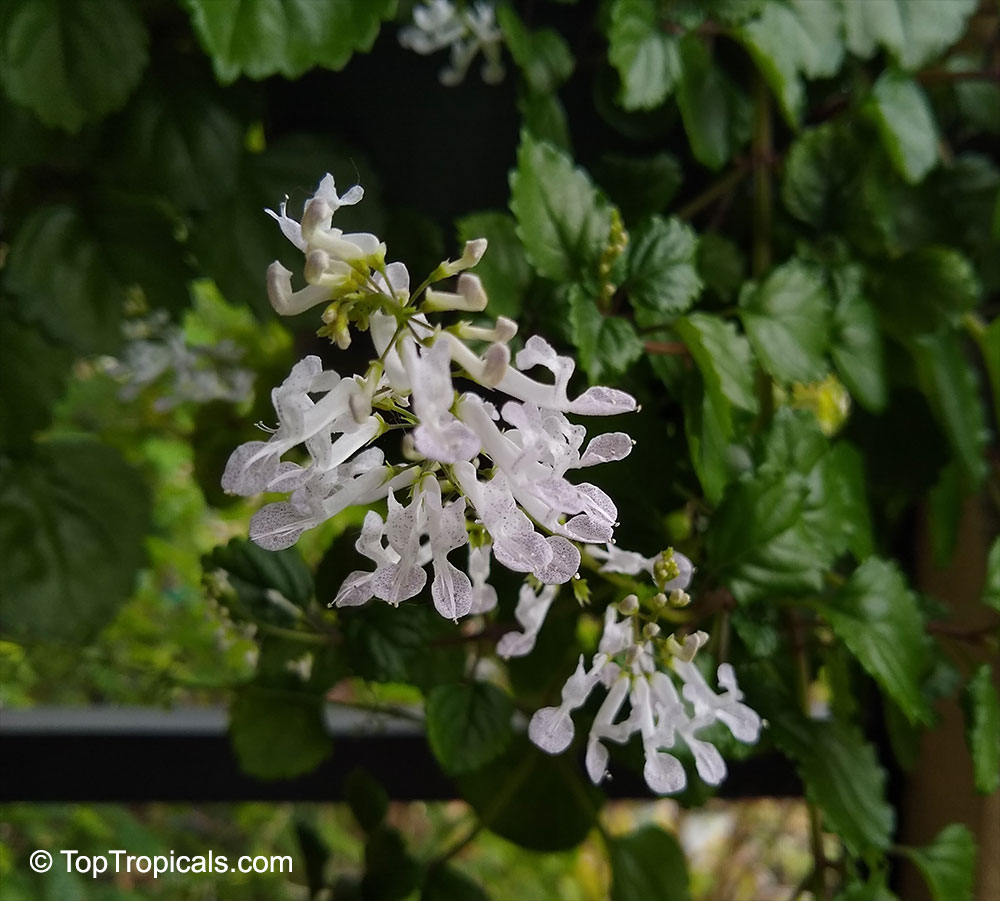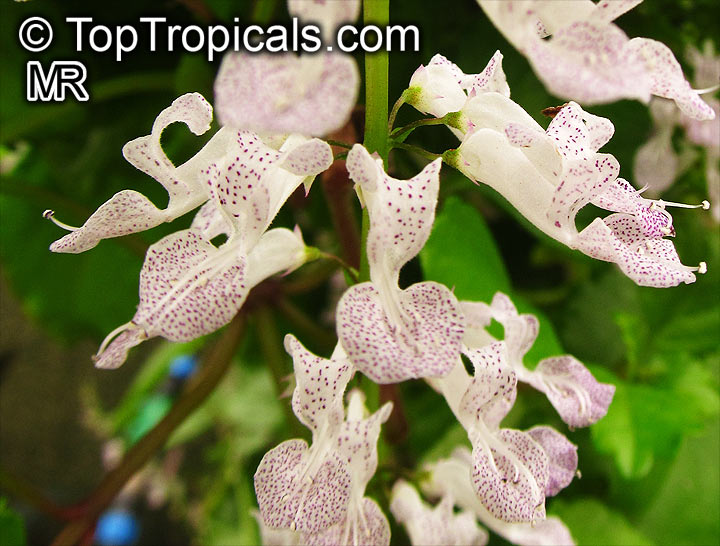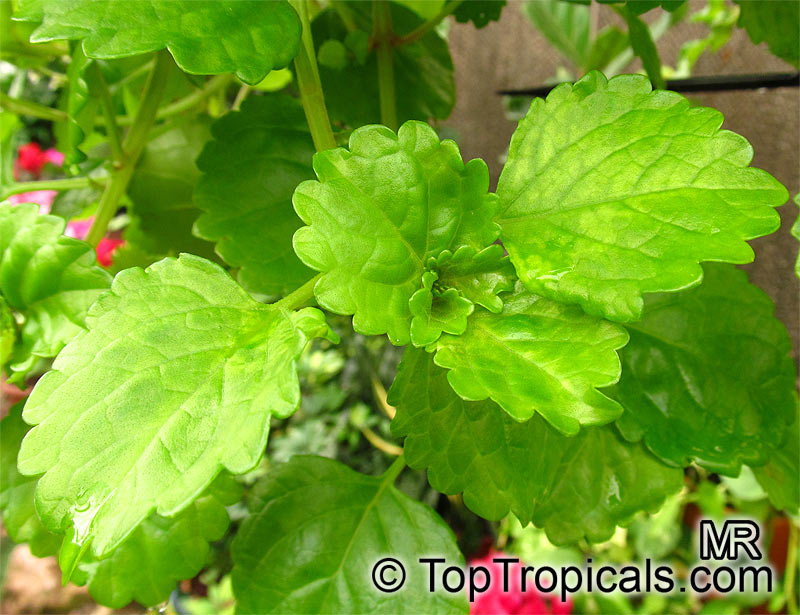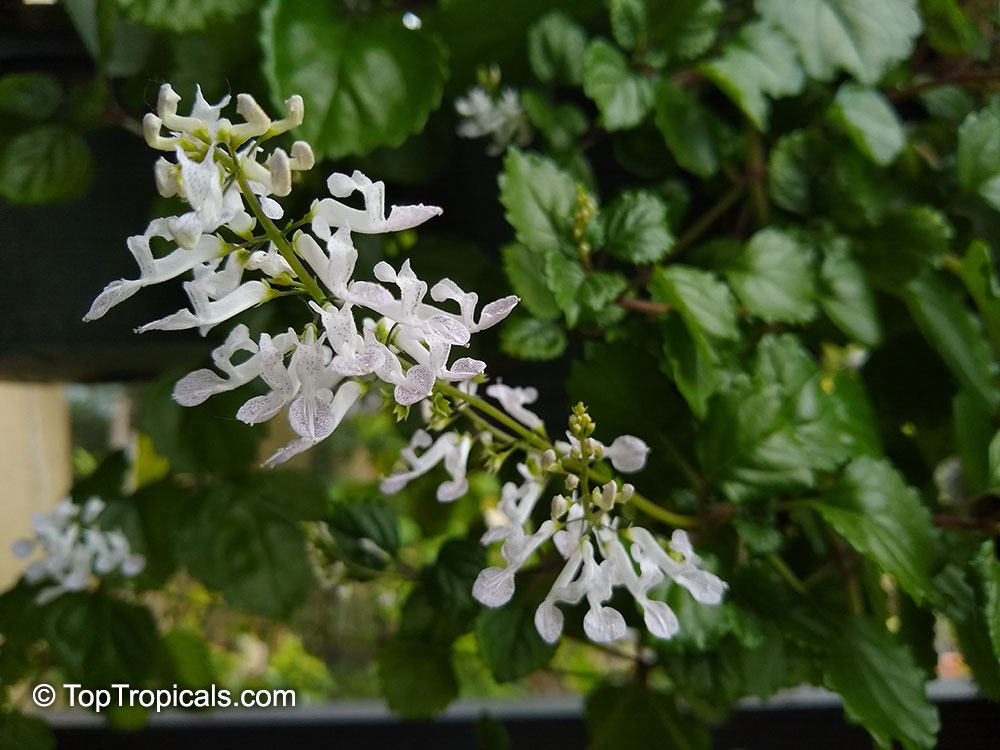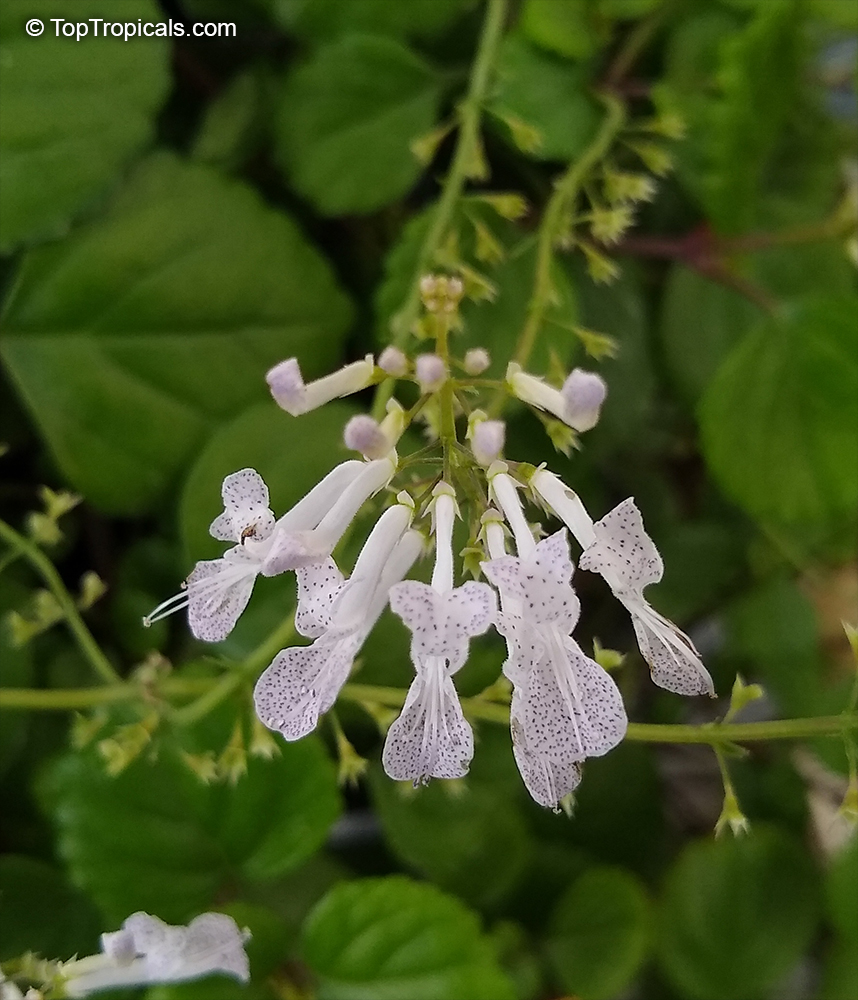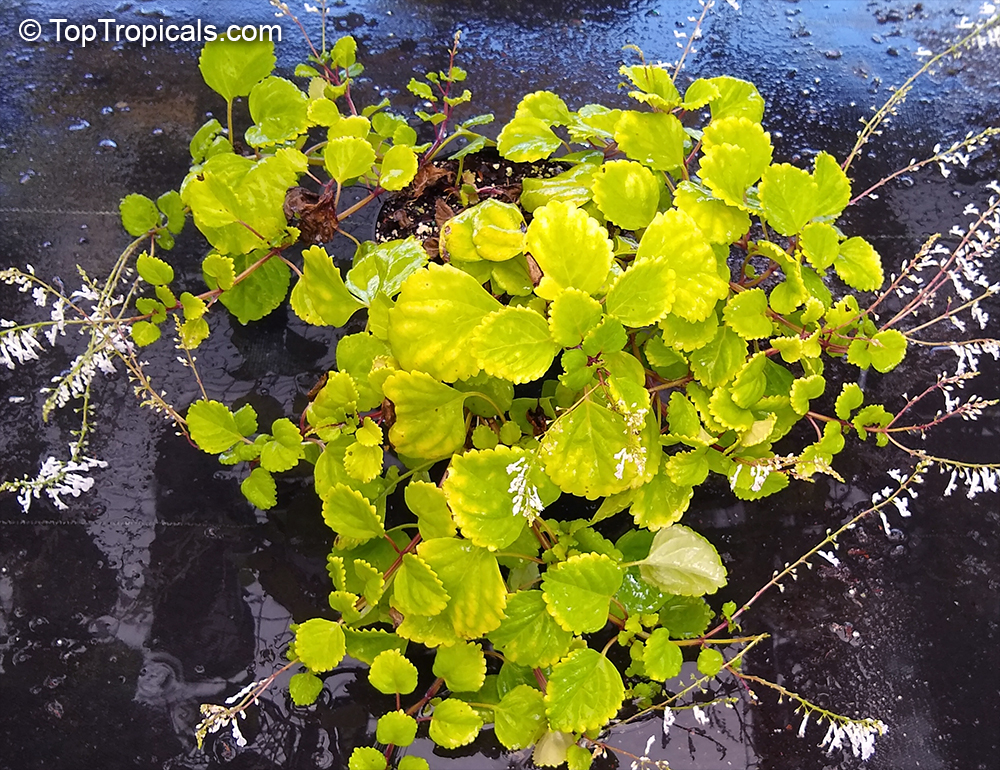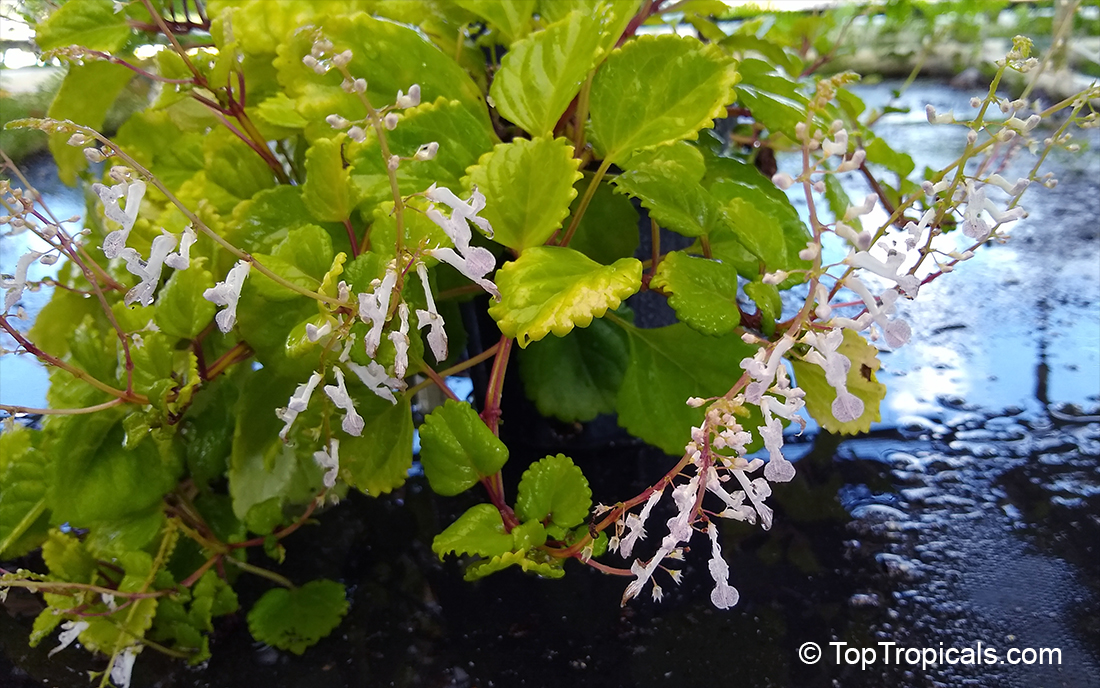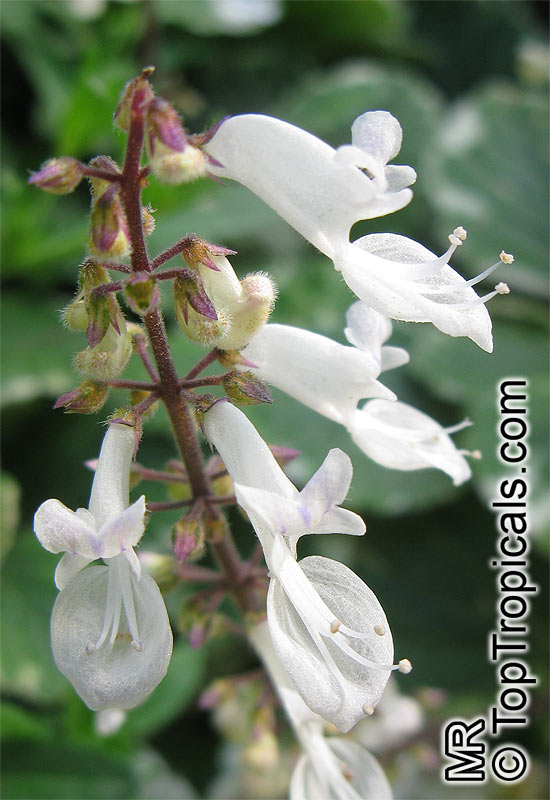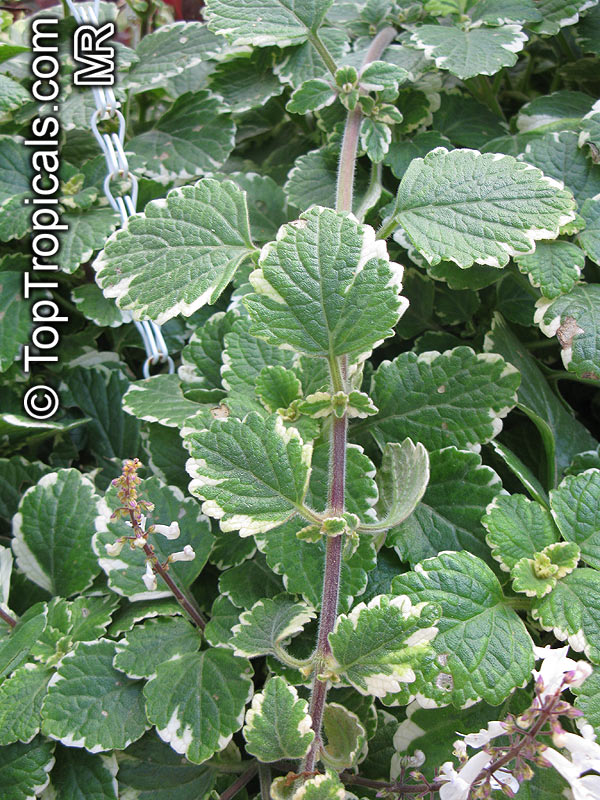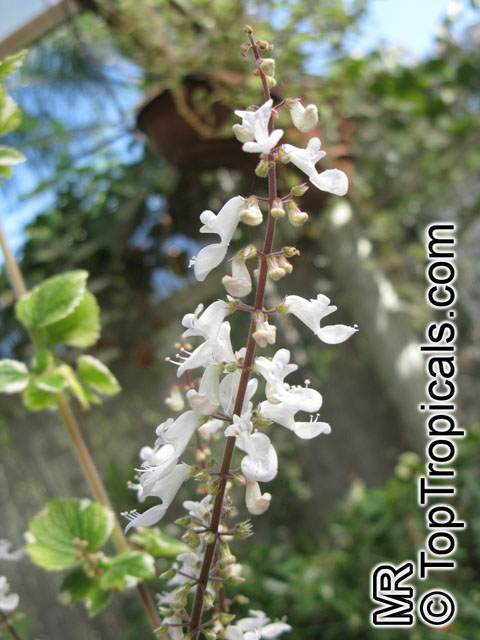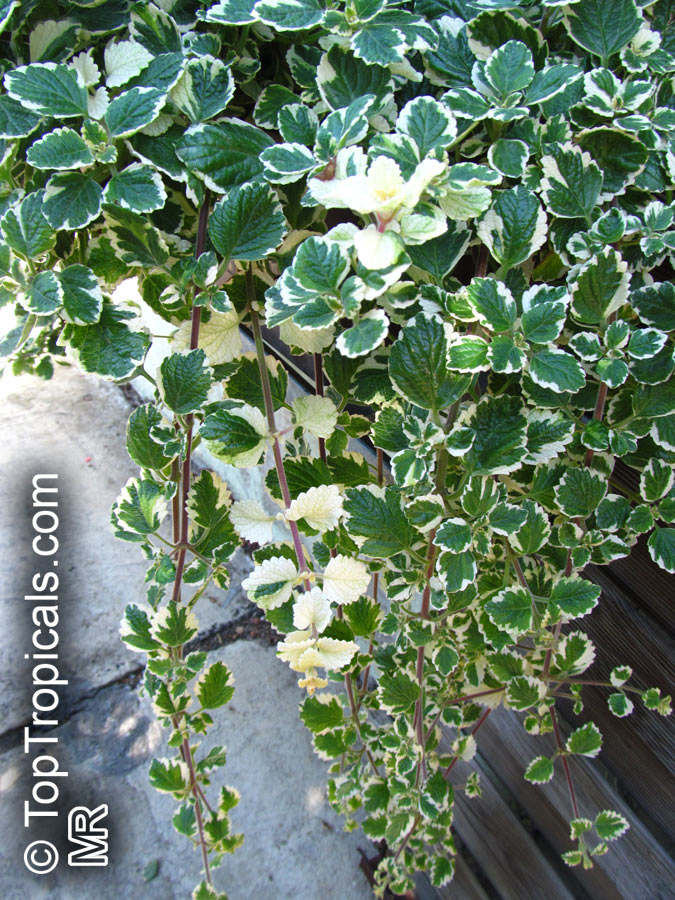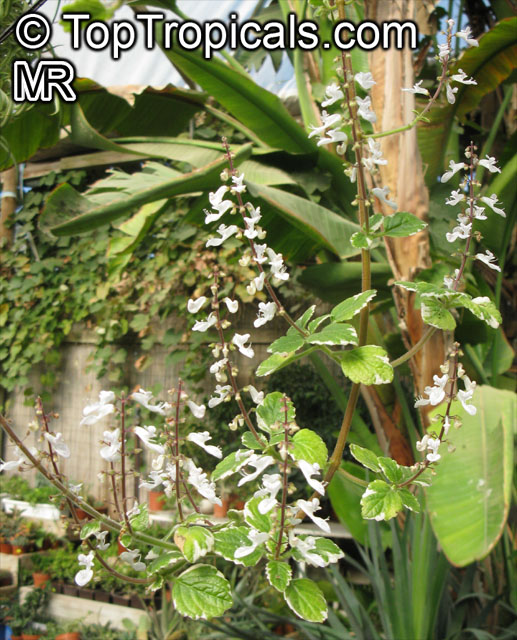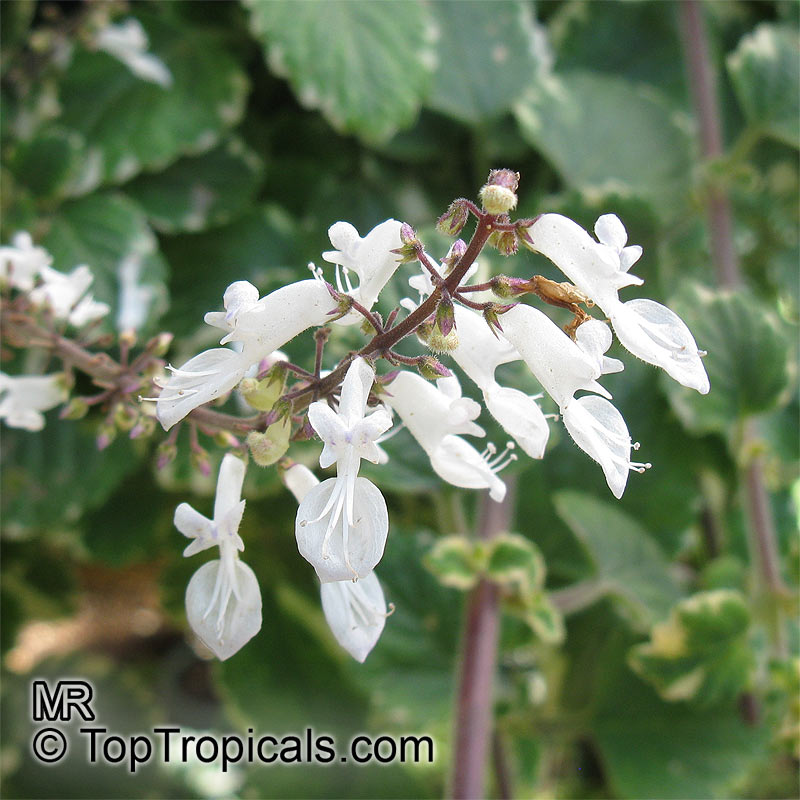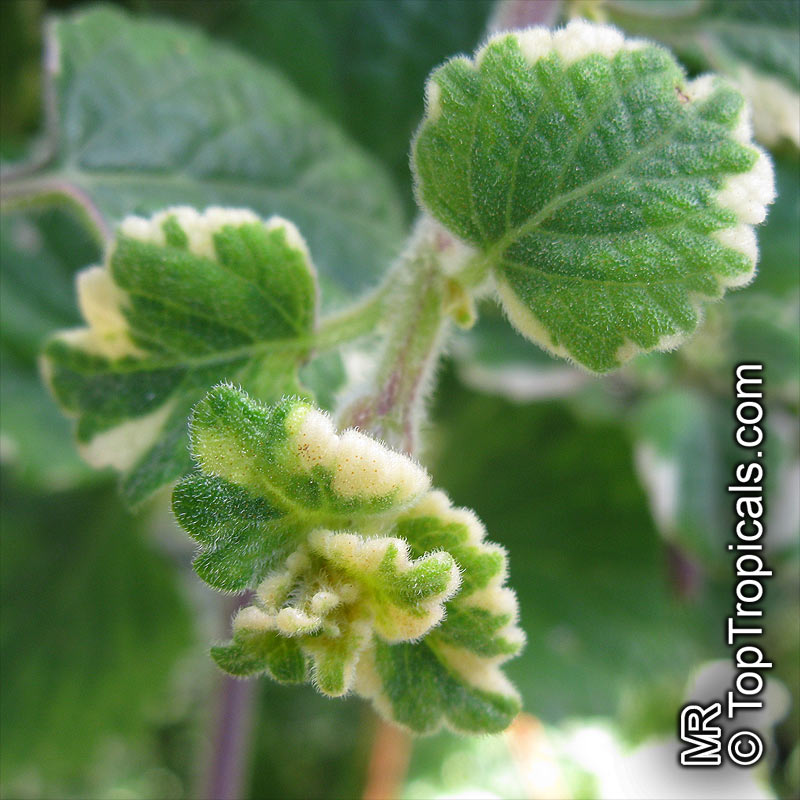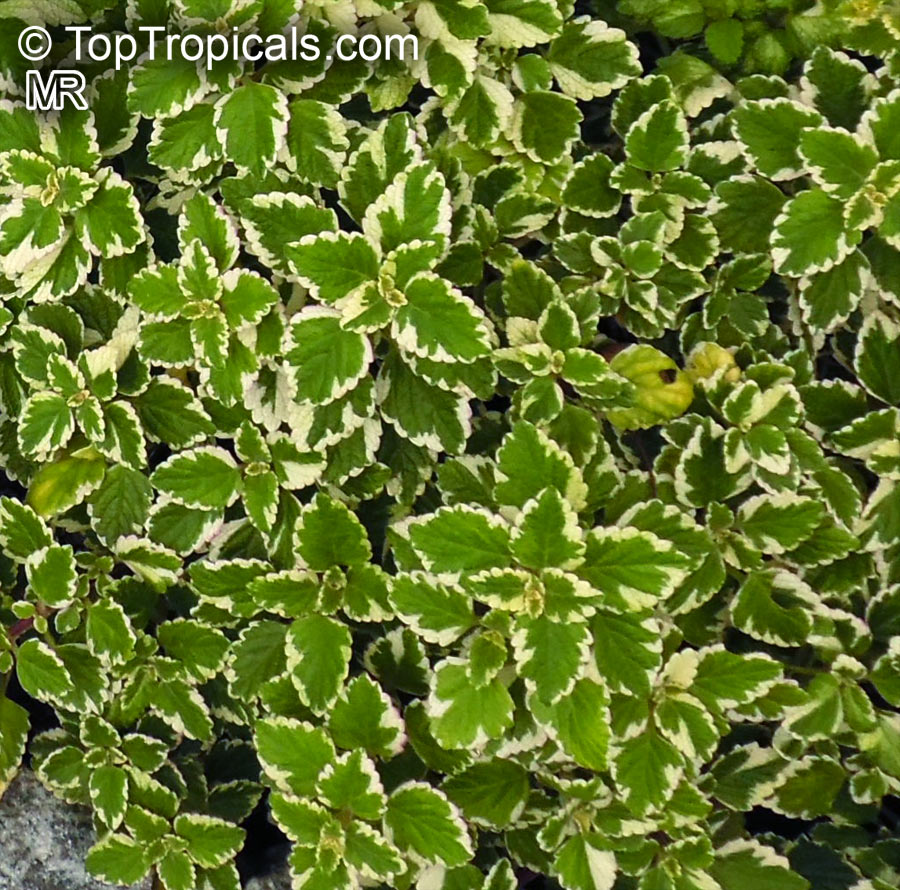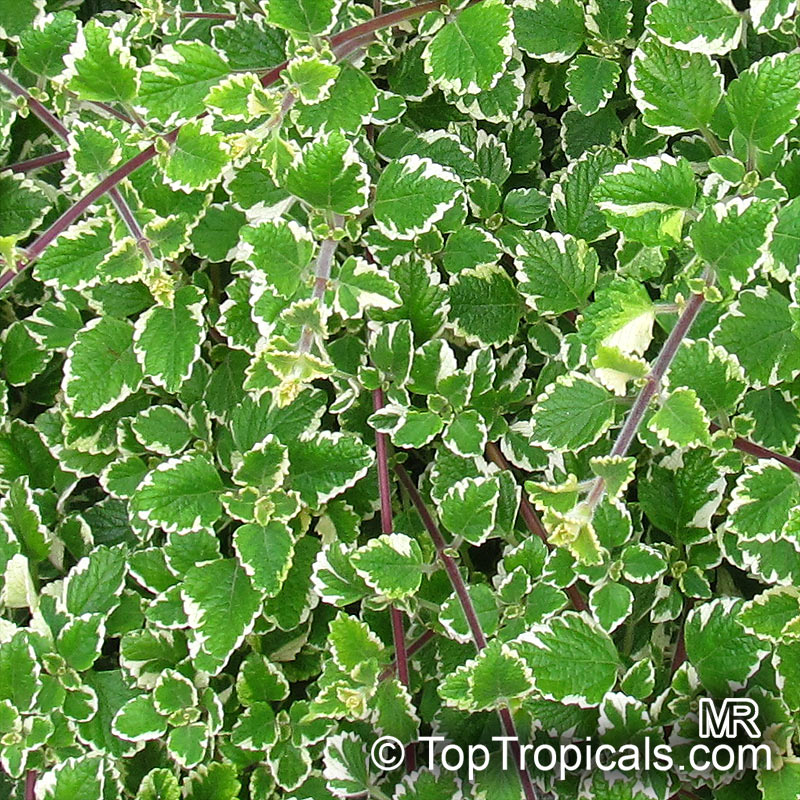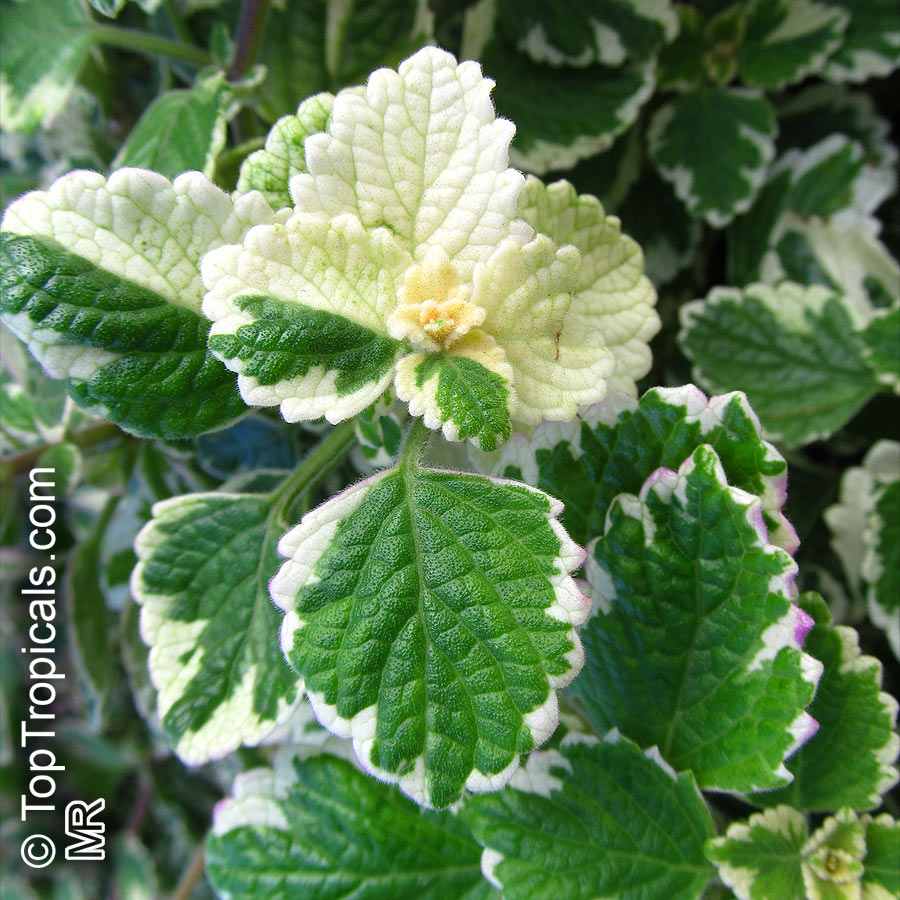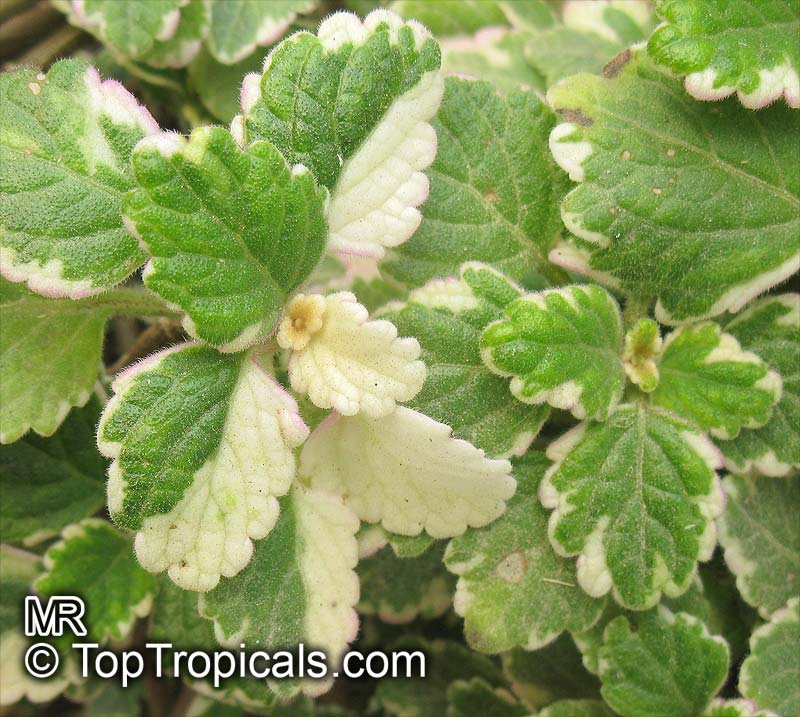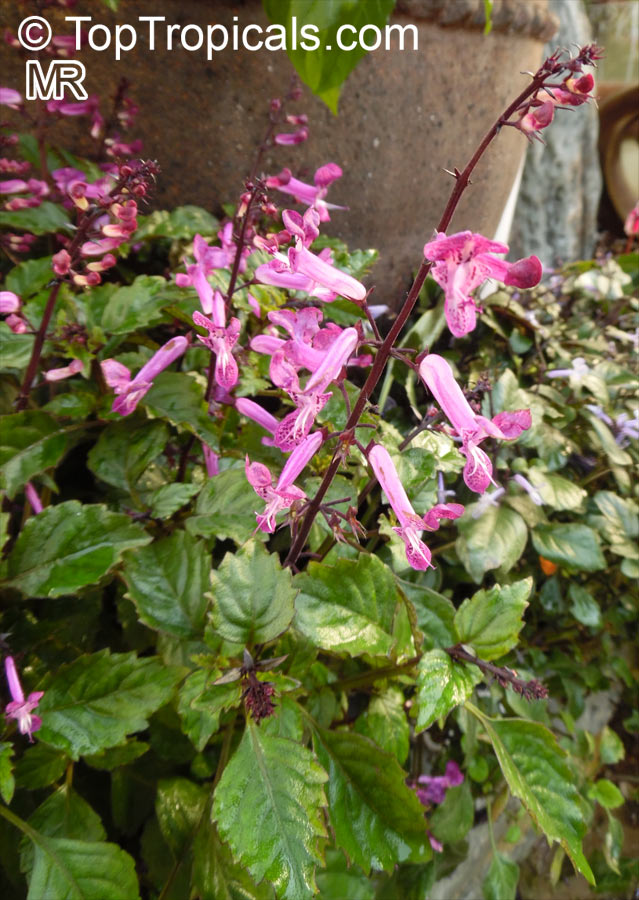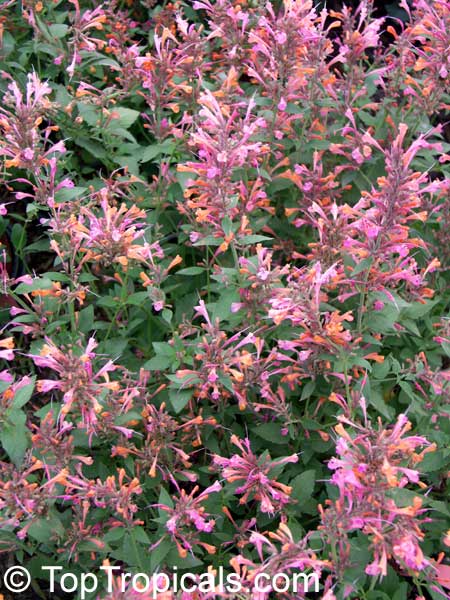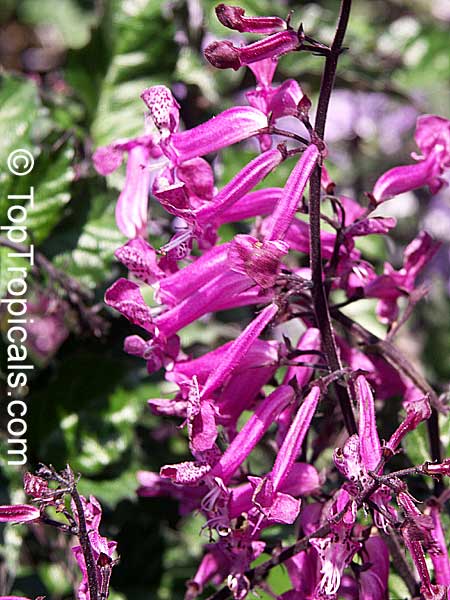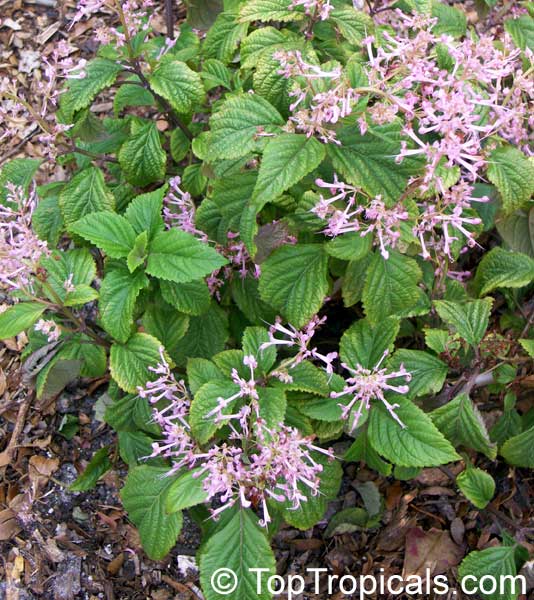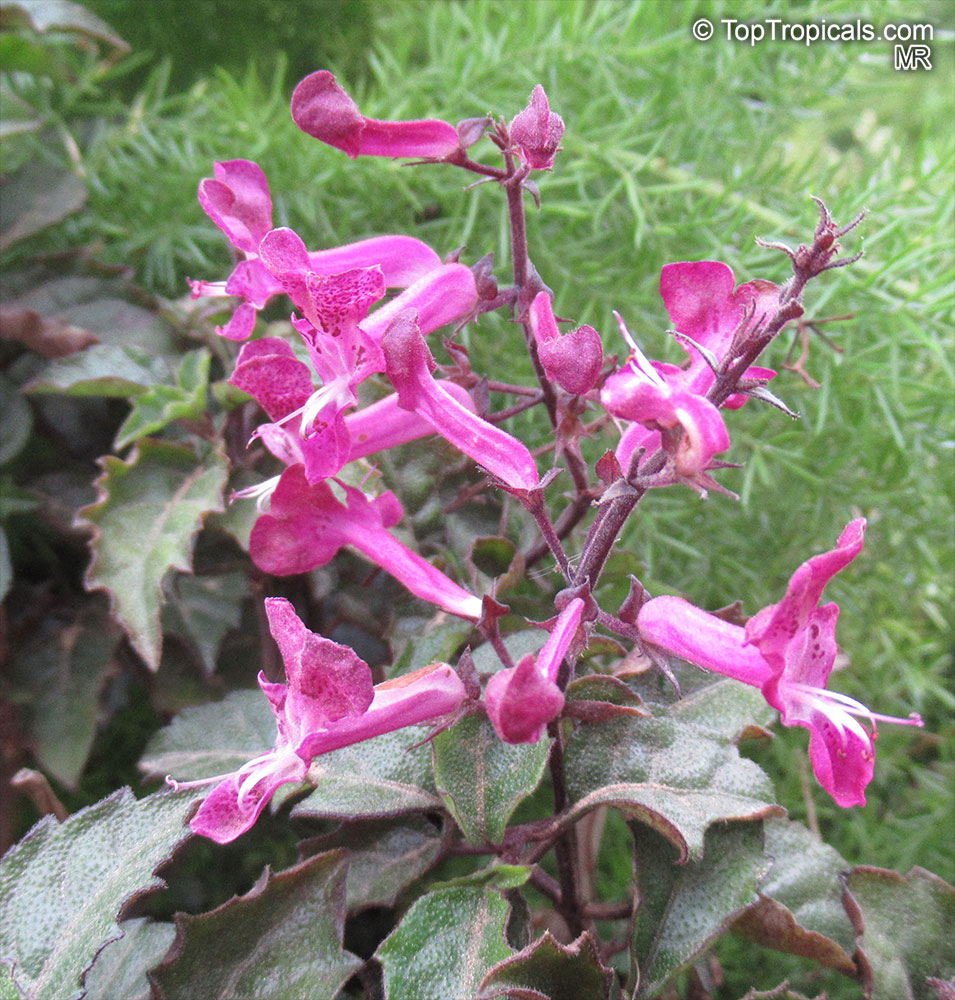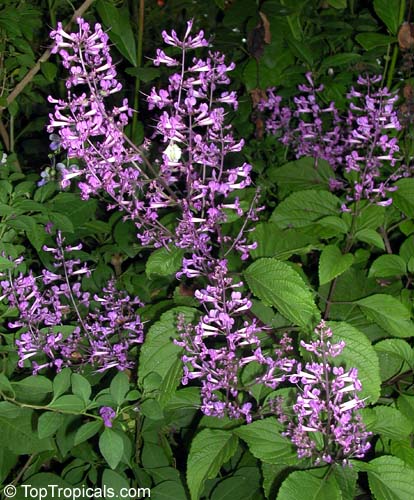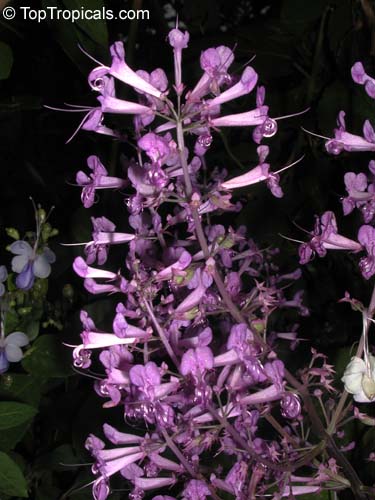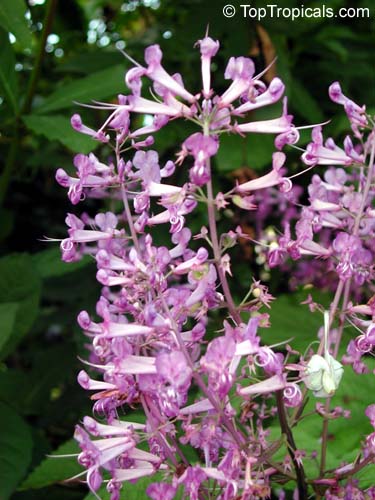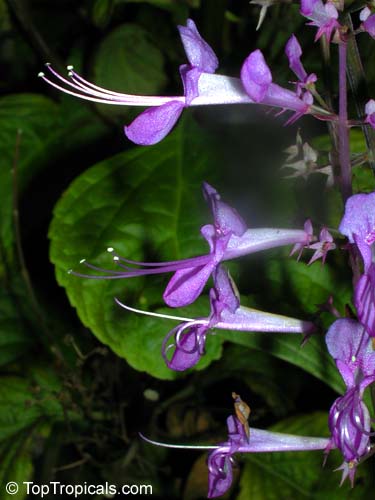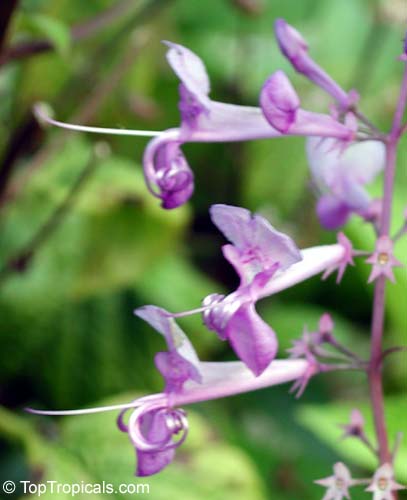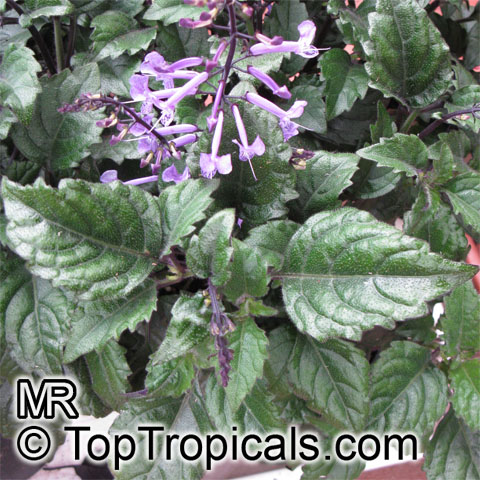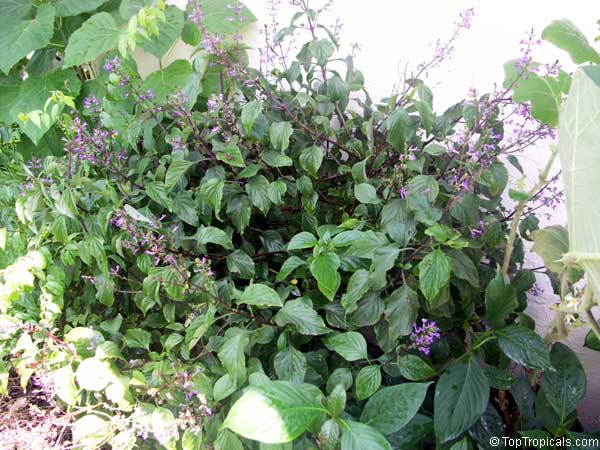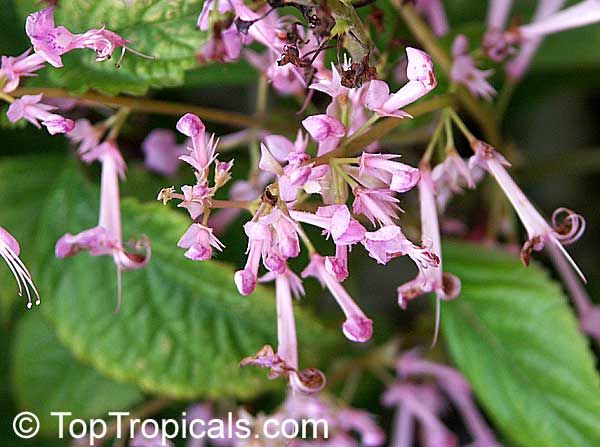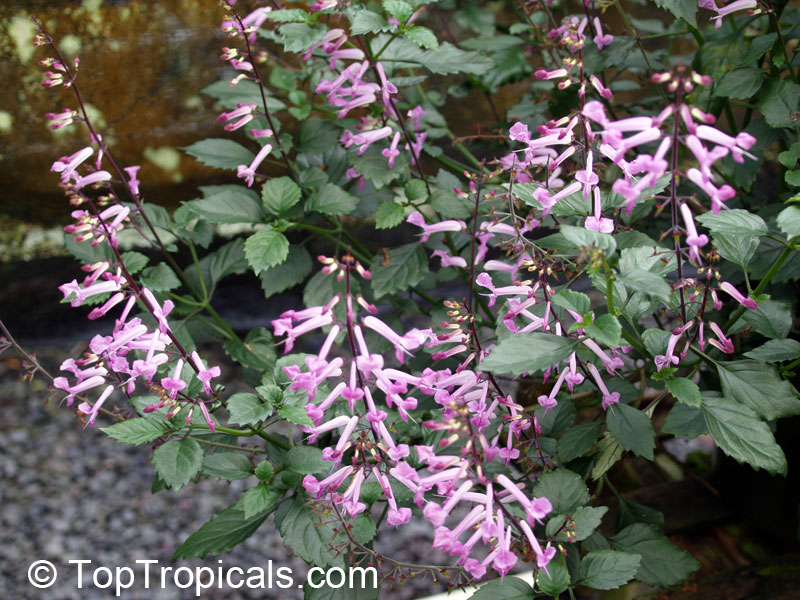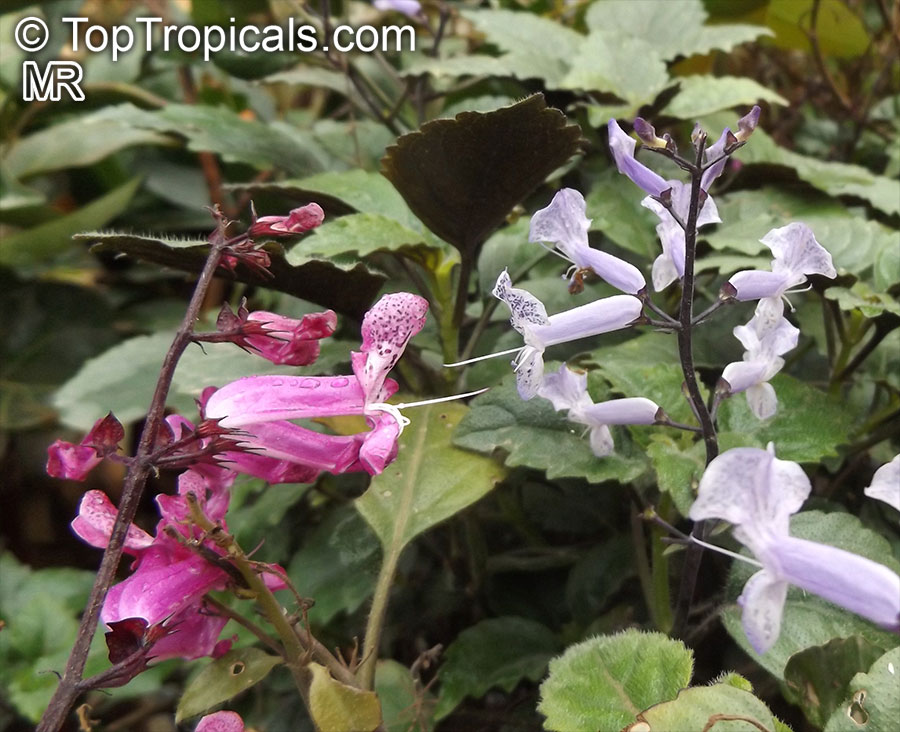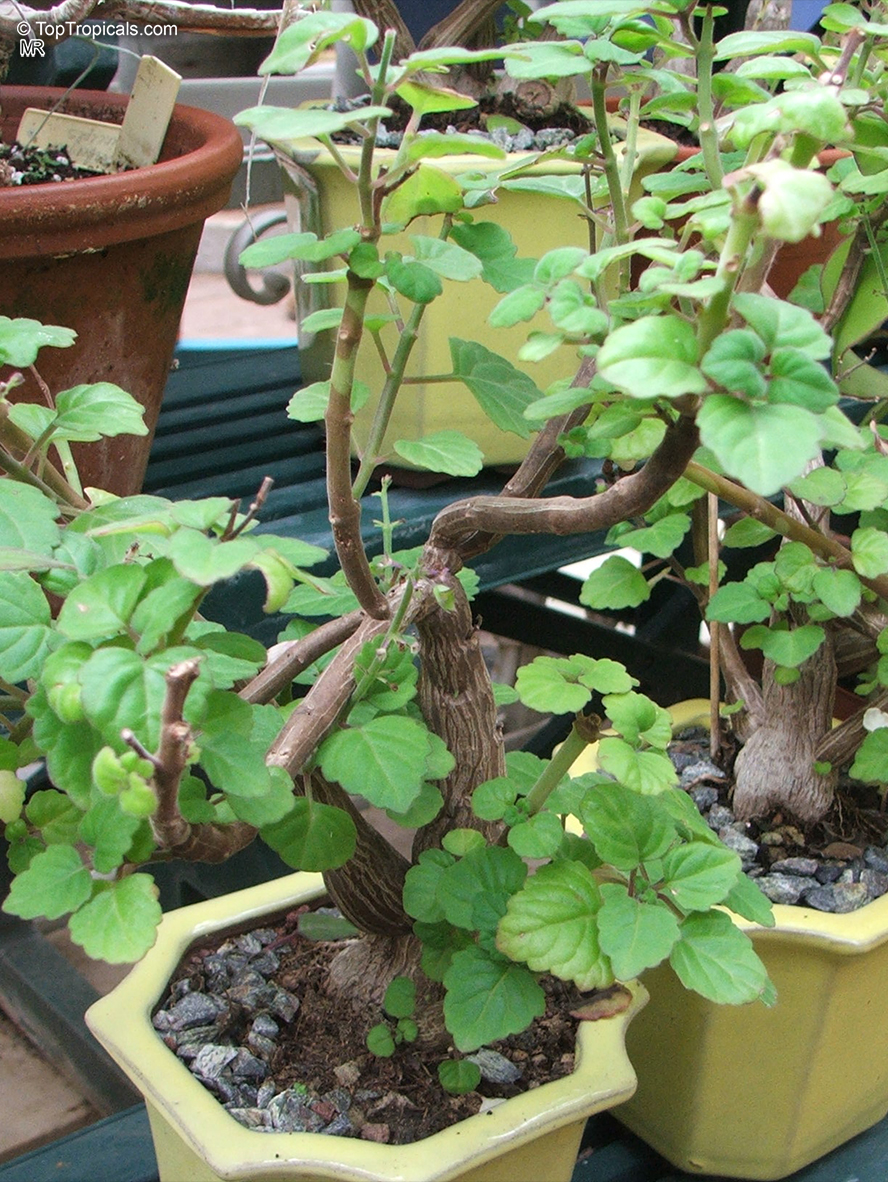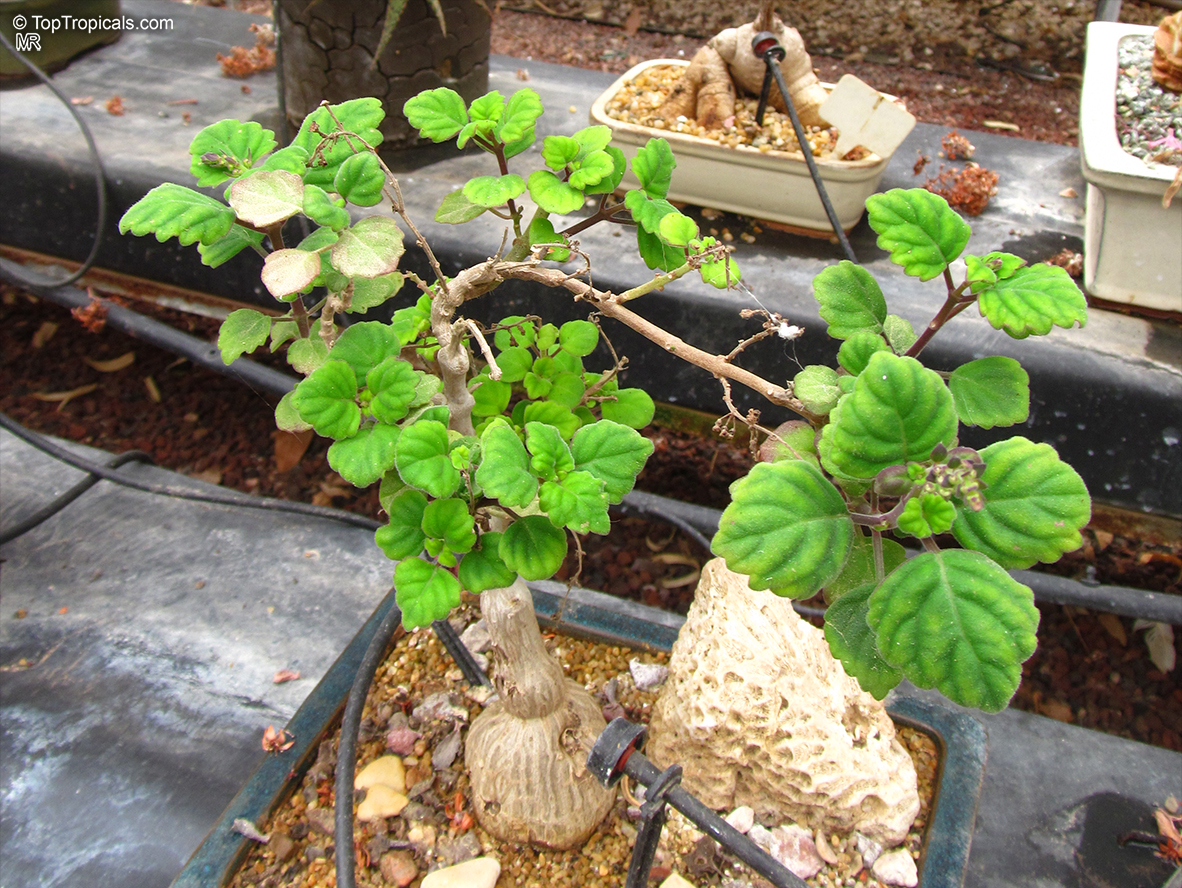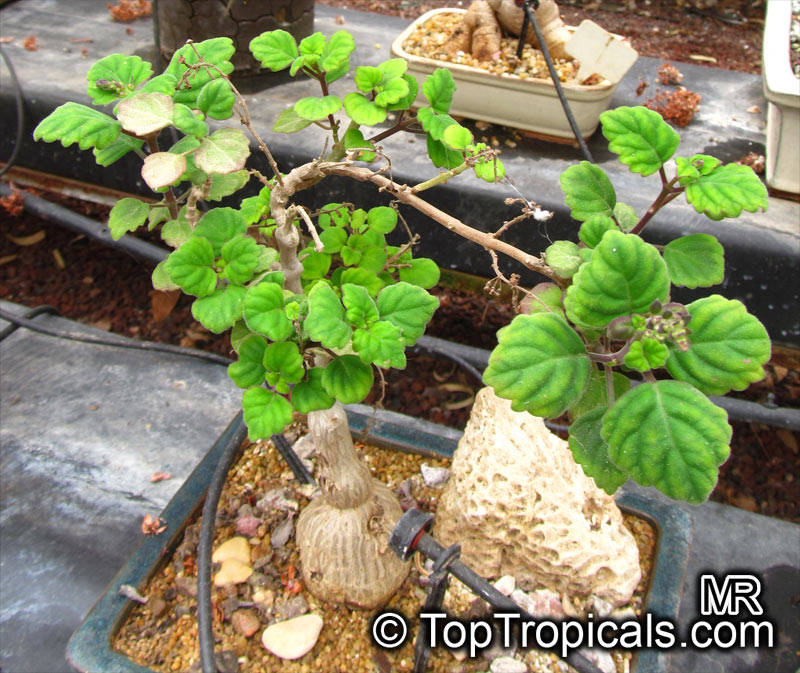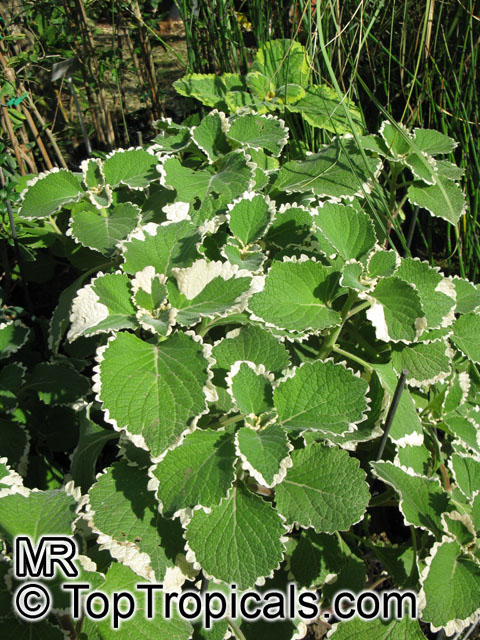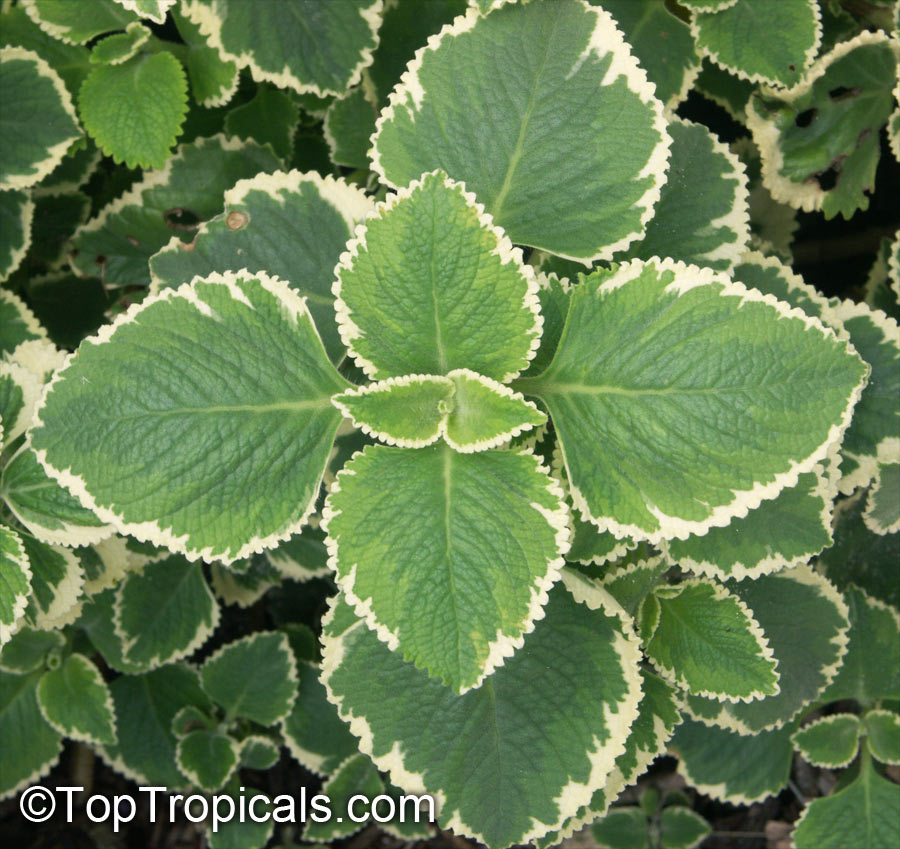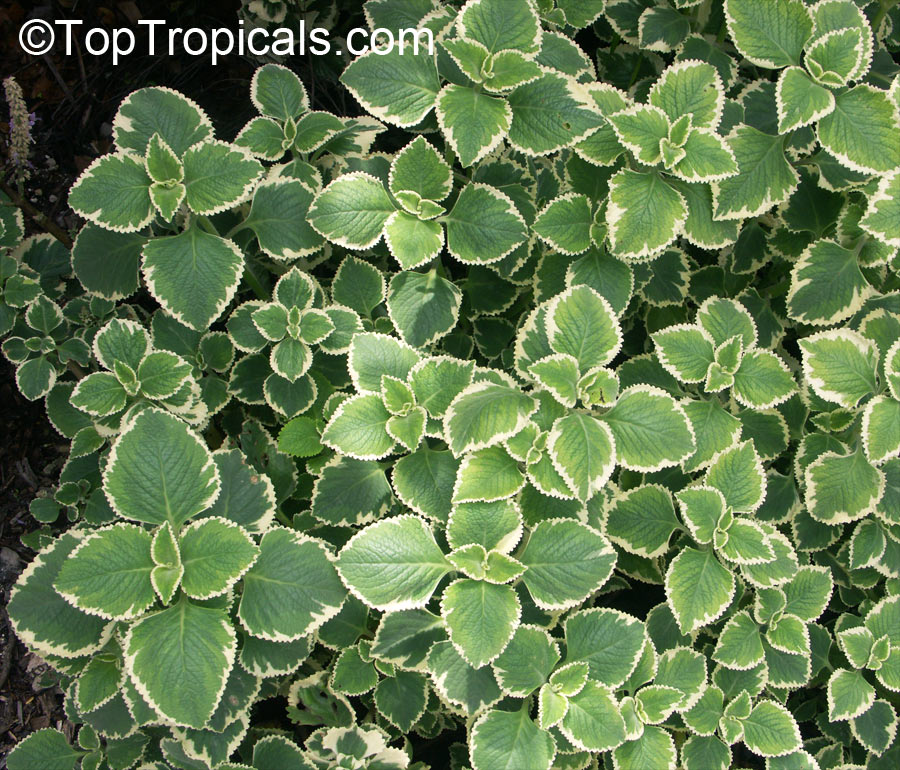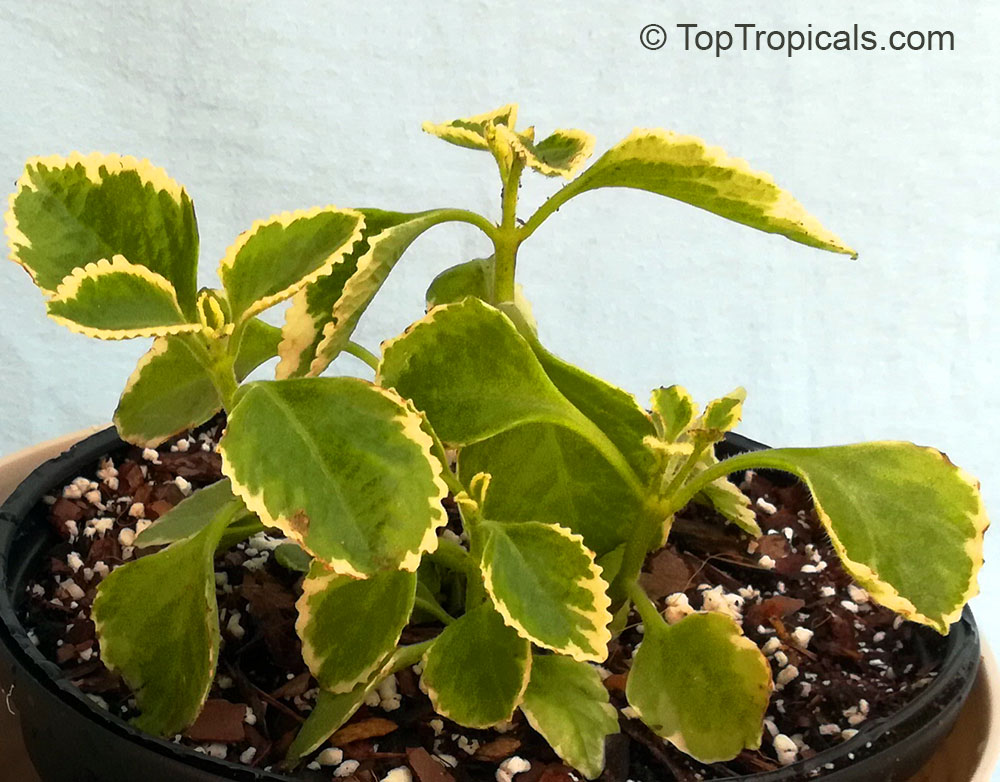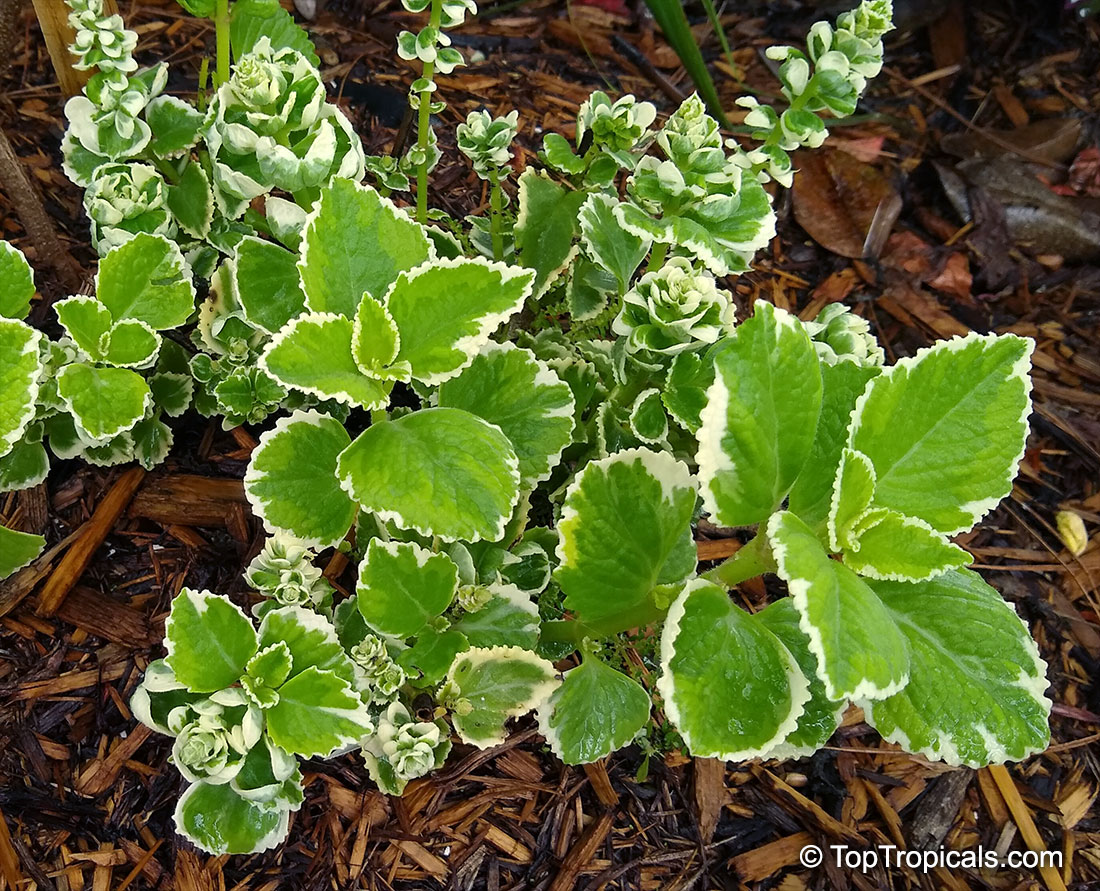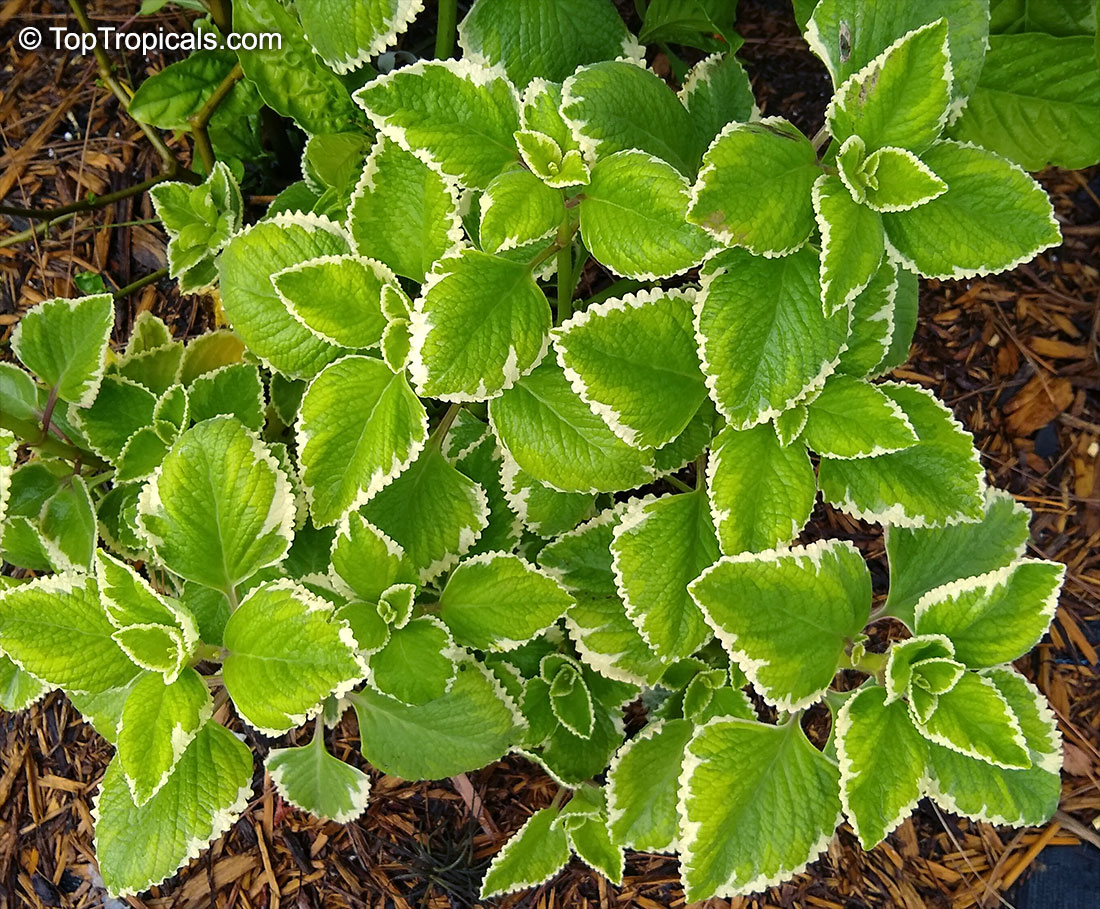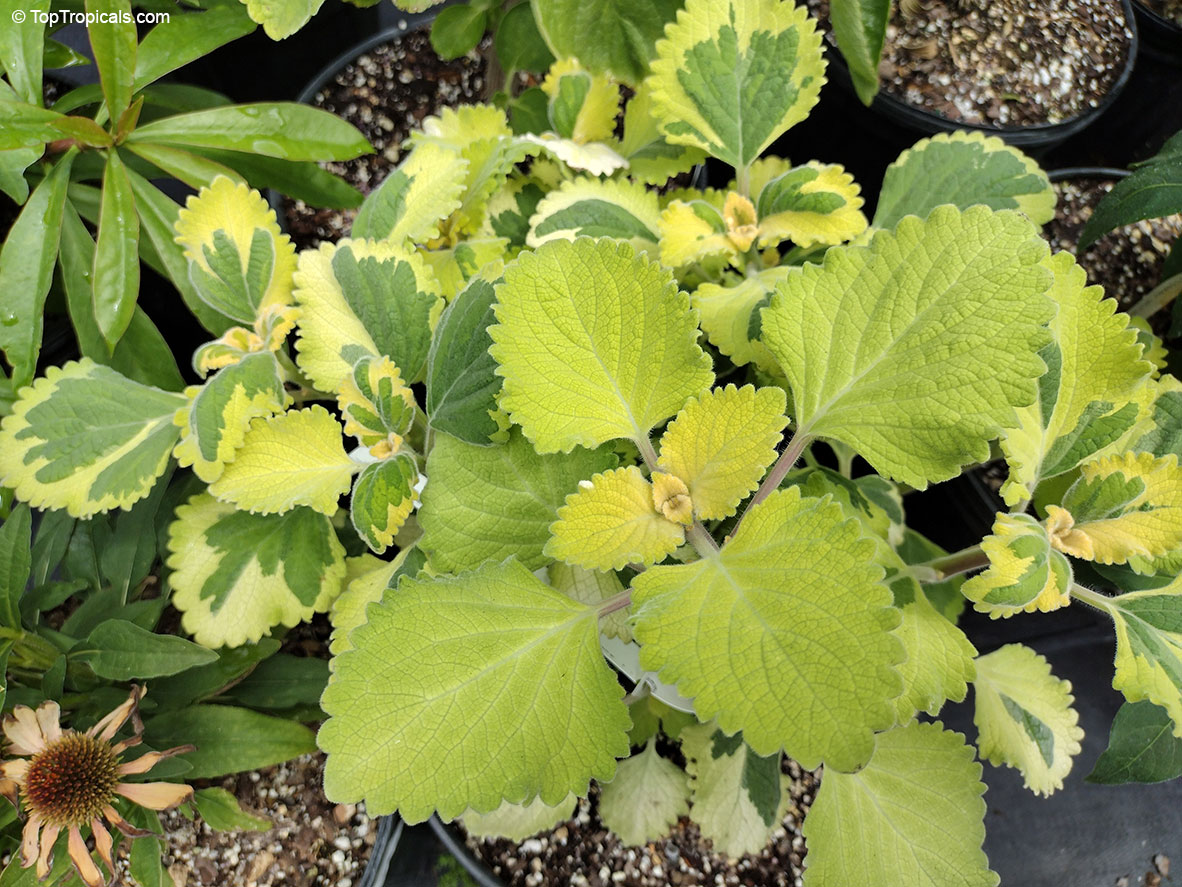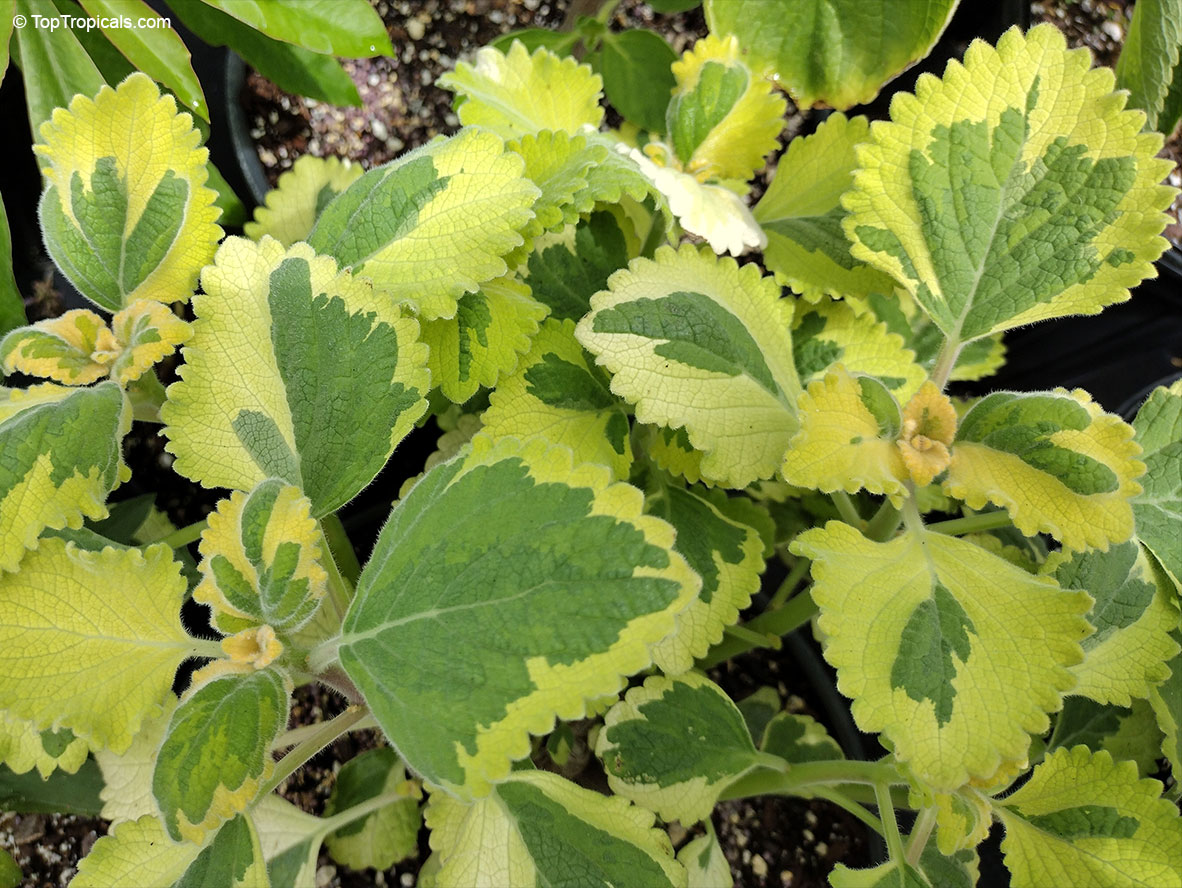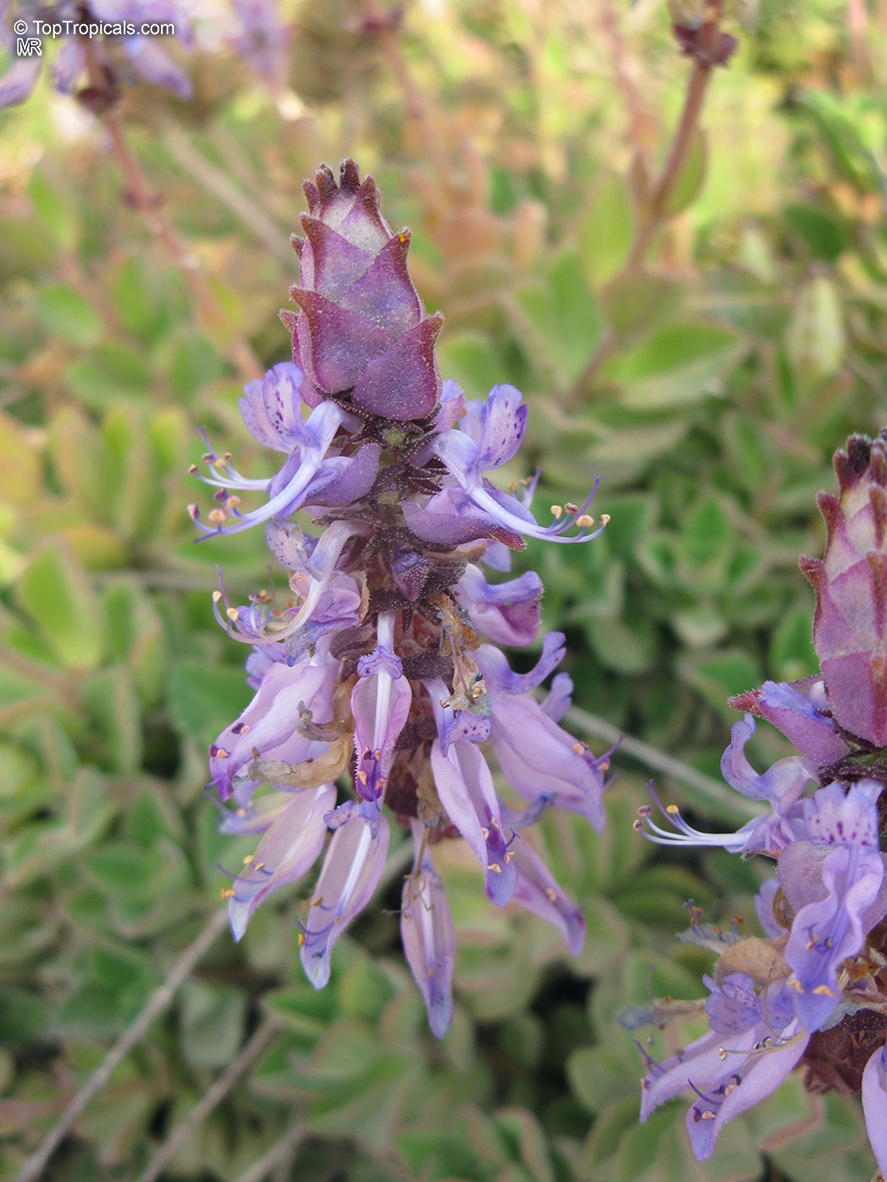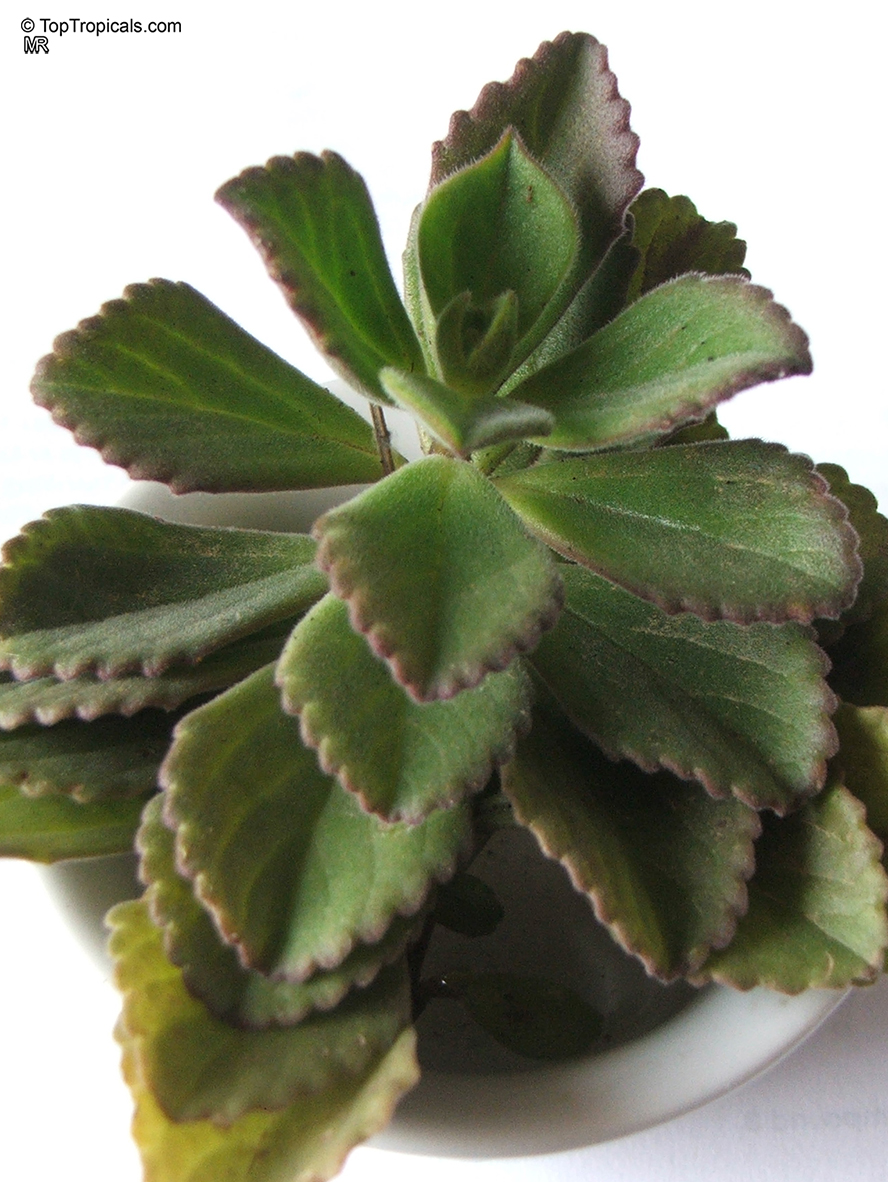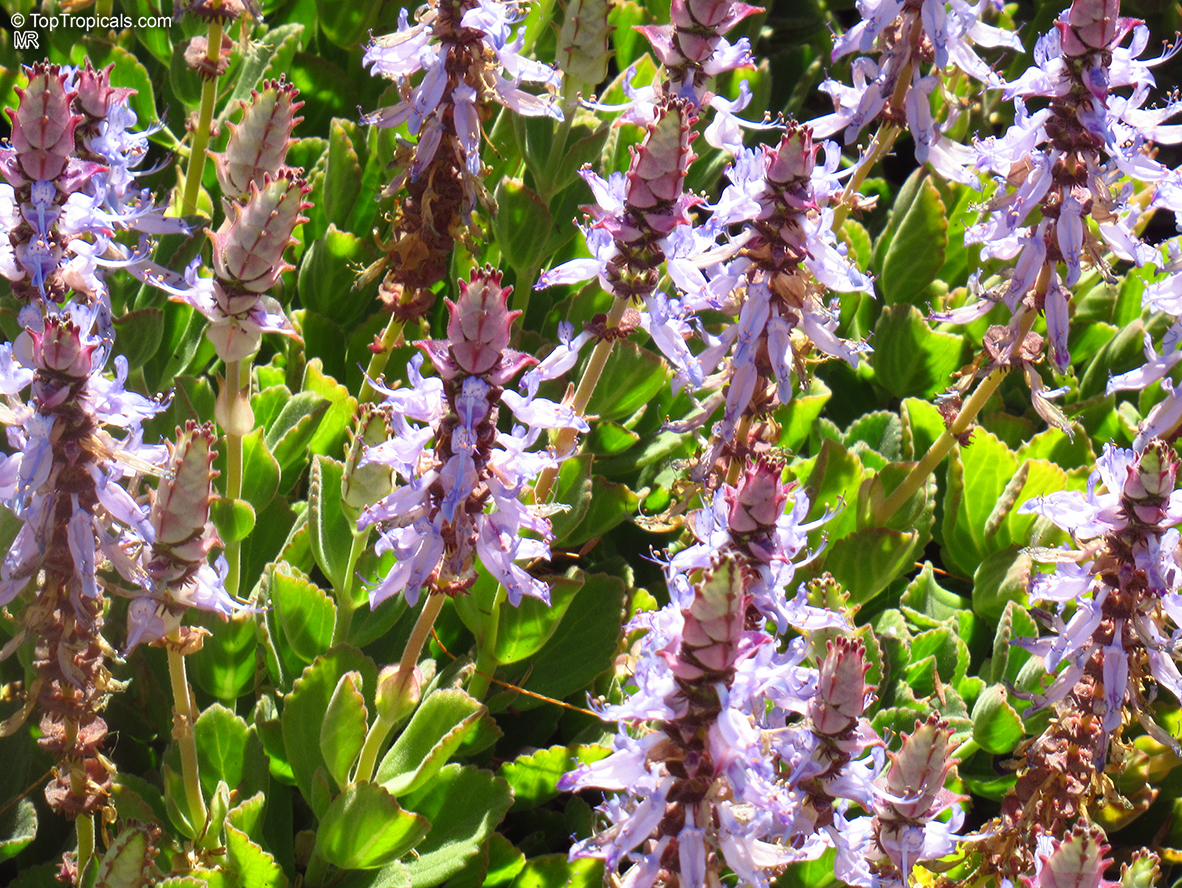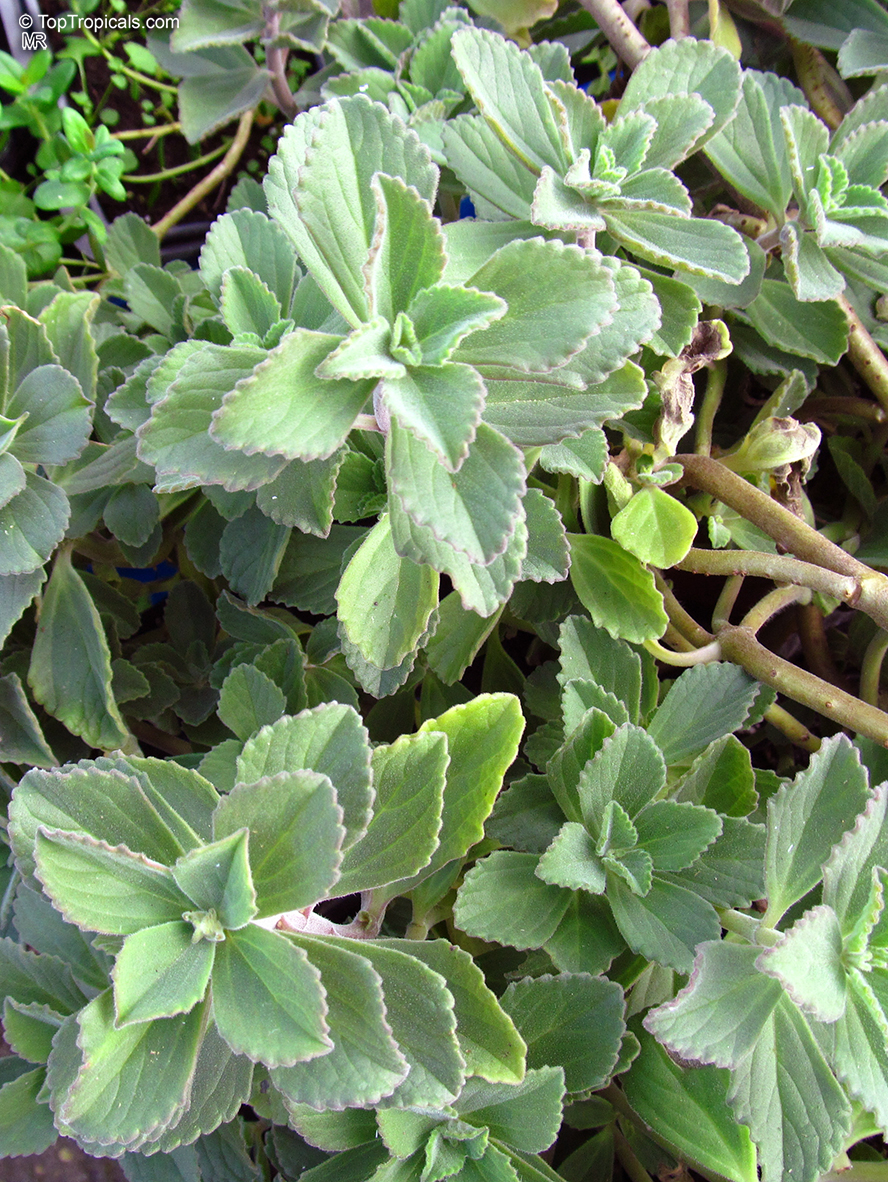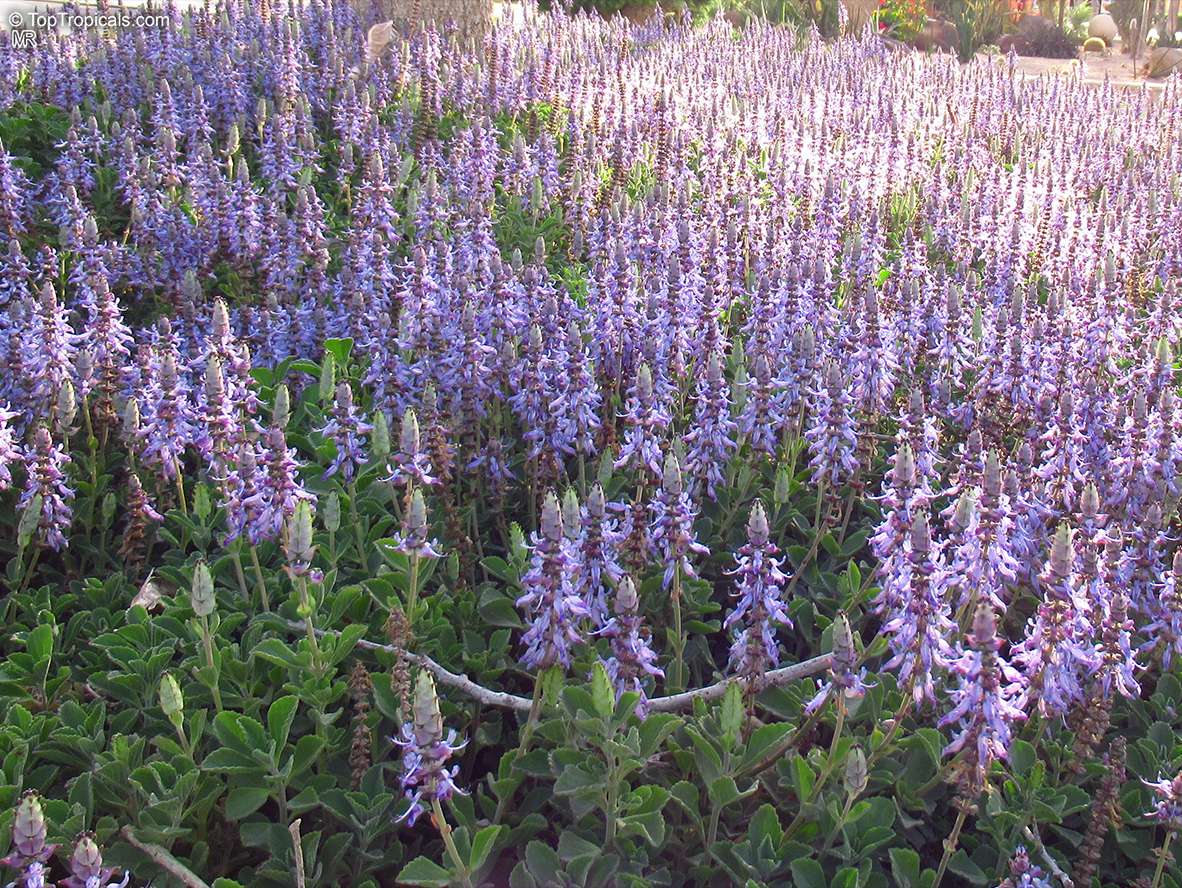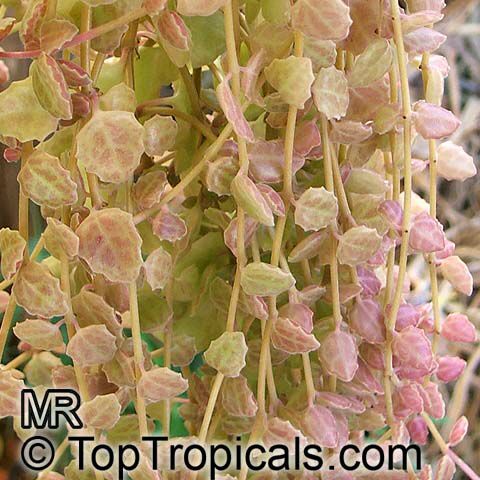Plectranthus - Plant Encyclopedia Results
Top Tropicals Plant Encyclopedia
| Number of plants found: 15 | Next | 
|
Go to page: | 1 | 2 |
Botanical names: Coleus barbatus, Plectranthus barbatus
Common name: Indian Coleus
Family: Lamiaceae
Origin: South America







Coleus barbatus, commonly known as Coleus forskohlii or Indian coleus, is a tropical perennial plant that is primarily grown for its medicinal properties and attractive foliage.
Coleus barbatus is relatively easy to cultivate, and it's often grown as an annual in cooler climates or as a perennial in warmer regions. In colder climates, Coleus barbatus can be grown as an annual or brought indoors before the first frost. It makes an excellent indoor plant if provided with adequate light and warmth during the winter.
Botanical names: Coleus scutellarioides, Solenostemon scutellarioides, Plectranthus scutellarioides, Coleus blumei verschaffeltii
Common names: Coleus hybridus, Painted Nettle
Family: Lamiaceae








This is a very reliable and predictable coleus that doesn't "drift". Growth Habit: Upright. Mature Height: 2 to 3 feet. Colorful Spring to Fall. Recommended Light: Full sun to light shade. This plant has an improved tolerance to high light intensities and a higher heat tolerance than most Coleus. Foliage is a very attractive and it keeps its color throughout the season. A great plant for foliage color.
Botanical name: Plectranthus argentatus
Common name: Silver Plectranthus
Family: Lamiaceae
Origin: Australia










Plectranthus argentatus (Silver Plectranthus) is a bushy or semi-trailing perennial native to Australia. This plant can easily make a stunning specimen in any garden, with its large felted silver leaves and candelabras of coleus-like flowers, in colors such as white, off-white, shades of blue, lavender, and purple. Not only are the blooms beautiful, but they also release a fragrance that can be likened to spices or herbs.
To thrive, Silver Plectranthus does best when planted in full sun or semi-shade, and requires regular or moderate watering, depending on the climate. The plant is hardy to USDA zones 9-11, so it can be grown outdoors if the climate permits it. Colder zones can also support Silver Plectranthus by growing them in decorative containers and ensuring a regular watering routine with good quality potting soil, but avoid overwatering. The soil should be kept moist, yet drainable, and pruning is recommended if the growth becomes too leggy. To maintain a container plant, it should be given a quality fertilizer and repotted every two years, as well as deadheaded and protected from frost.
Regardless of the climate, Silver Plectranthus is a robust, low maintenance plant that is relatively unstressed by pests and disease. Its showy foliage, vibrant blooms, and fragrant scent make it an essential feature in any garden. It is the perfect drought-tolerant plant that will make a captivating addition to any outdoor area!
Botanical name: Plectranthus australis
Common name: Swedish Ivy
Family: Lamiaceae





Plectranthus australis, or Swedish Ivy, is a fast-growing evergreen perennial with a sprawling habit. It is a member of the mint family, with round leaves with scalloped edges. It has fleshy square stems with opposite leaves and produces spikes of white or violet flowers in the summer. It is grown in USDA Zone 10-12 and makes a great ground cover and low-growing shrub that can reach up to two feet in height. Plectranthus australis can also be grown as a small shrub if the plant is pinched frequently to maintain a full habit, up to five feet tall.
Though Plectranthus australis can be grown in full sun, it prefers semi-shady spots. Regular watering is essential to keep the soil slightly damp. Plectranthus australis can be easily grown from cuttings. With clear, deep green foliage and ornamental, deep-colored leaves, this lovely shrub with an annual bloom is sure to be an eye-catching addition to any garden.
Plectranthus australis can grow in containers as well as in the ground, even in colder climates. When planting in a pot, be sure to select a container that is large enough to give the plant enough space for root growth. Poorer soils are best and so be sure to fill to at least two-thirds with a fast-draining soil. Regular watering is important, as with any plant, and also be sure to fertilize and prune as needed. If in a cold region, bring potted Plectranthus australis indoors during cold winter months and keep in a cool, bright spot.
Botanical name: Plectranthus coleoides
Common name: White-Edged Swedish Ivy
Family: Lamiaceae








Plectranthus coleoides (White-Edged Swedish Ivy) is a small plant that reaches 2-5 ft and is used as a groundcover and low-growing accent. It has beautiful white or off-white flowers that are fragrant and ornamental in style. It does best when placed in full sun or semi-shade depending on the climate and with moderate watering.
When planting Plectranthus coleoides in warm climates, it can be placed in the ground, however in cold regions, it is best to grow it in a pot to ensure that the soil keeps warm. To ensure proper growth and care of the plant, when placing it in a pot in a cold region, ensure that it is planted in well drained soil to prevent rotting and that the container is able to hold sufficient water to keep the plant hydrated. Place the pot in an area that gets plenty of sunlight, generally the sunniest location in your garden, and make sure to water the plant during periods of drought. Additionally, fertilize the soil every few months to ensure maximum growth.
With proper care and attention, Plectranthus coleoides can be a beautiful and vibrant addition to any garden. Its ornamental foliage and fragrant flowers will be sure to delight.
Botanical name: Plectranthus ecklonii
Common name: African Flower
Family: Lamiaceae
Origin: South Africa





It is a soft, erect, fast growing shrub to 3 metres tall. The leaves are arranged in opposite pairs on the square stems, the latter with tufts of purplish hairs along the nodes. The ovate to ellilptical leaves are fairly large bearing a wedge shaped base and acute apex. The inflorescence is a terminal panicle. The two-lipped corolla that is long, bluish-purple, rarely pink or white with a straight tube. Plants flower from March to May with a peak in April. The plant has small nutlets which are black or dark brown. P. ecklonii has a wide distribution from Somerset east in the Eastern Cape to Barberton in Mpumalanga. It is confined to moist coastal subtropical and afrotemperate Forest and forest margins. Rainfall is mainly during summer. Growing Plectranthus ecklonii In the garden Plectranthus ecklonii is an attractive and popular garden subject. Mass planting of the blue, white and pink cultivars are very striking. P. ecklonii is best grown in partial shade. It is recommended for gardens where frost is not too severe. In colder climates it can be grown as a container house plant indoors. P. ecklonii is a fast growing pioneer shrub and very suited for shady gardens. It will flower profusely the first season after planting. Plant about 30" apart. Prune back hard after flowering during midwinter. There are three available cultivars. P. ecklonii 'Medley-Wood' the common garden cultivar with blue flowers. P. ecklonii 'Tommy', with white flowers. P. ecklonii 'Erma', with pink flowers. P. ecklonii is easily propagated from cuttings or seed. Cuttings can be planted like perennial grass 'in situ'. Cuttings should be about 7"/10" long, with the top leaves kept. Keep moist and rooting is rapid. Cuttings can also be rooted in sand or other appropriate cutting medium. The best time to take cuttings is spring or summer. Keep them in a shady, but well lit terrain. Seeds can be planted in a shallow standard seed tray in standard soil. Cover with a thin layer of sand and keep moist. Keep in a shady but well lit environment. Germination is rapid and the seedlings can be planted out in individual bags as soon as they are large enough to handle. By materials of the site: plantzafrica.com
See Plectranthus ecklonii 'Mona Lavender'.
Botanical name: Plectranthus ernstii
Common name: Caudiciform Plectranthus
Family: Lamiaceae
Origin: South Africa






A well-drained soil, some water and some sun. The swollen stem grows to five centimetres in diameter and 30 centimetres high. The flowers are white with a shine of blue.
Botanical names: Plectranthus forsteri, Plectranthus nicodemus
Common names: Fragrant Plectranthus, Variegated Basil
Family: Lamiaceae







Excellent variagated, fragrant herb that is ideal in mixed containers and patio planters. Leaves are used for cooking as basil. Great in full sun to part shade. Grows 10-14" tall. Fertilize every 2 weeks with an all-purpose fertilizer for best growth. Keep soil moderately moist.
Botanical name: Plectranthus neochilus
Common name: Lobster Flower
Family: Lamiaceae
Origin: South Africa








A large plant with light green foliage and a strong medicinal, camphor scent. Discovered in South Africa by June Croon, and named in honor of her sister, noted plantswoman Lois Woodhull of Lang Island, NY. Velvety green leaves surround blue, salvia-like flower spikes. Blooms nonstop from spring through late fall.
Botanical name: Plectranthus prostratus
Common names: Pillow Plant, Succulent Swedish Ivy
Family: Lamiaceae







| Next |  |
Use link to repeat this search:
https://toptropicals.com/cgi-bin/garden_catalog/cat.cgi?find=Plectranthus&search_op=and&keyword_op=and&language=e&number=10
&no_change_lang=1&user=tt&sale=1&first=0
